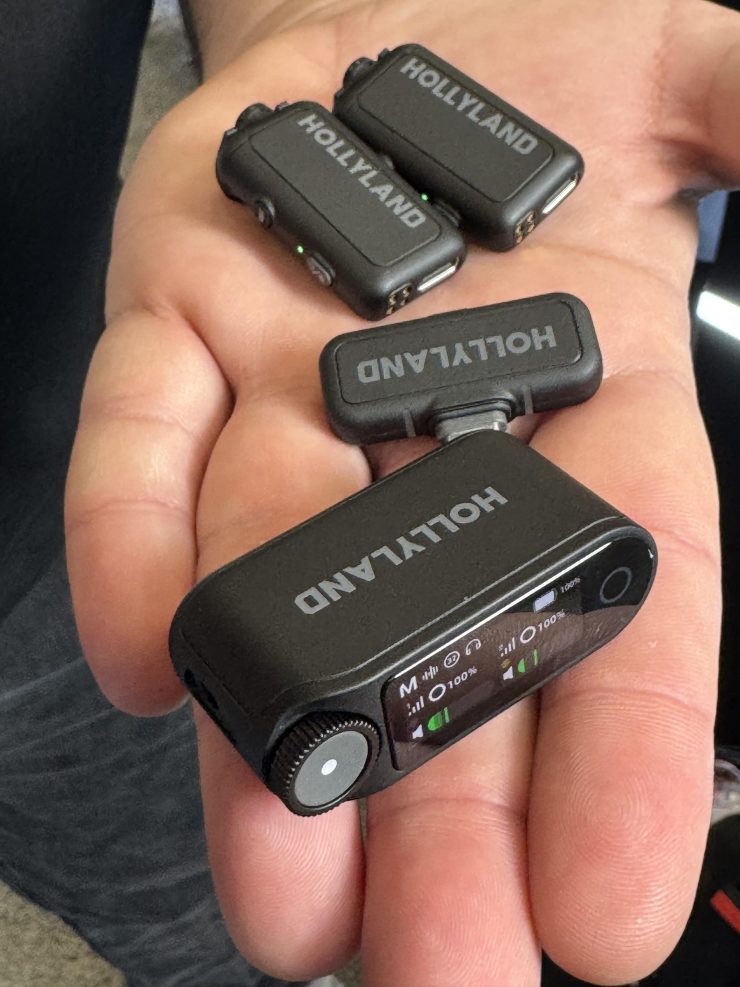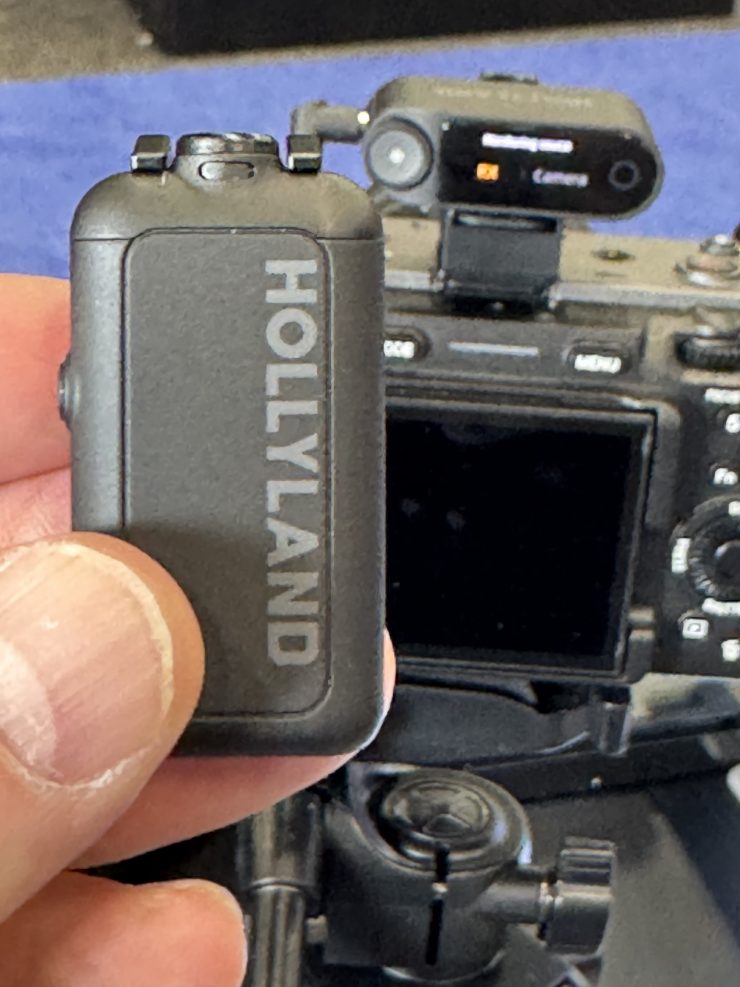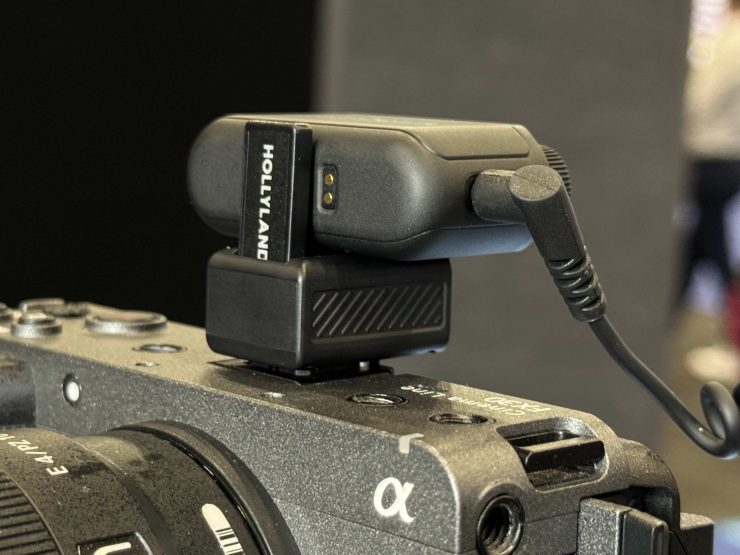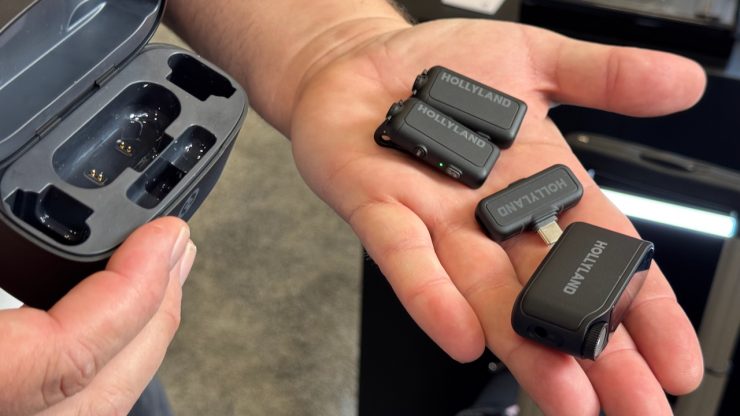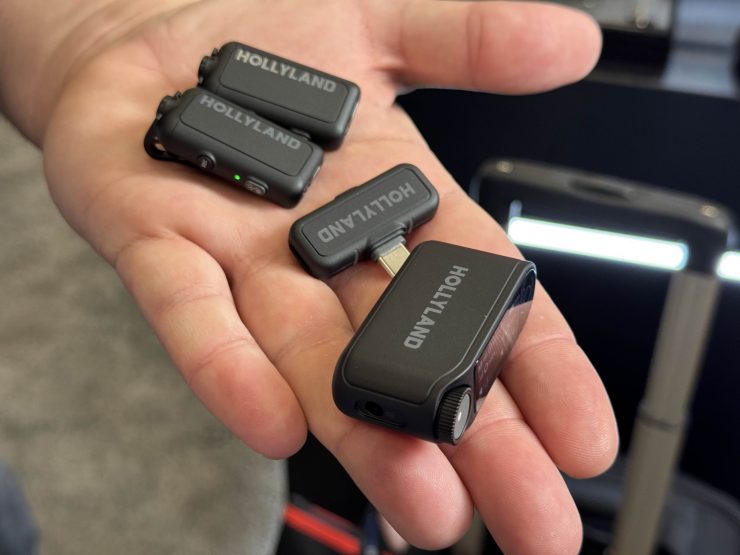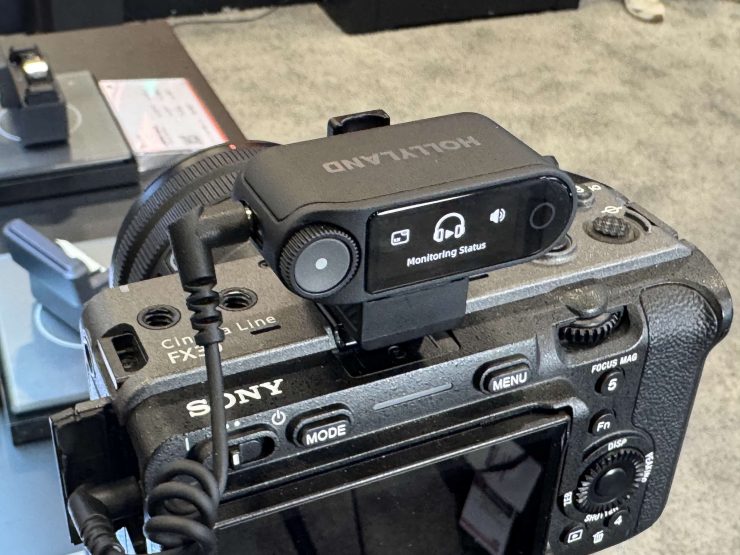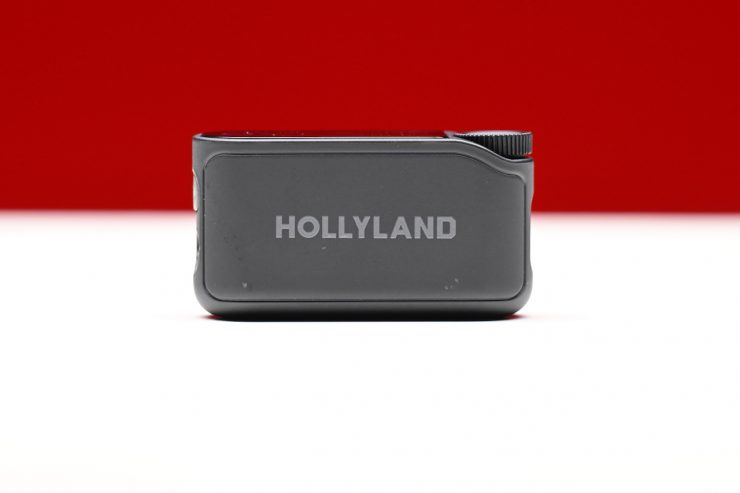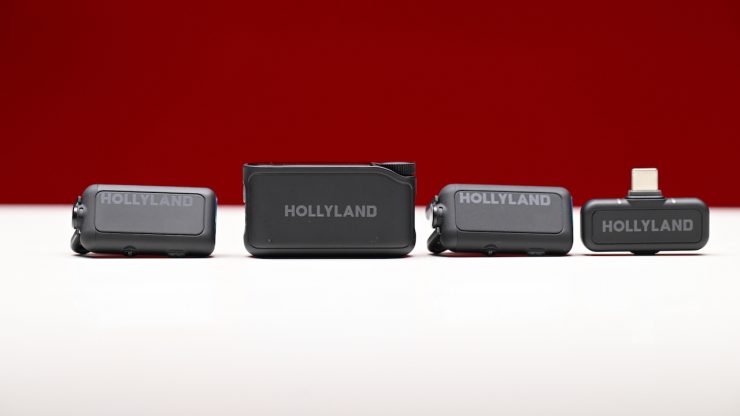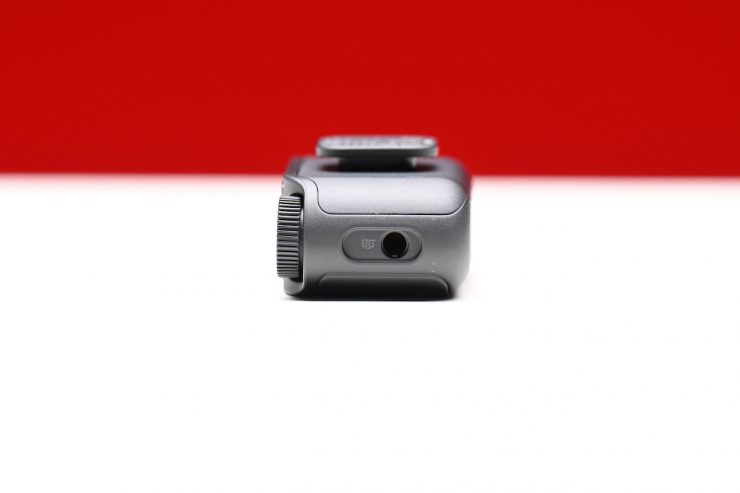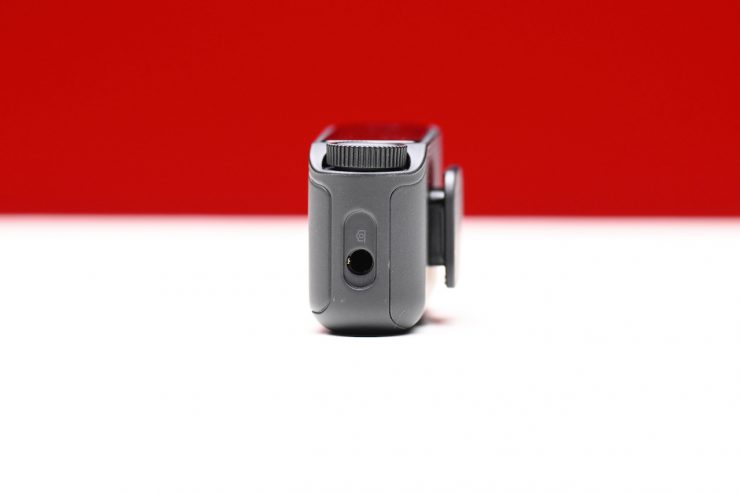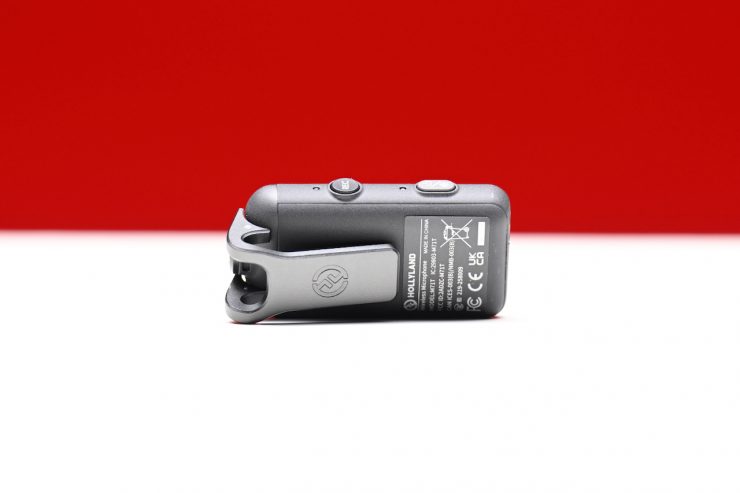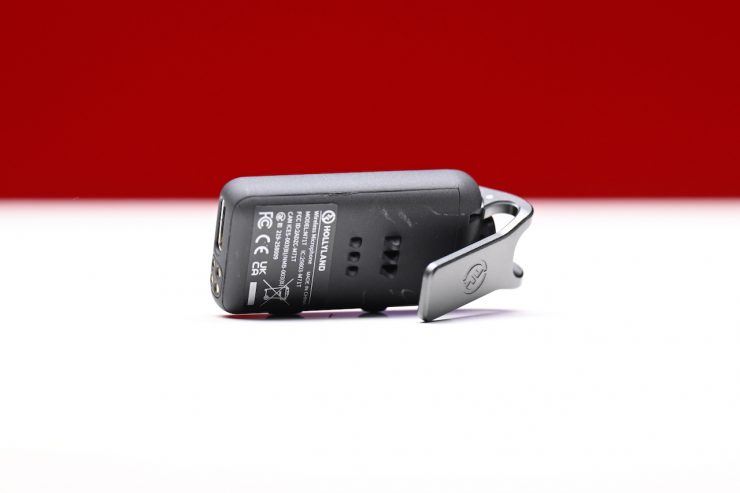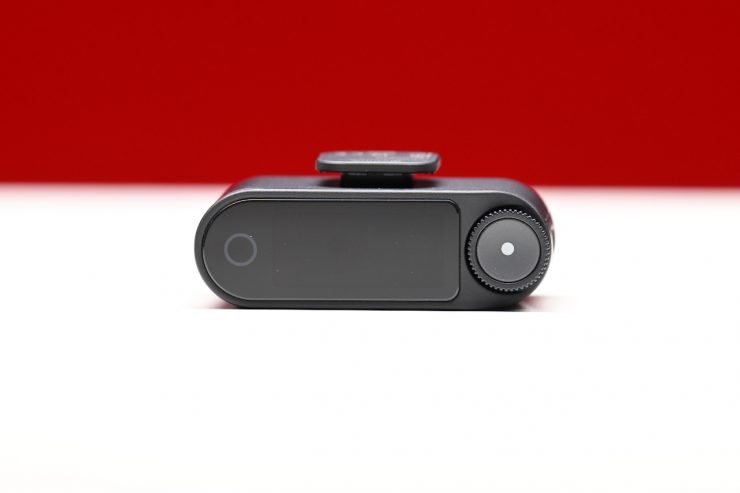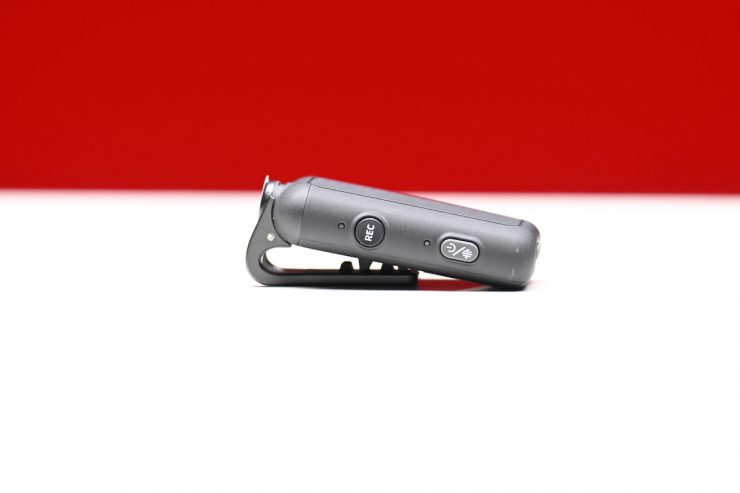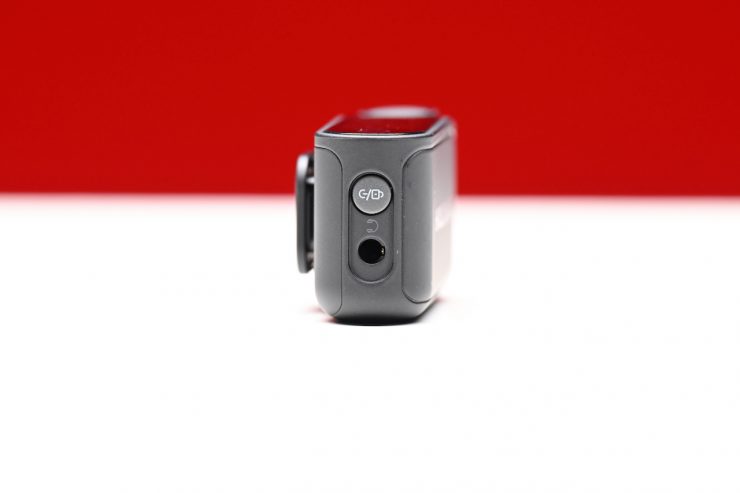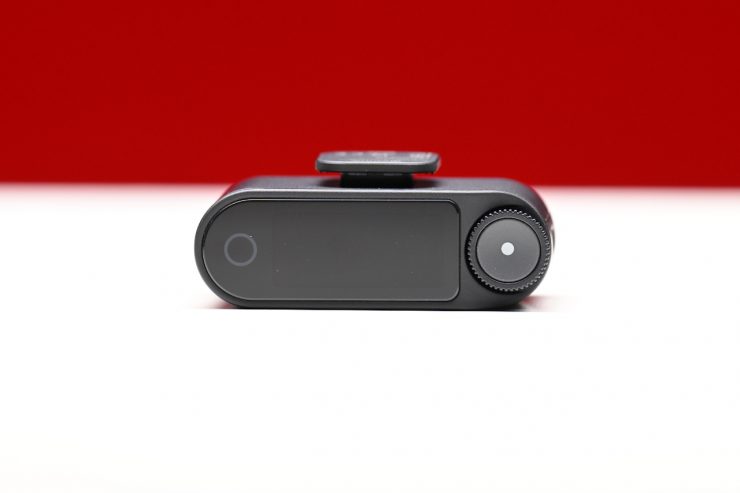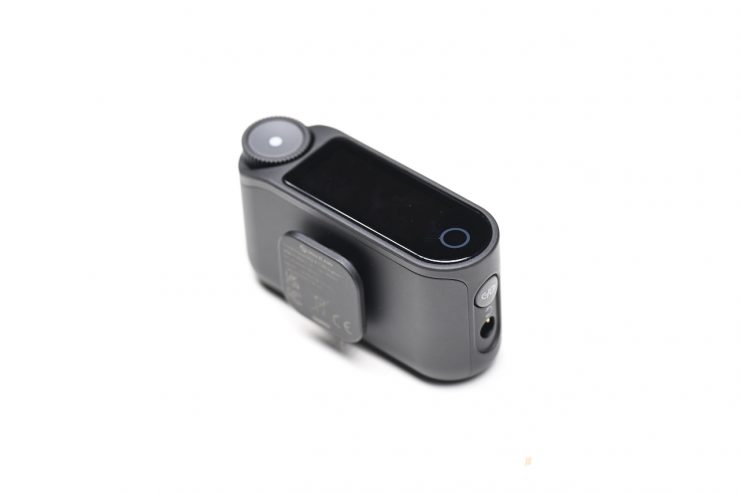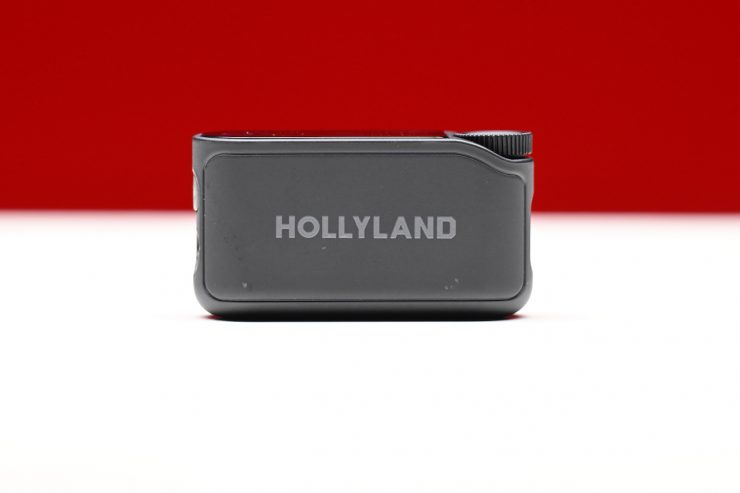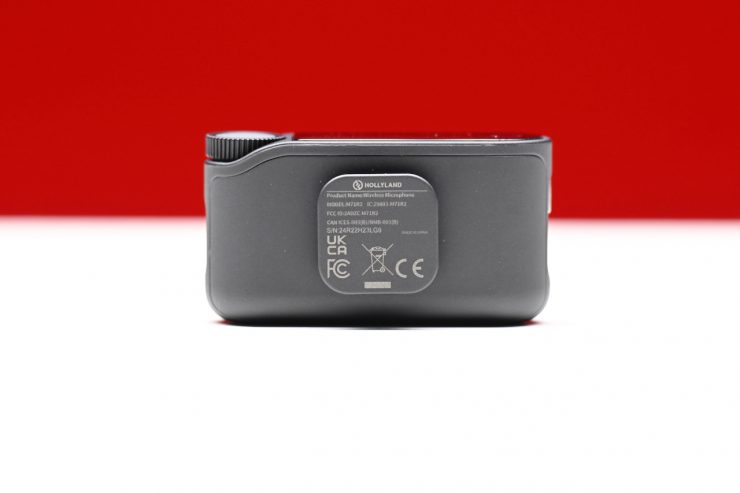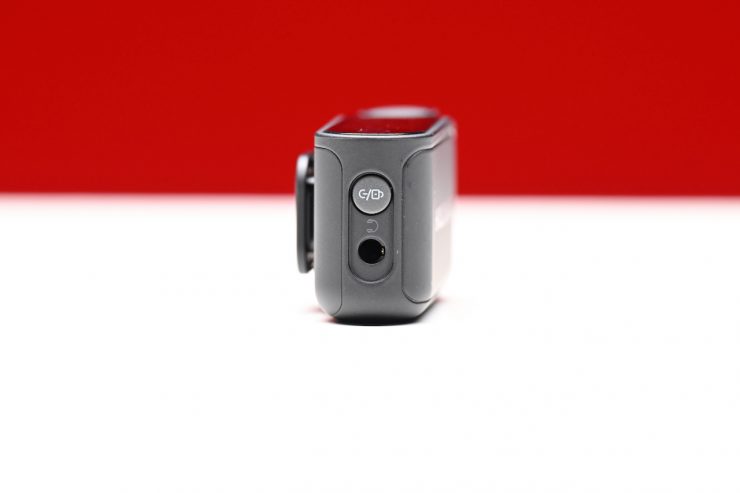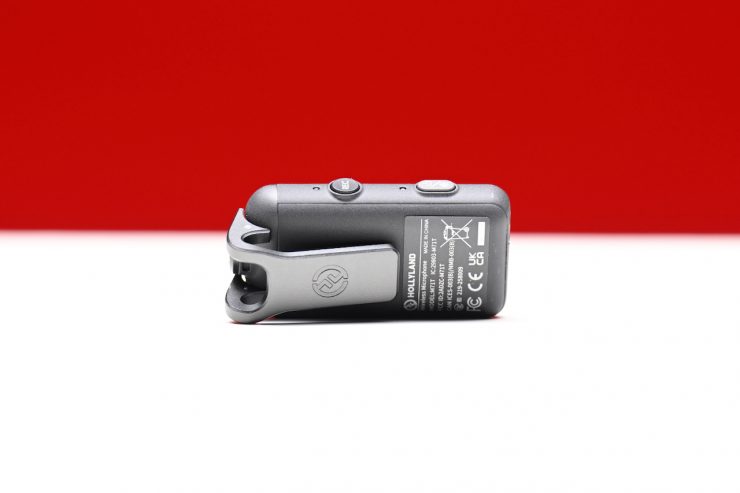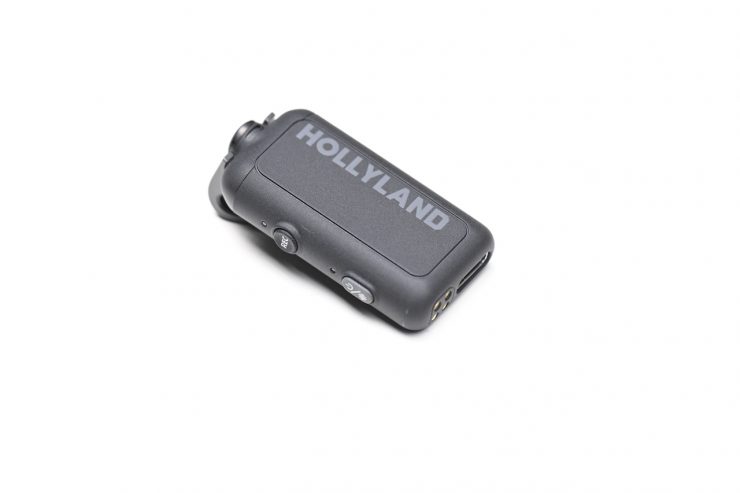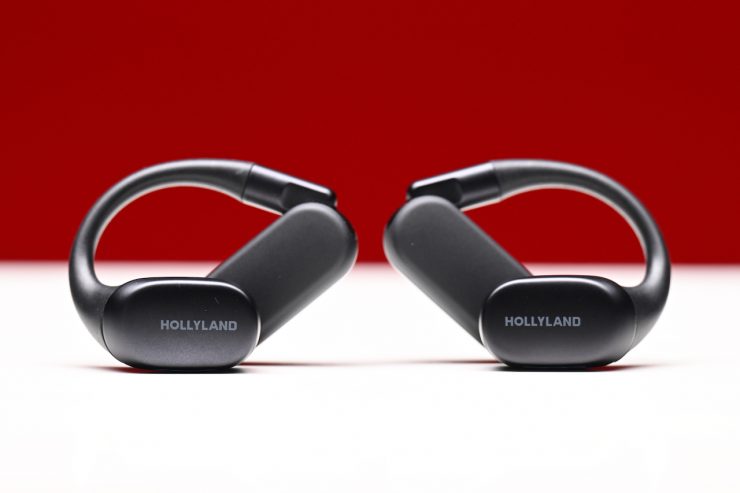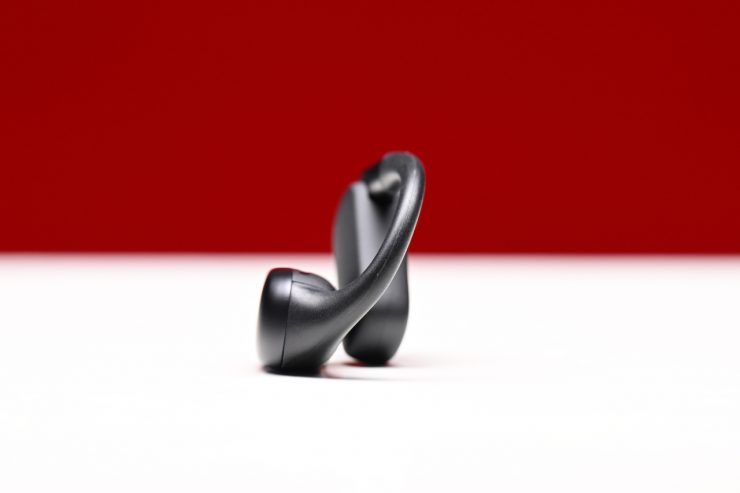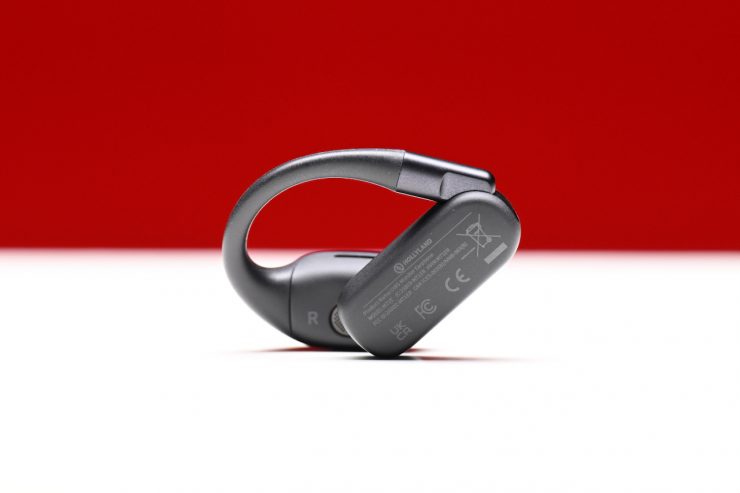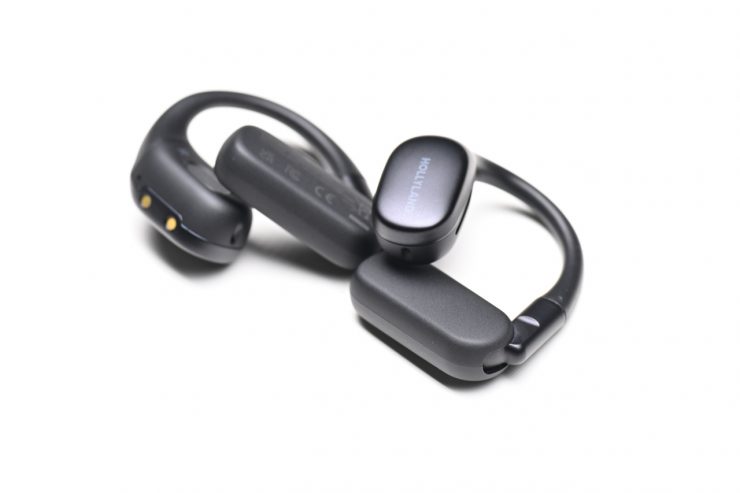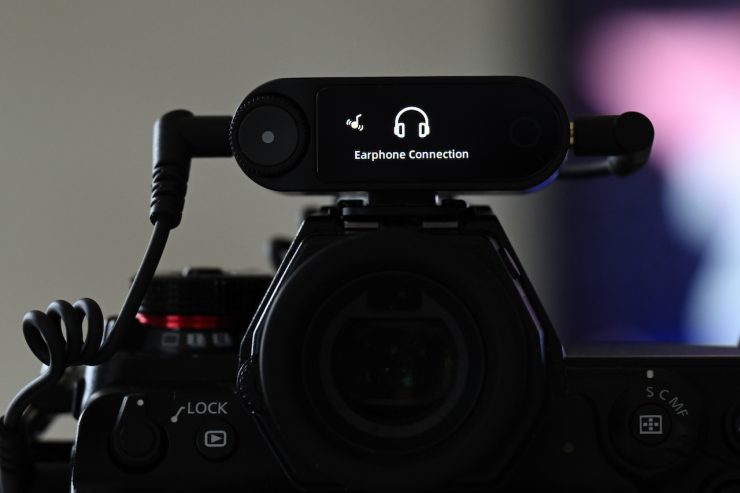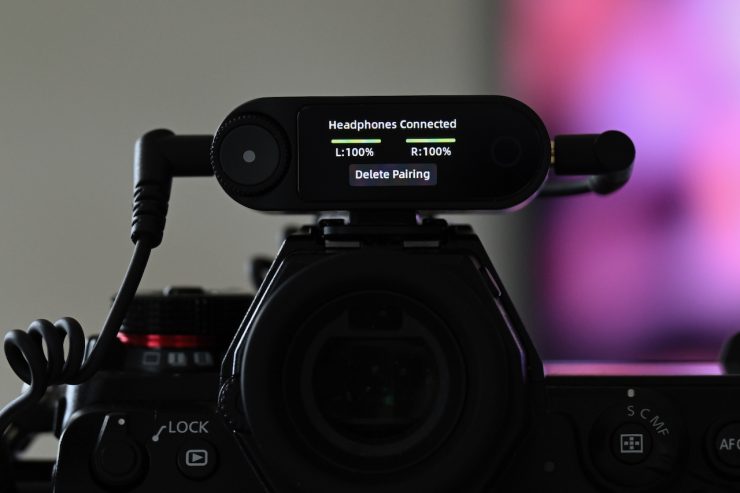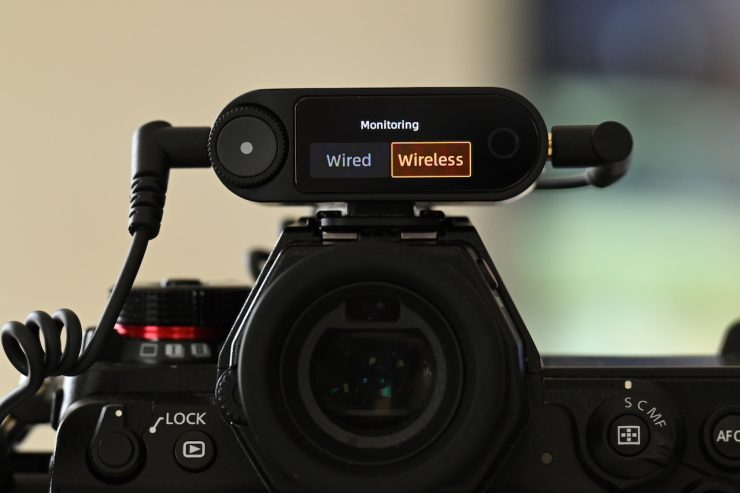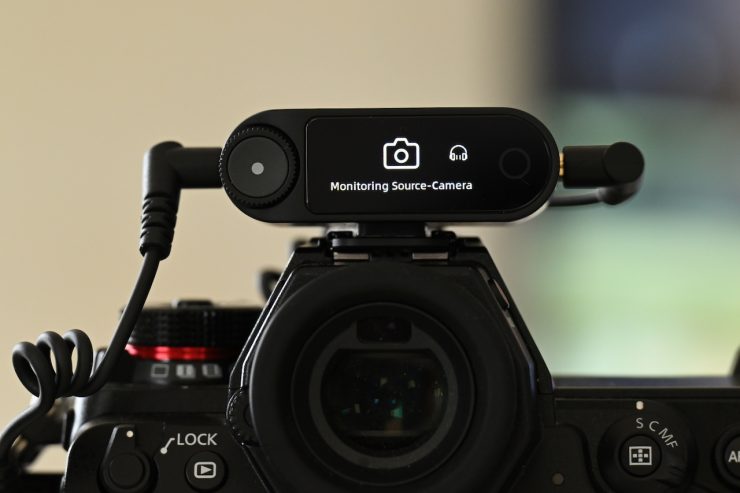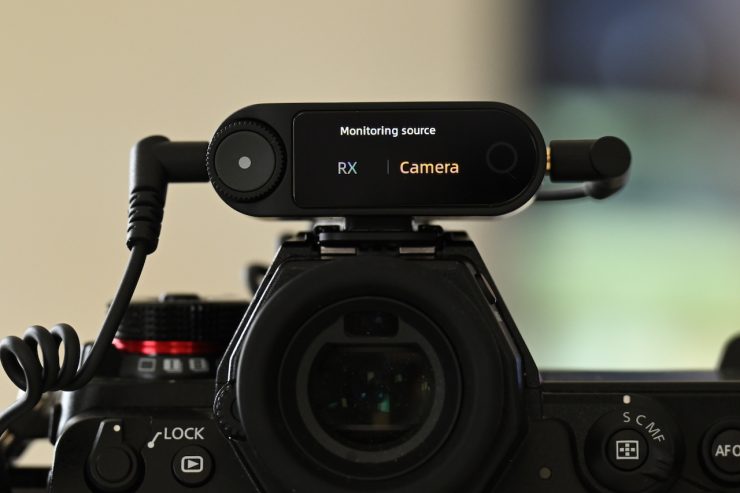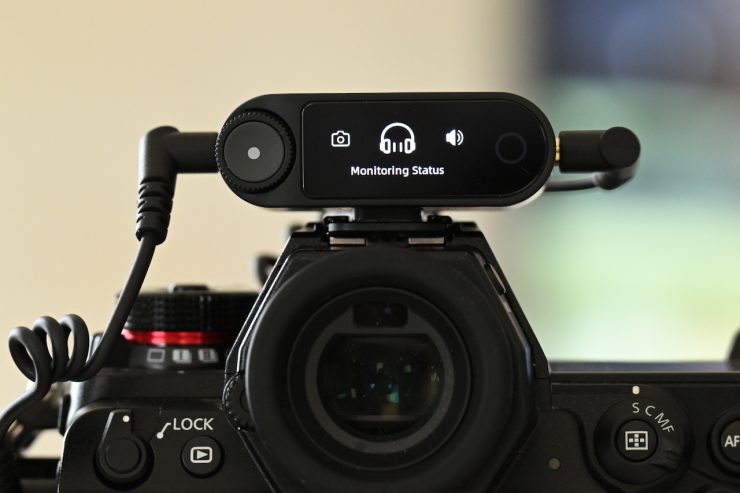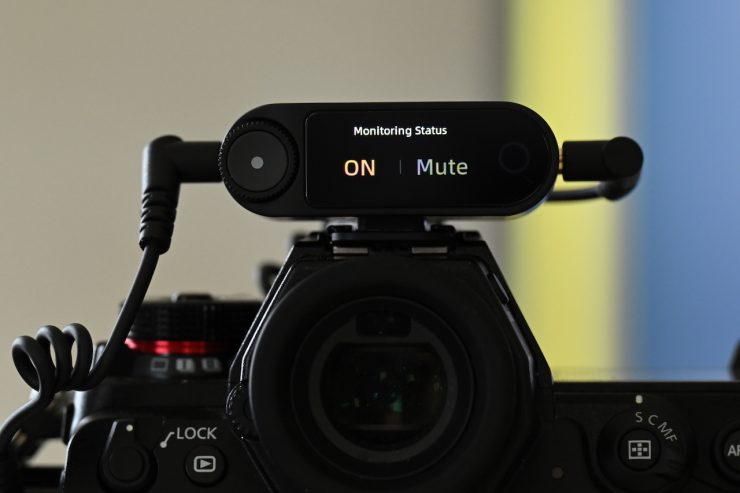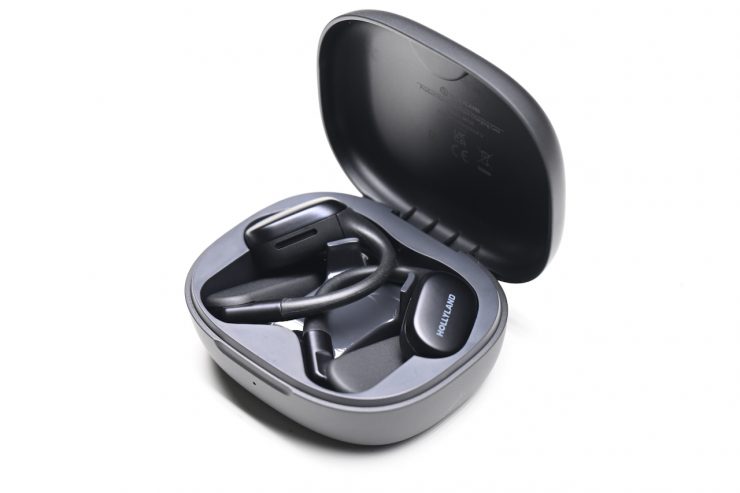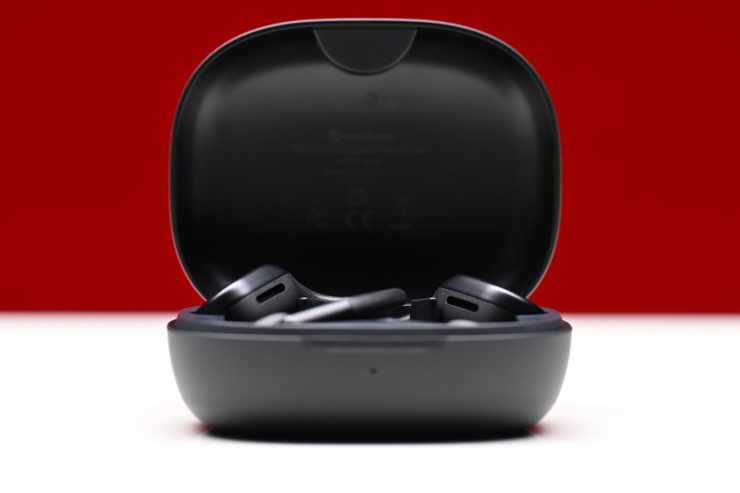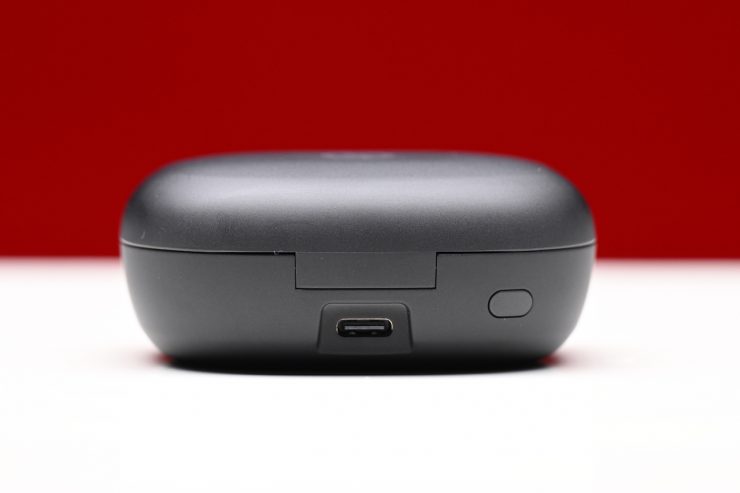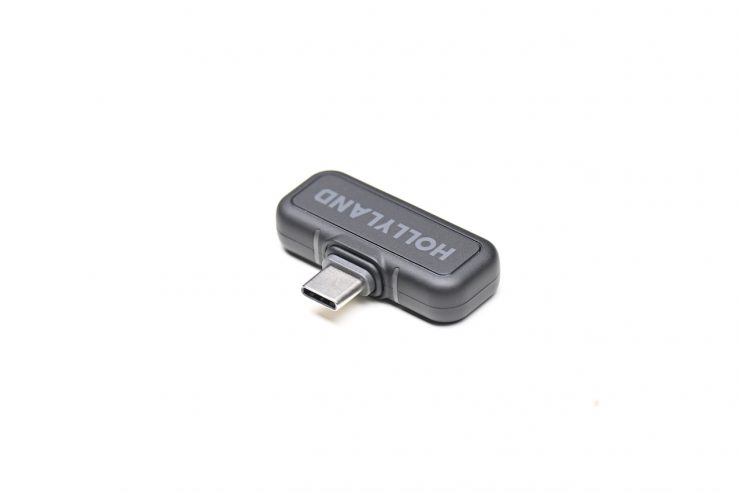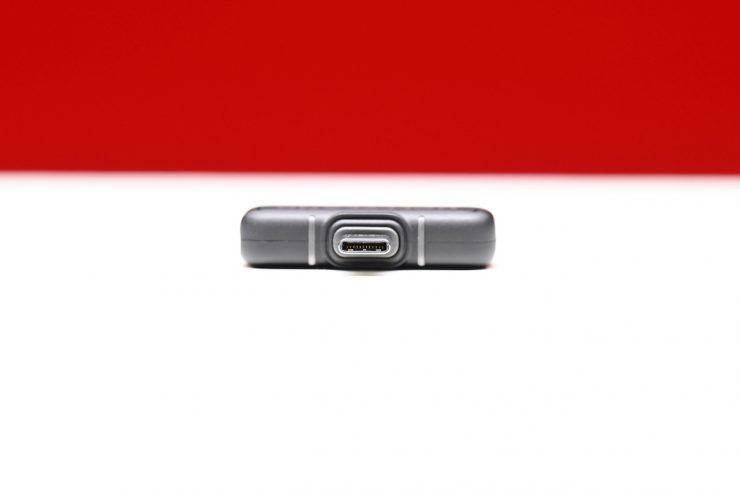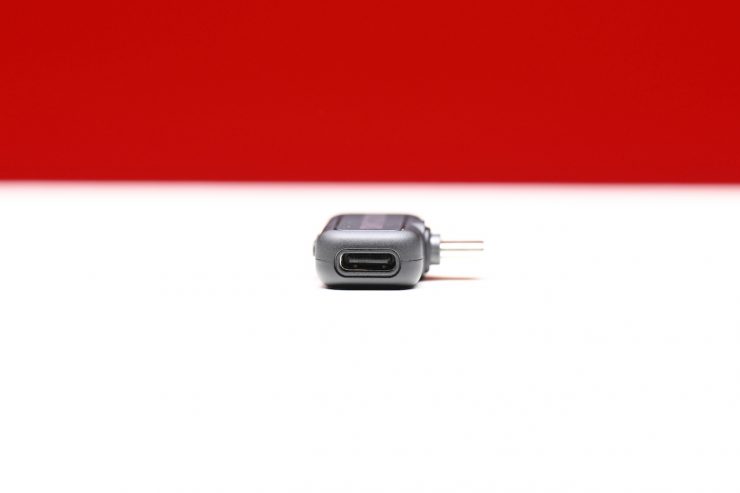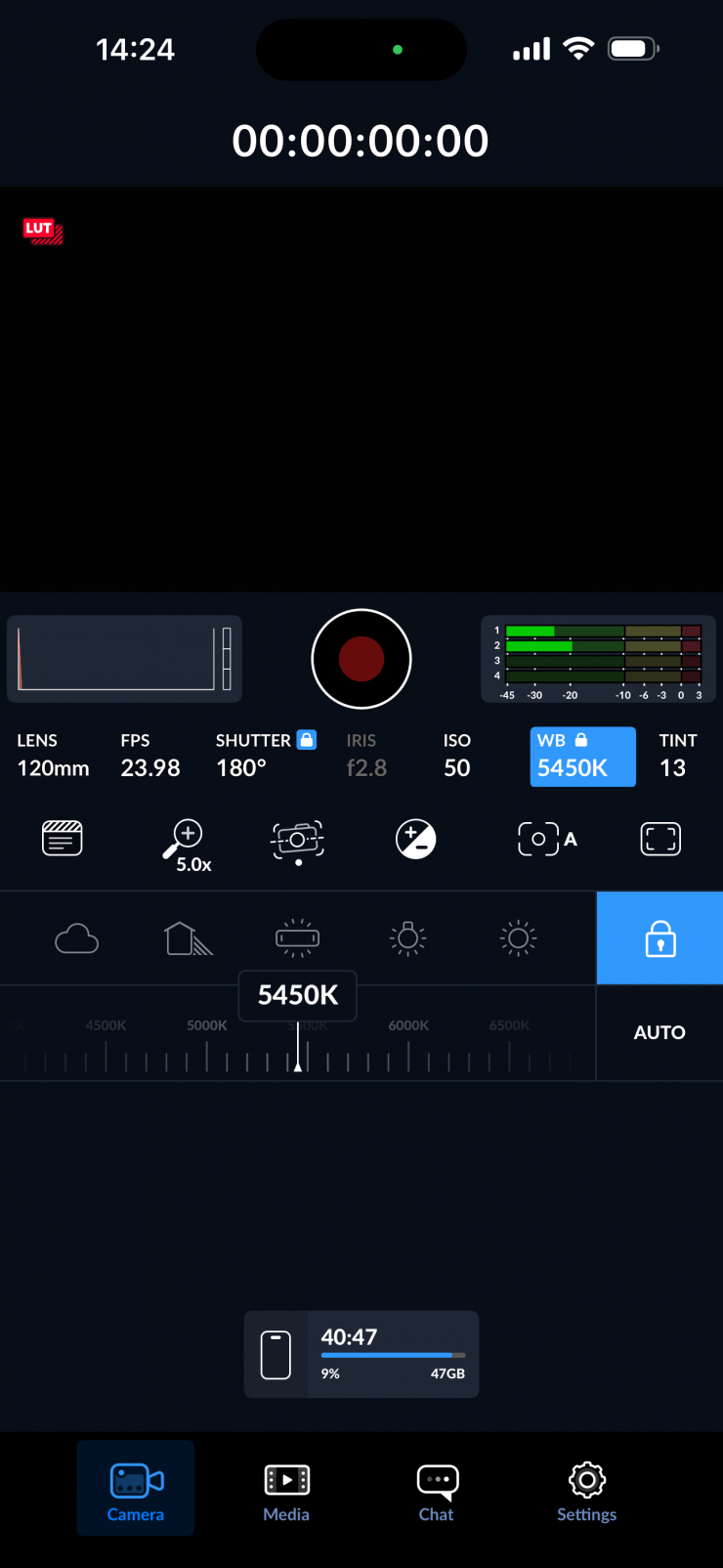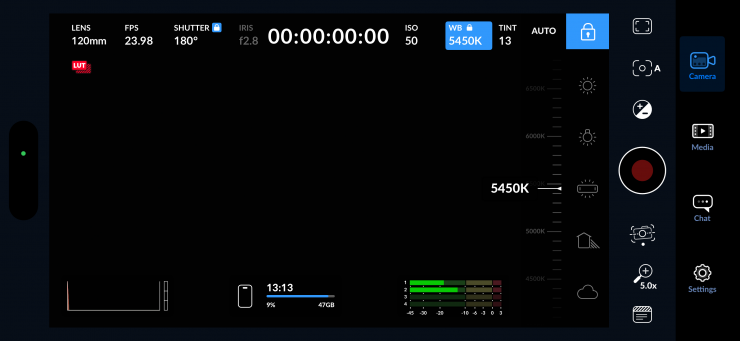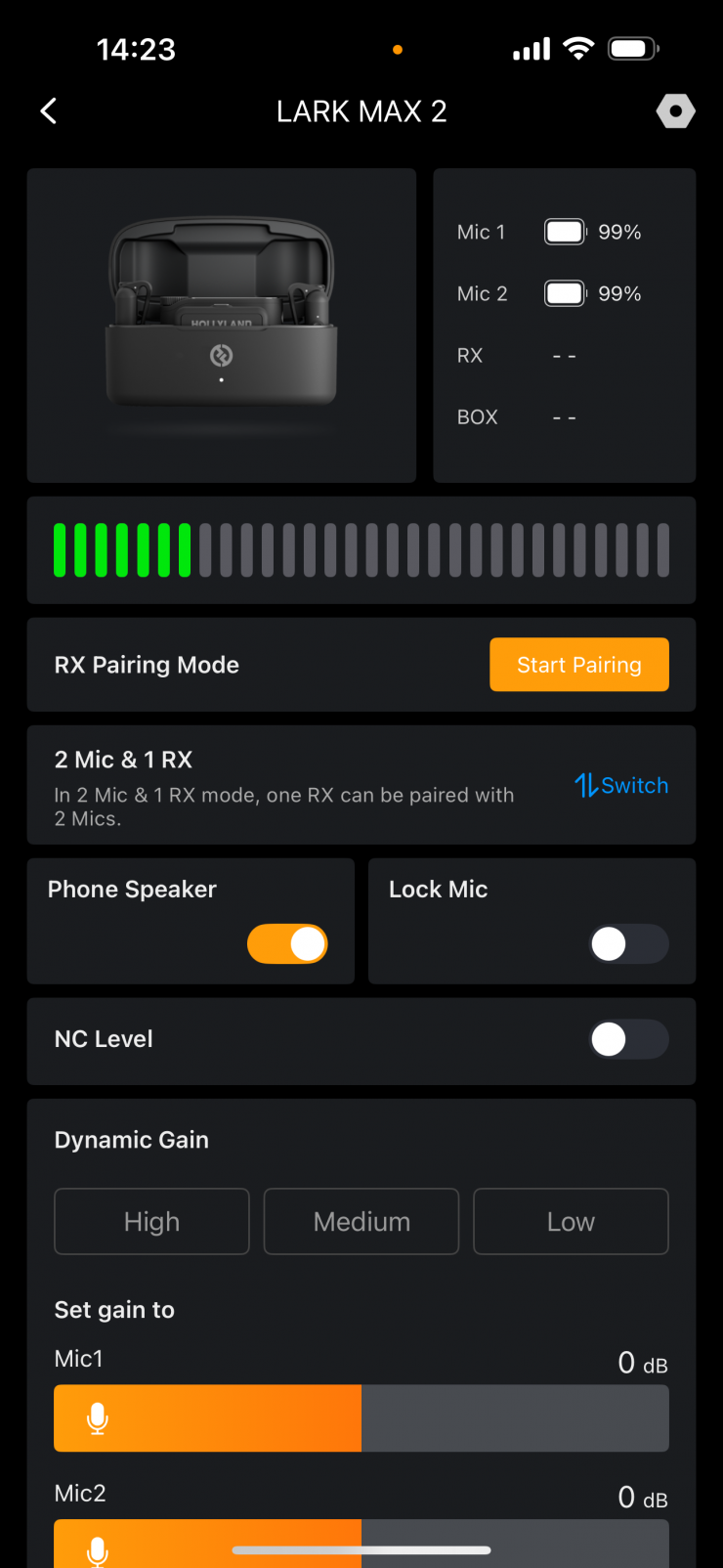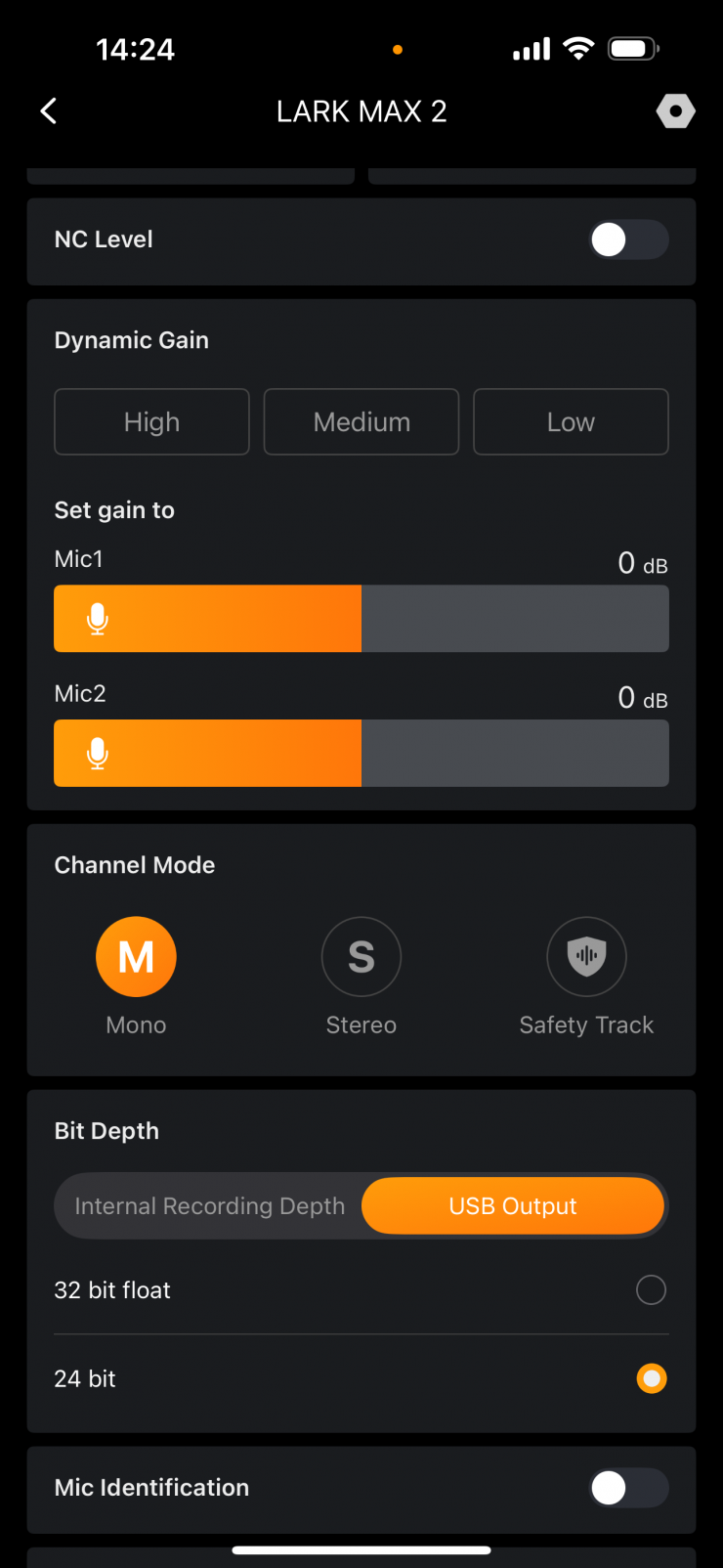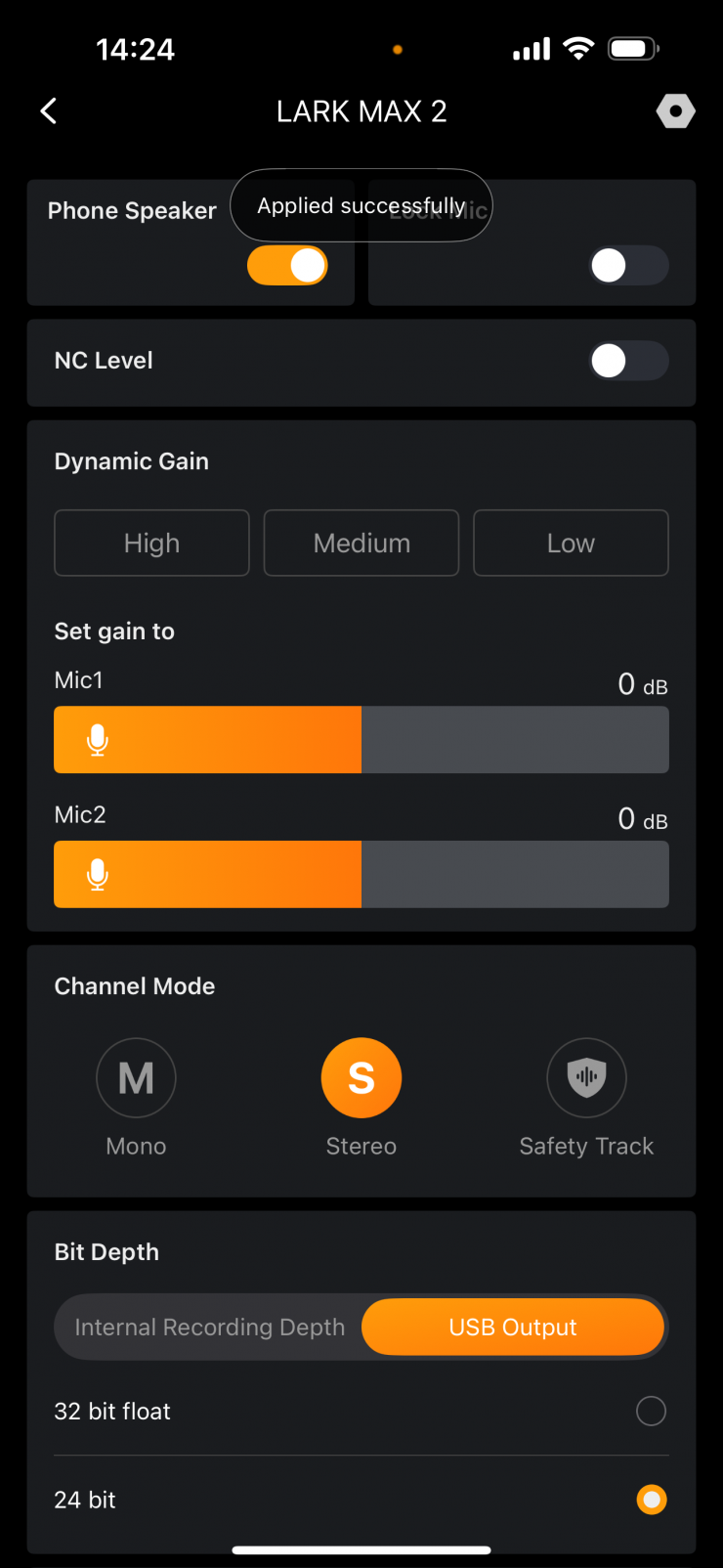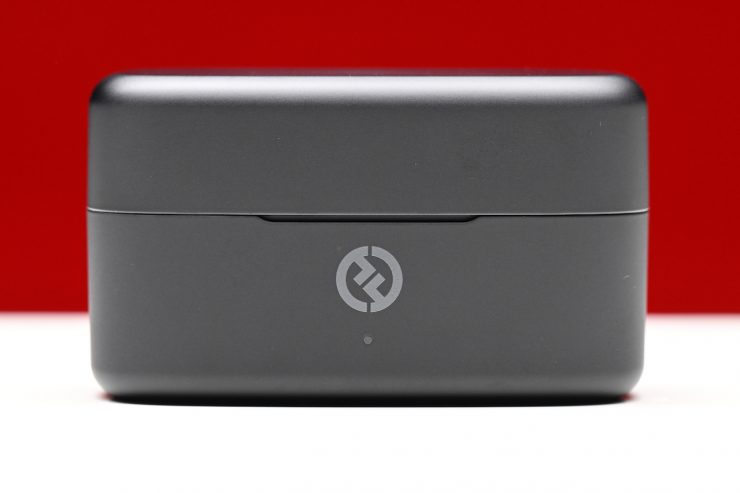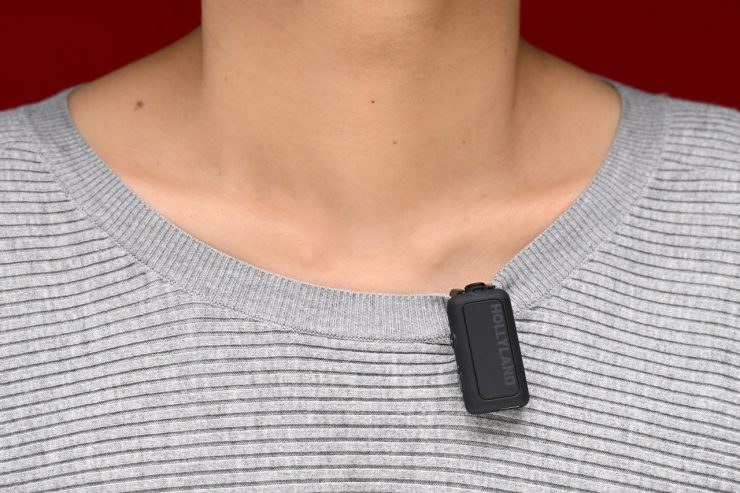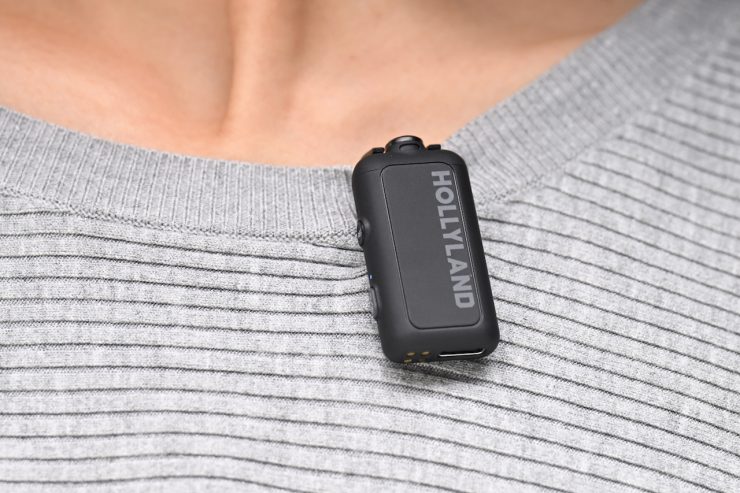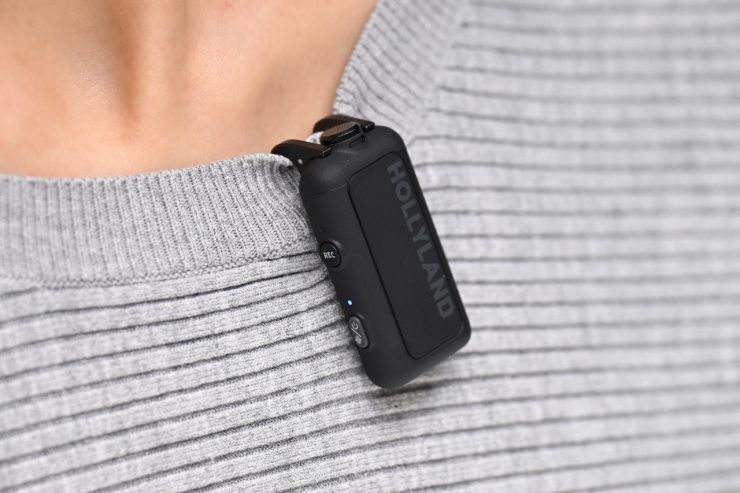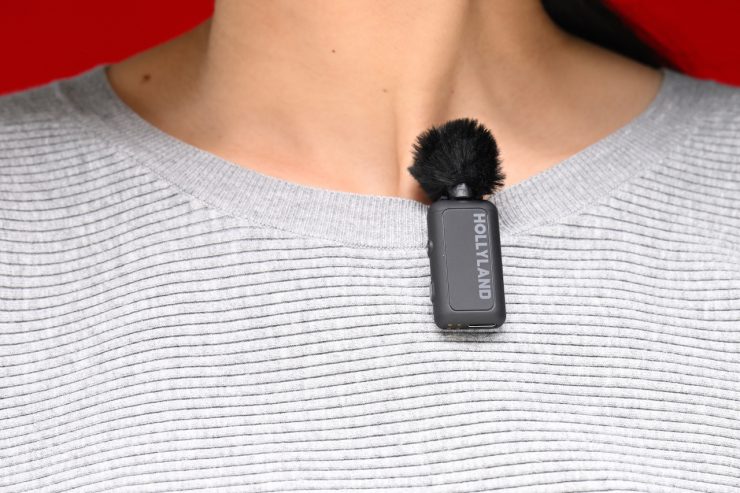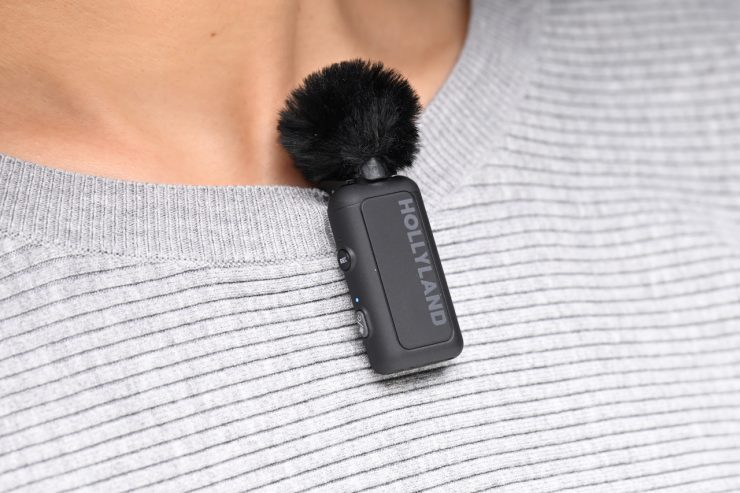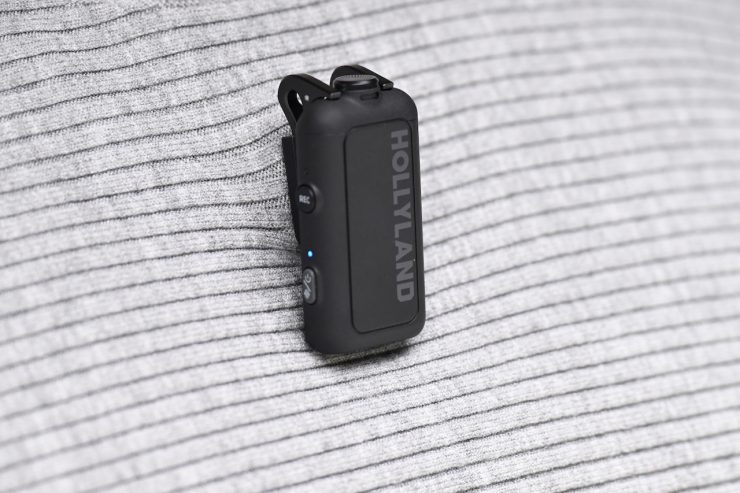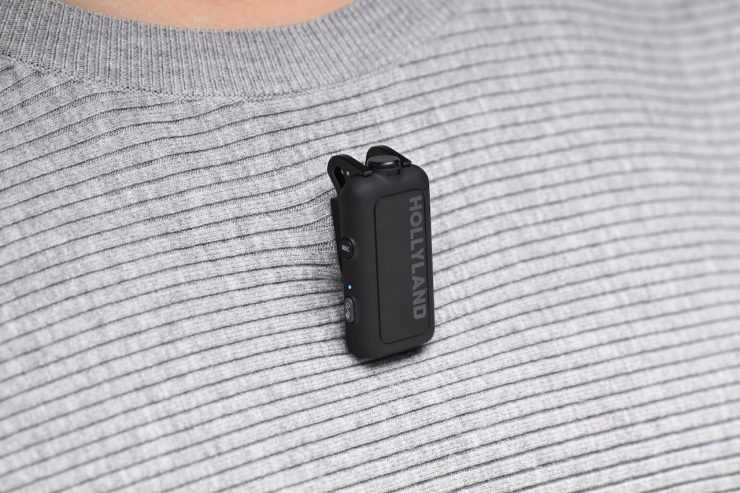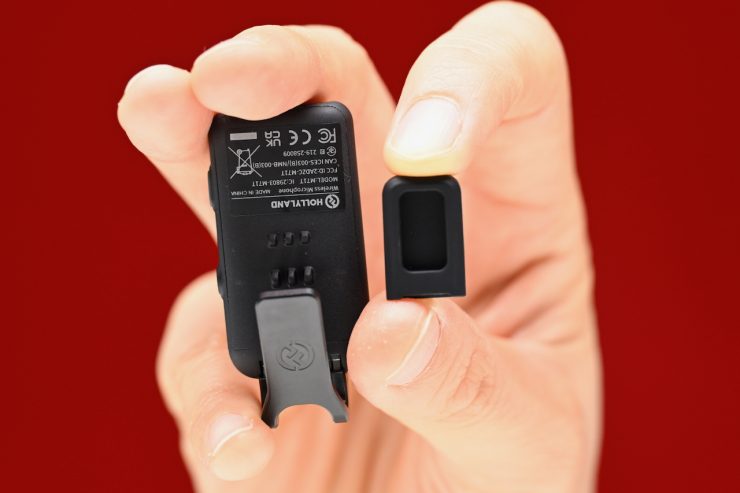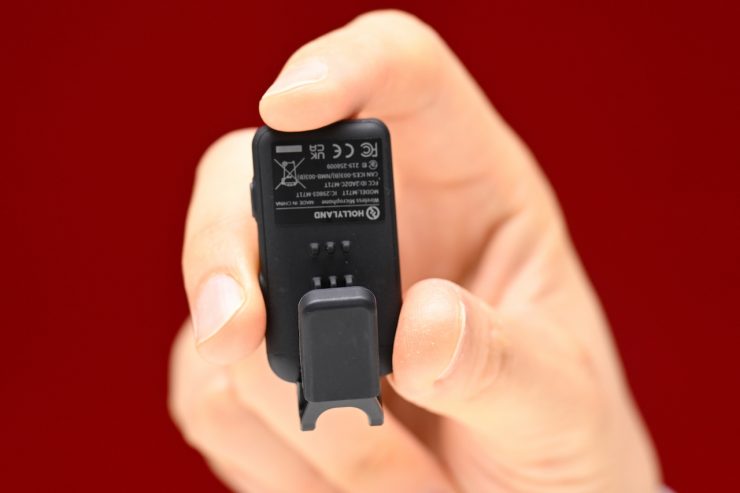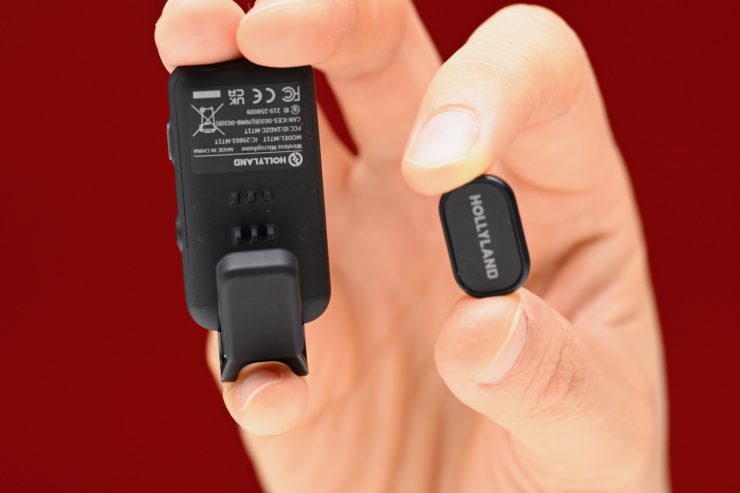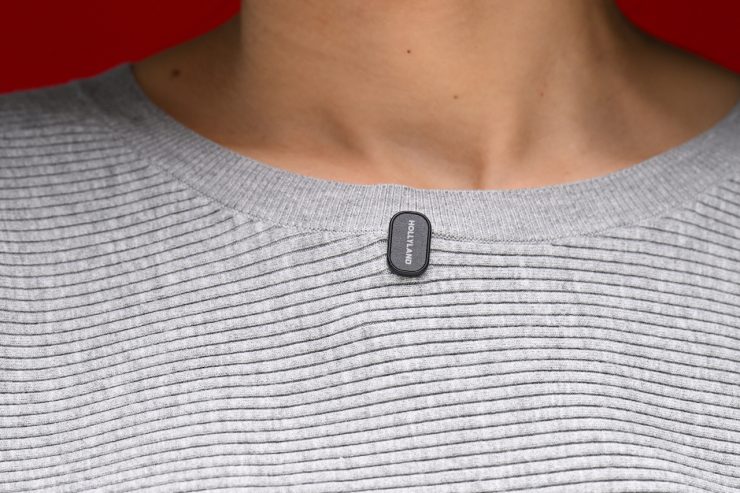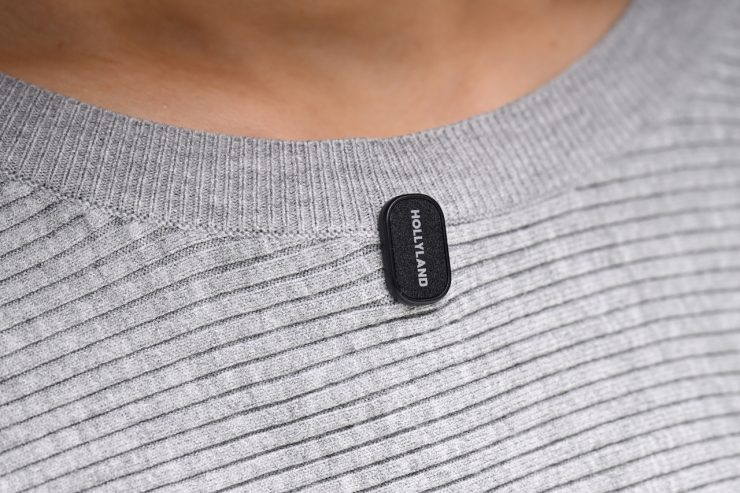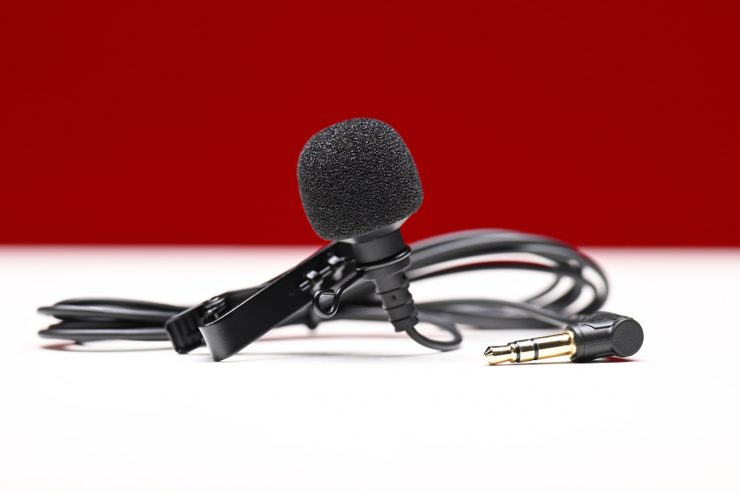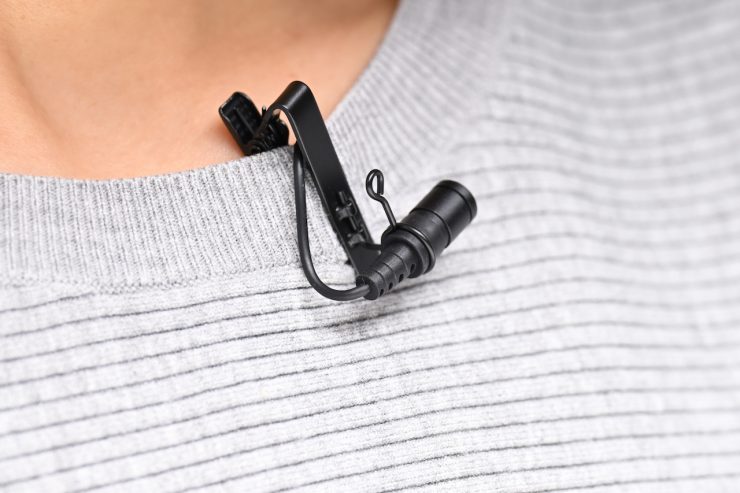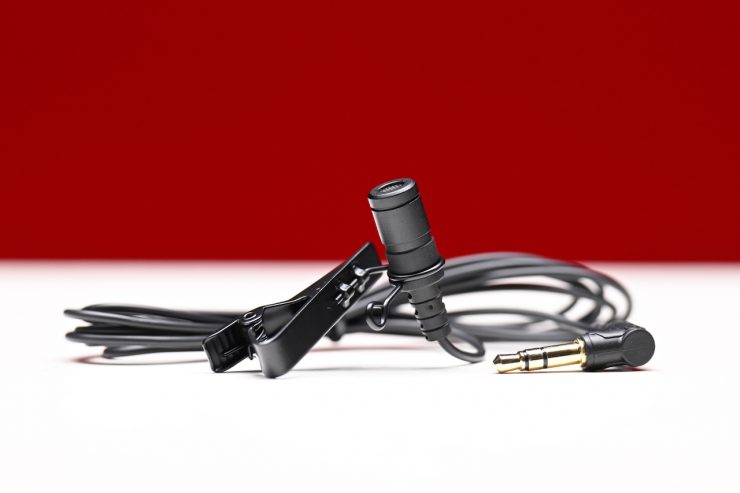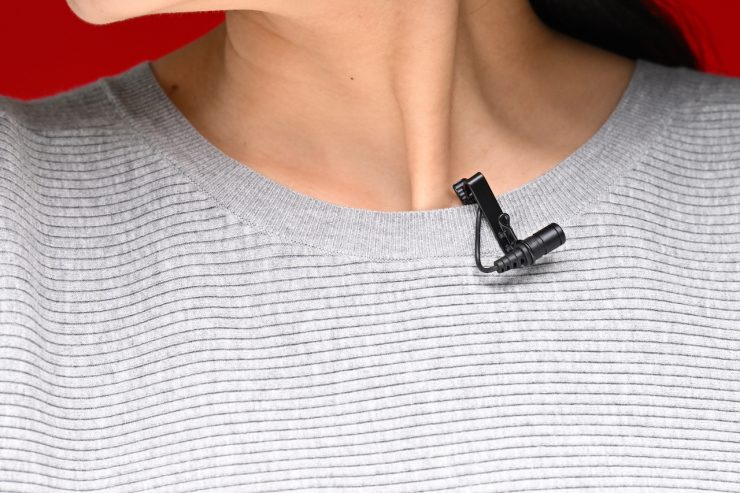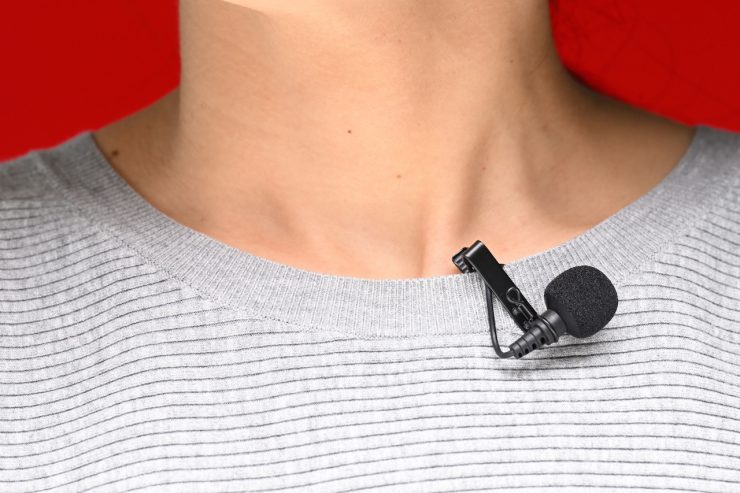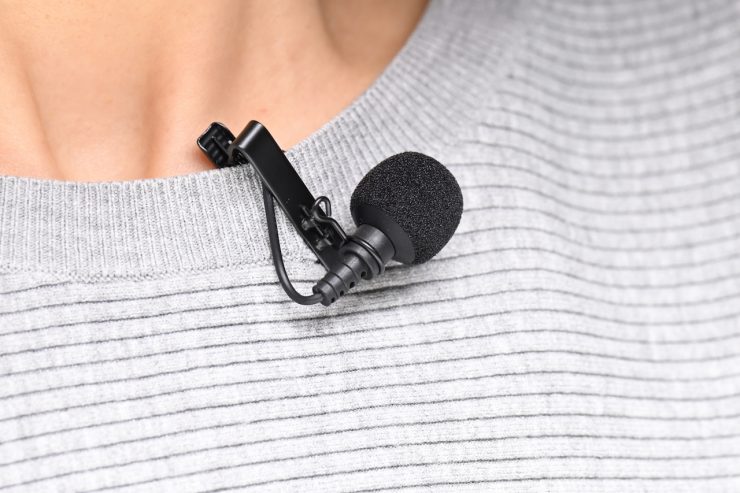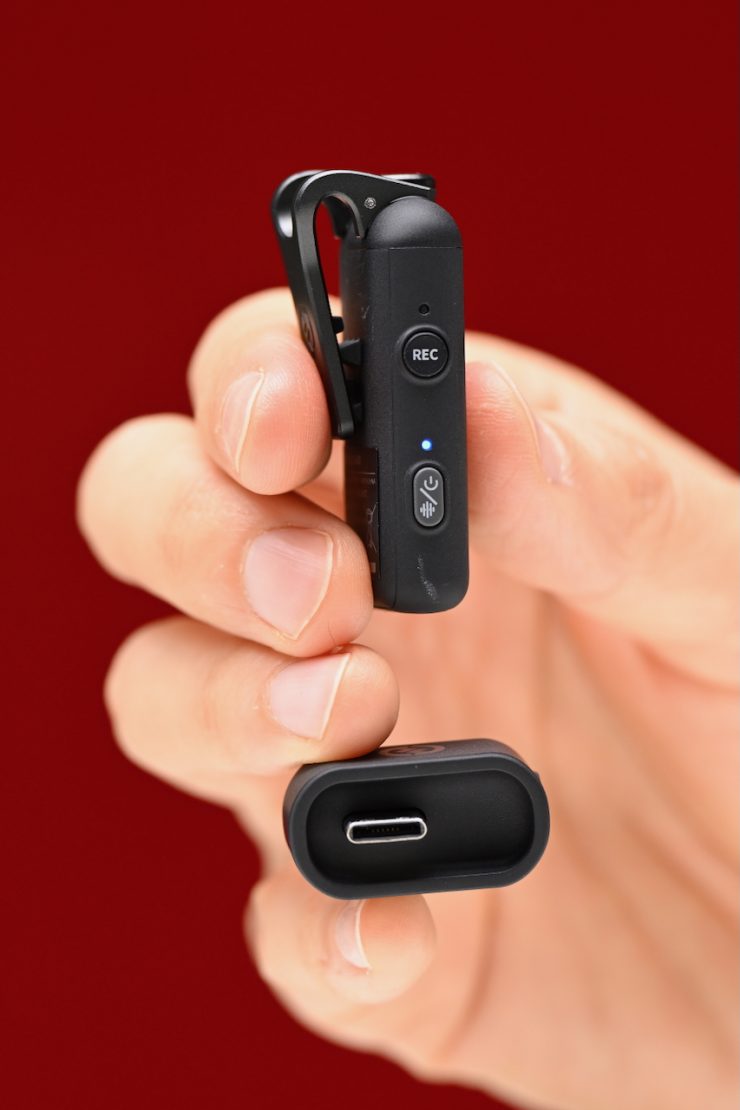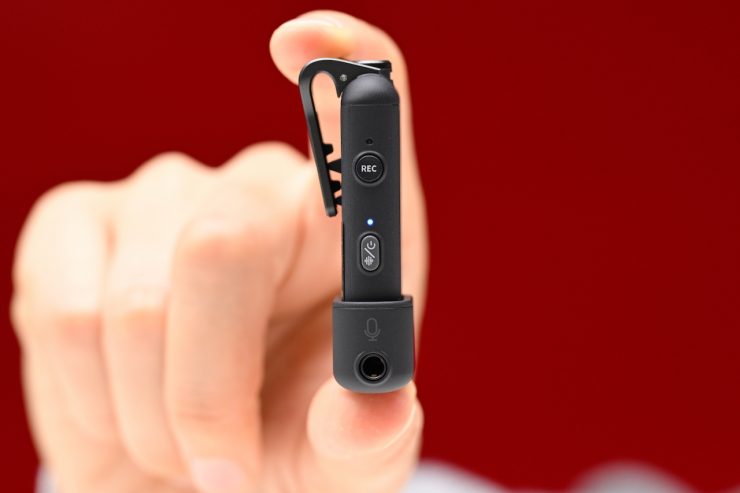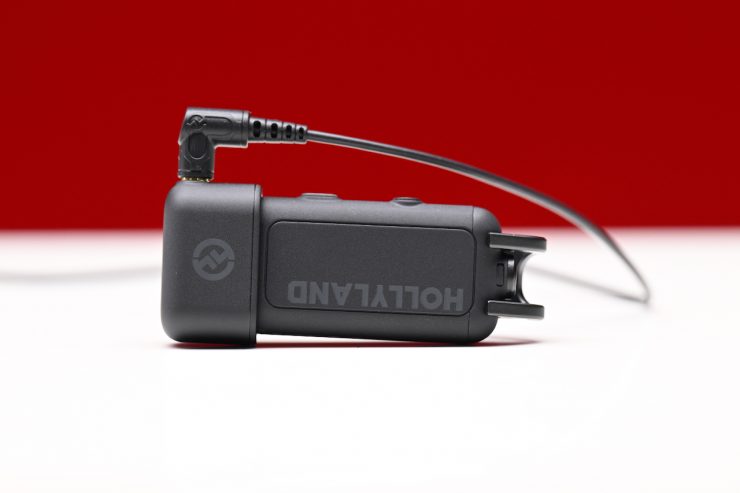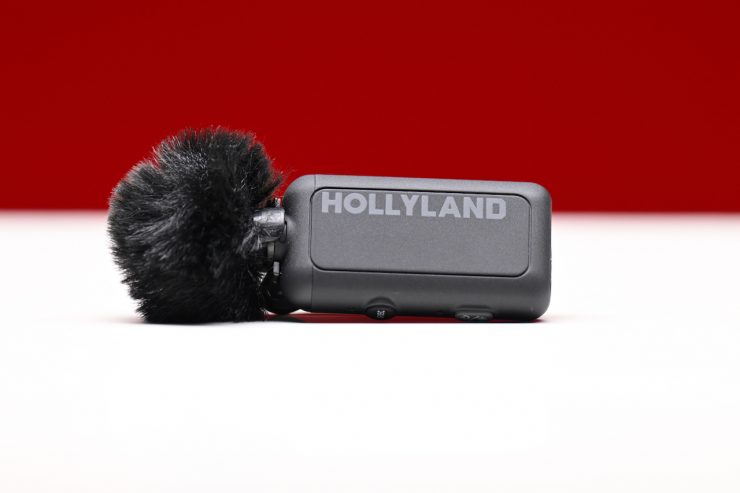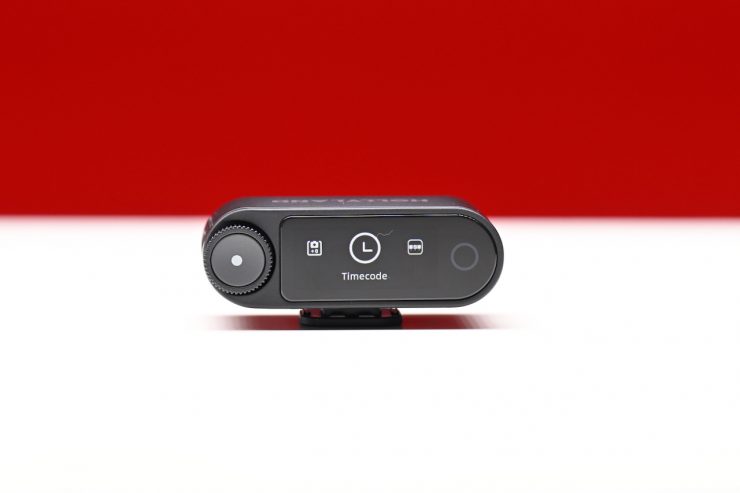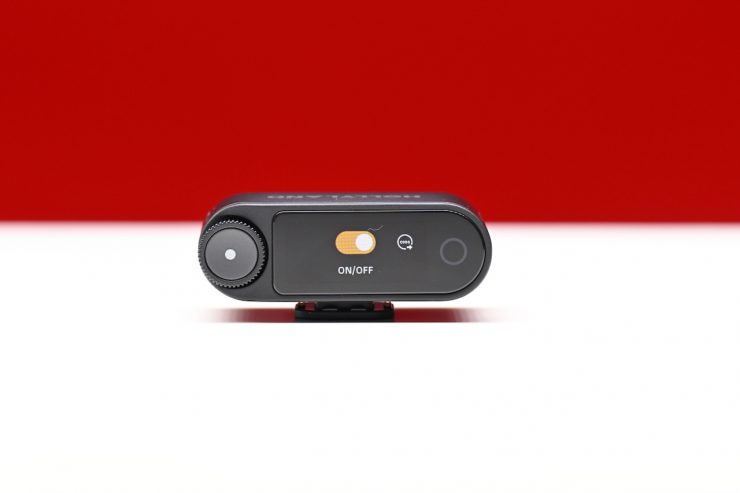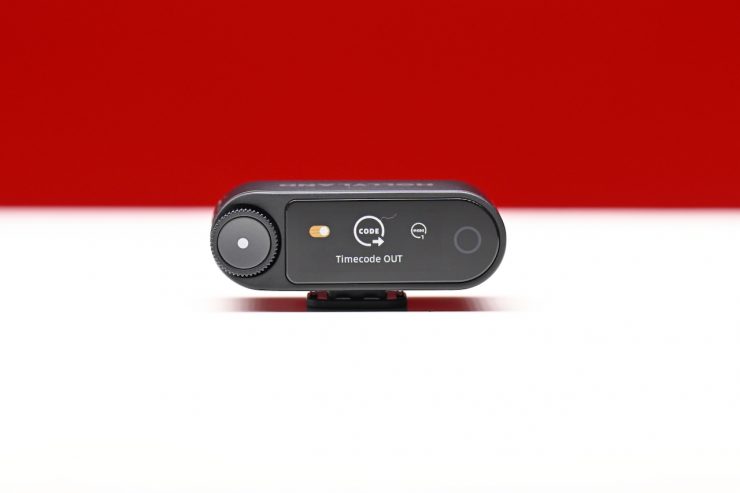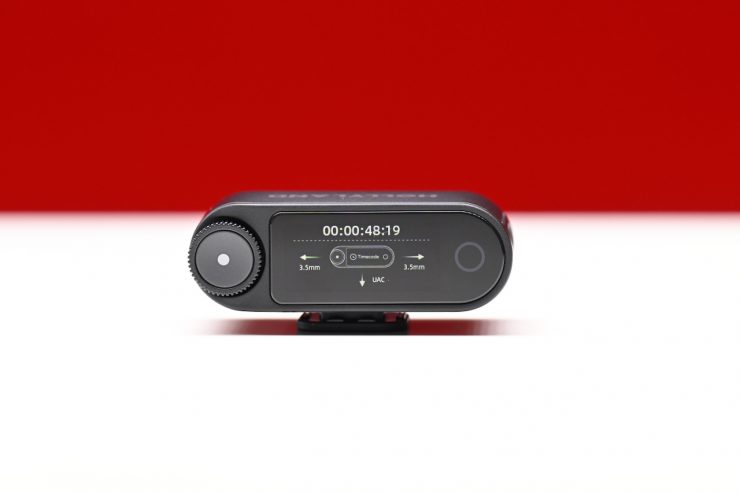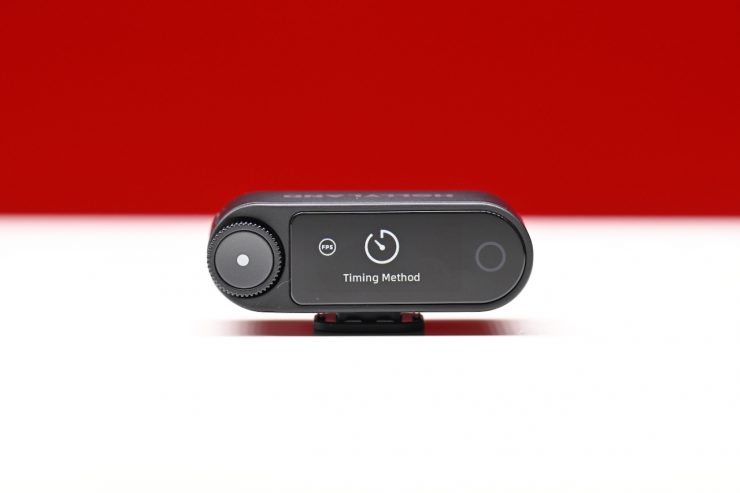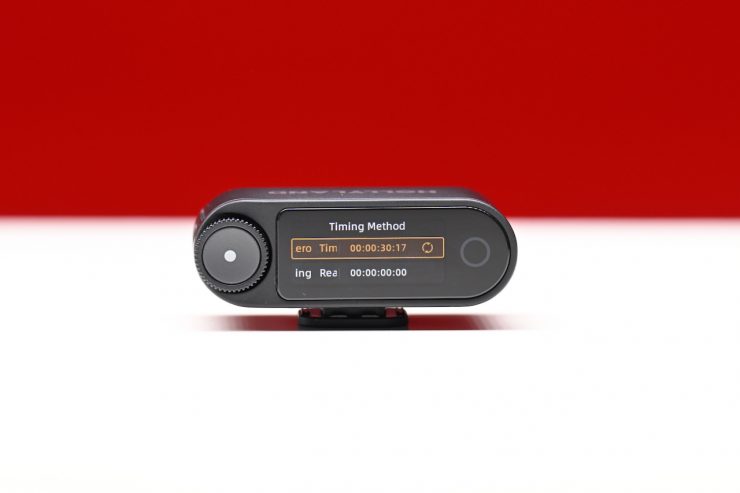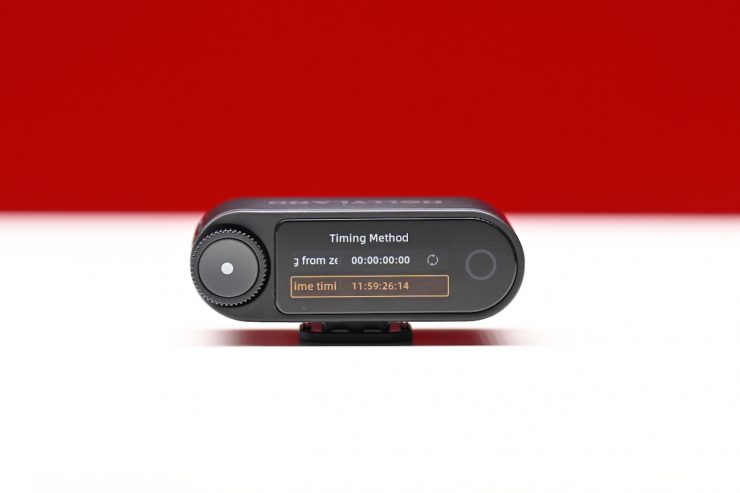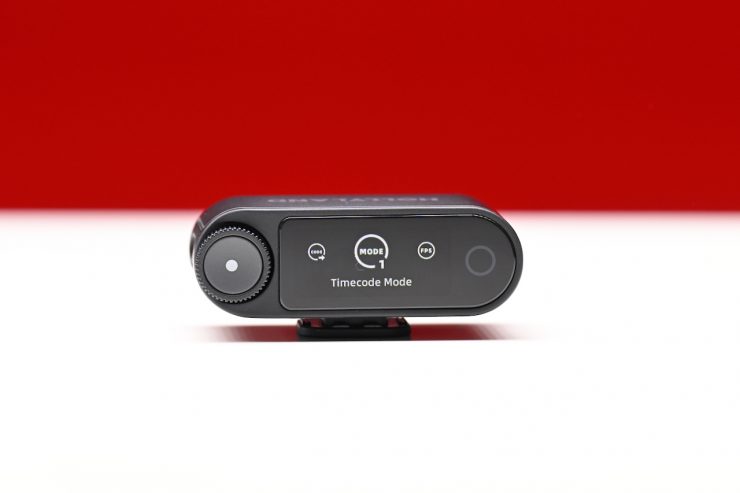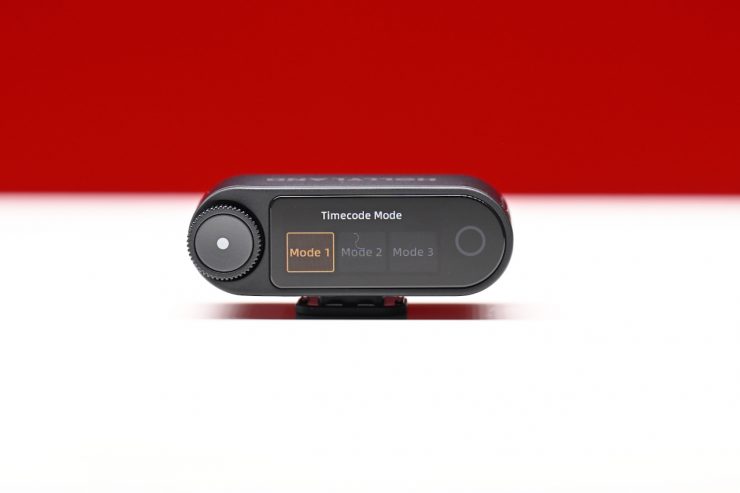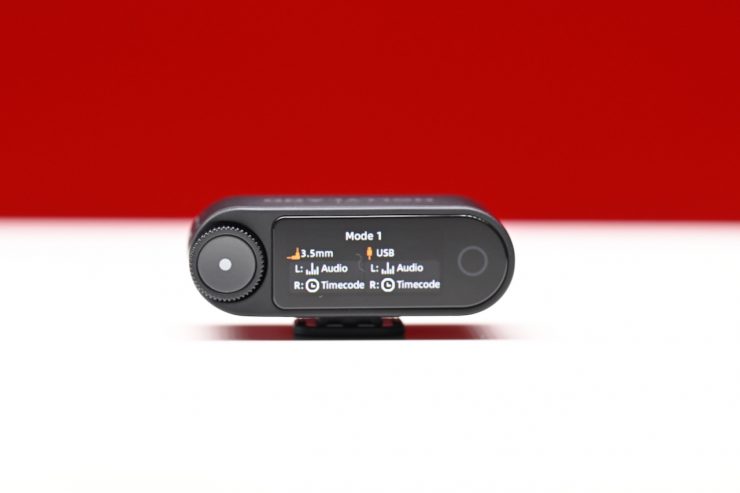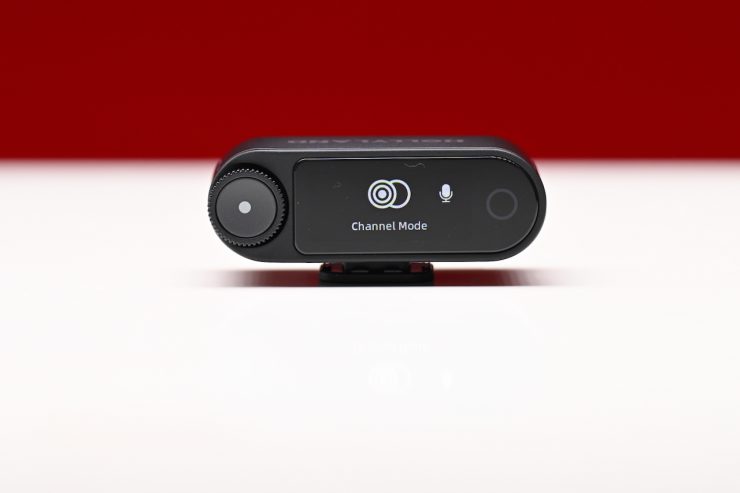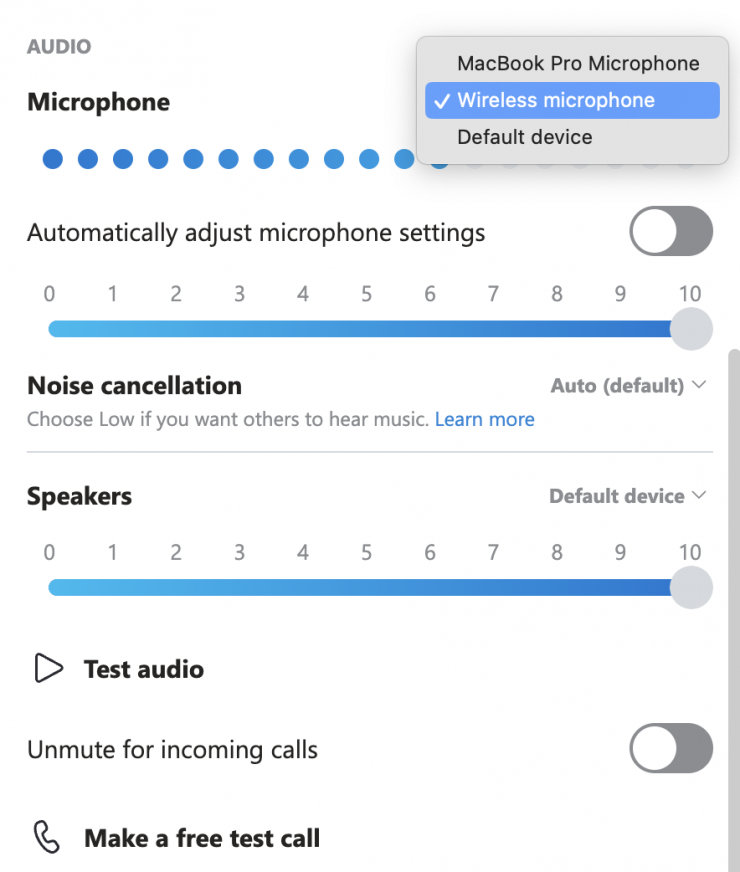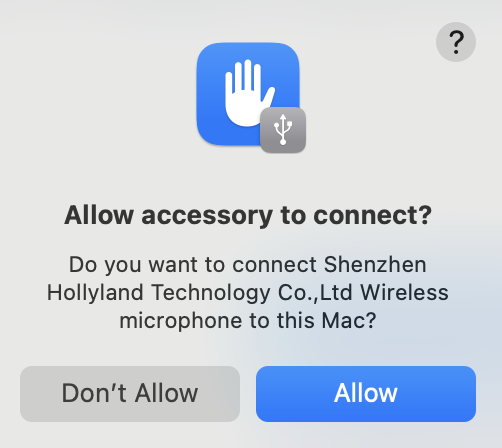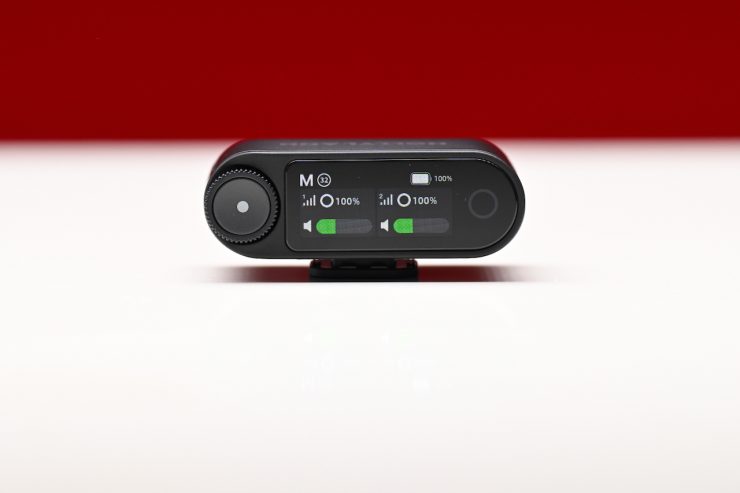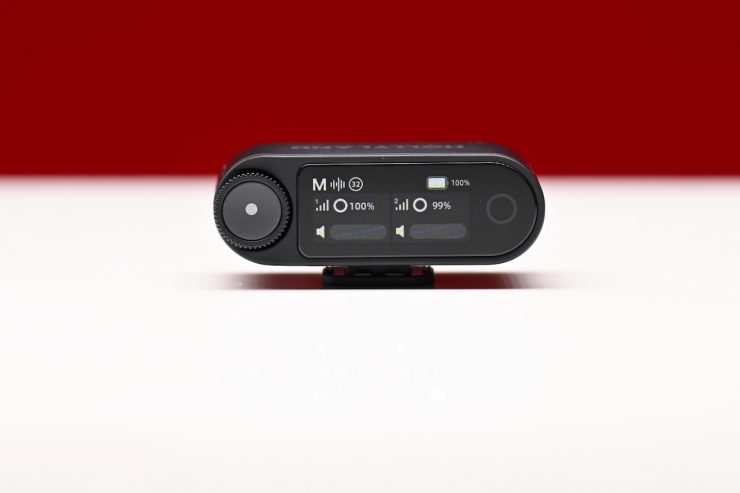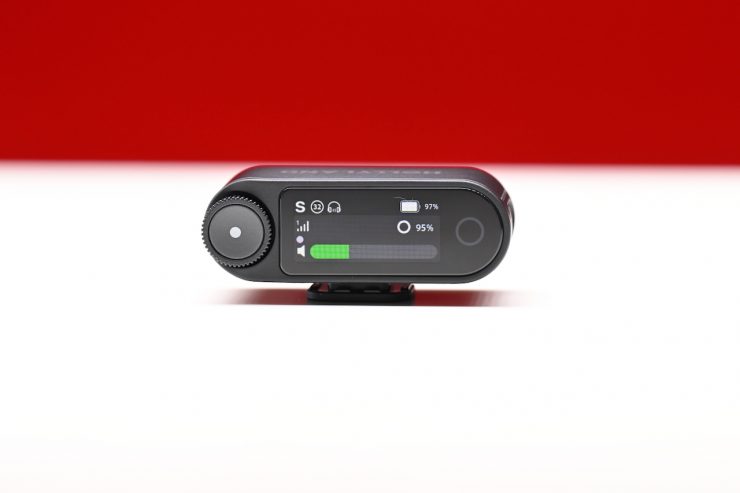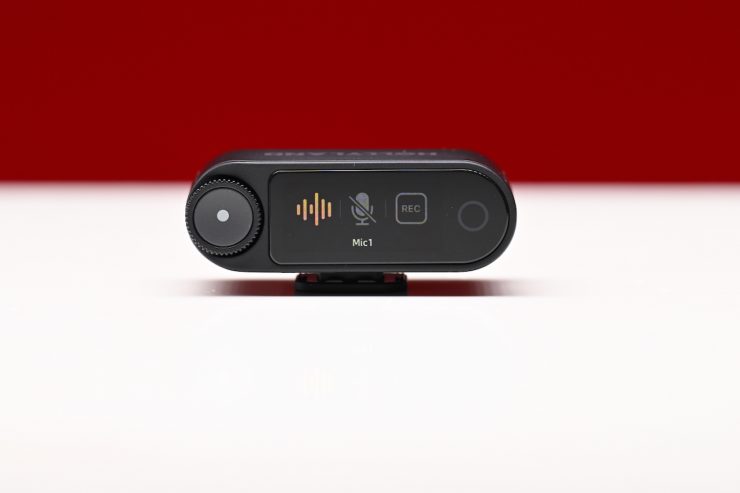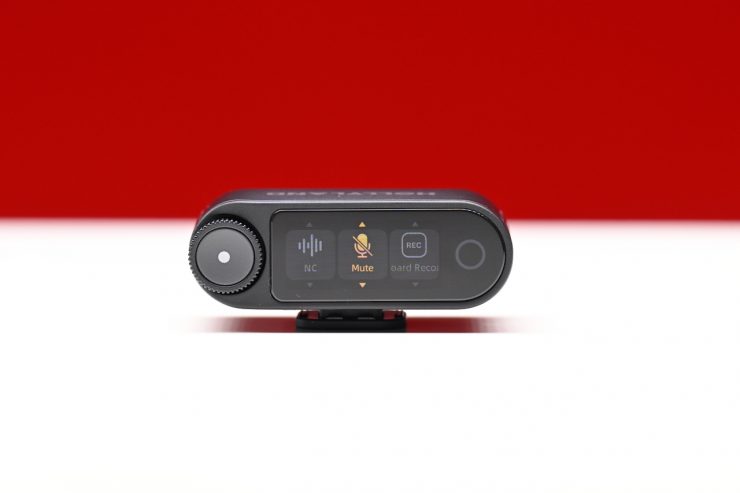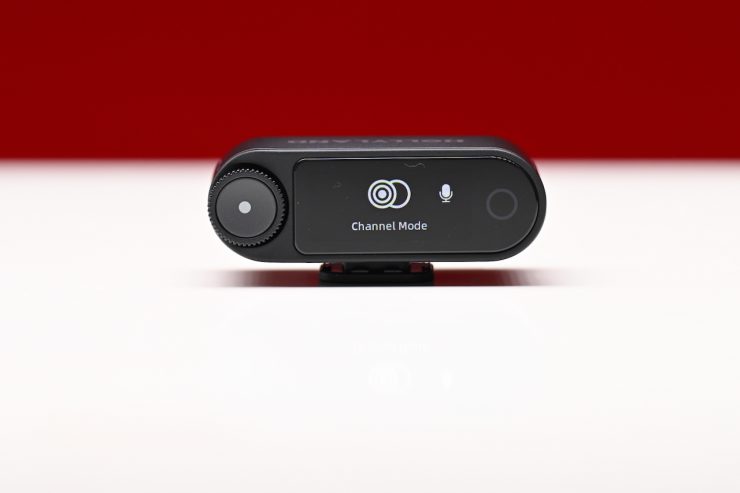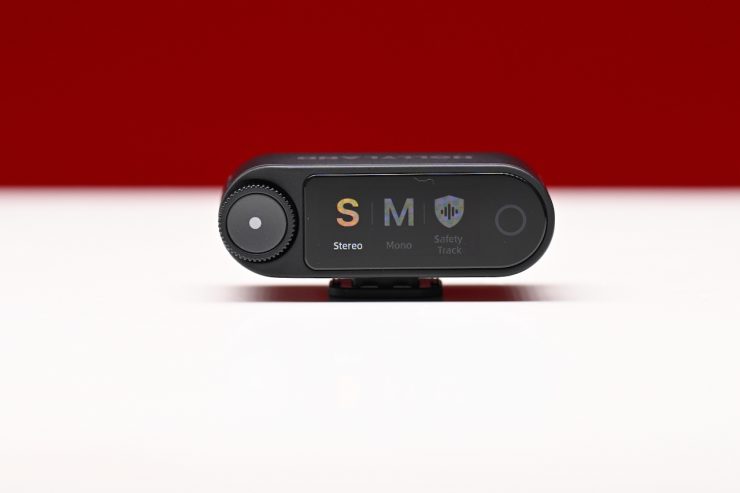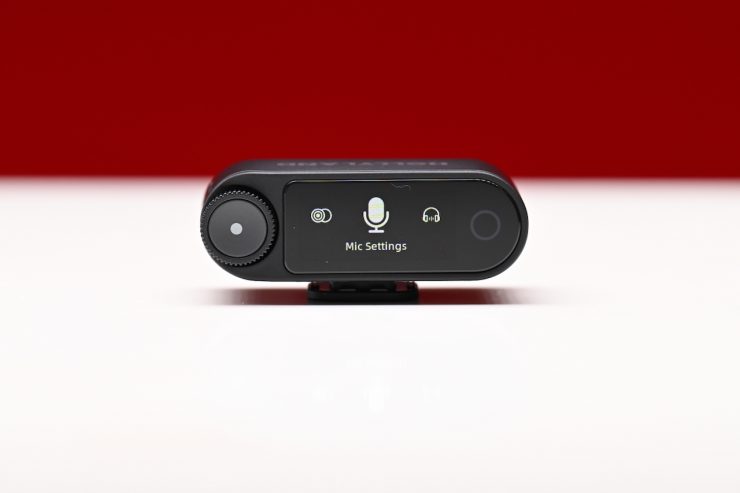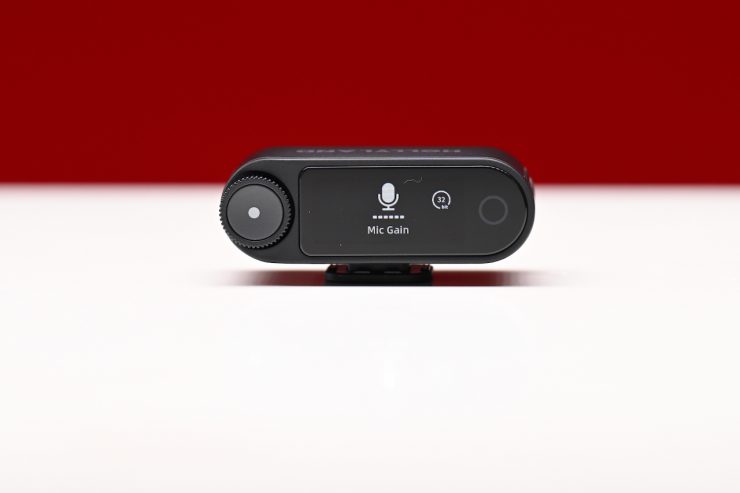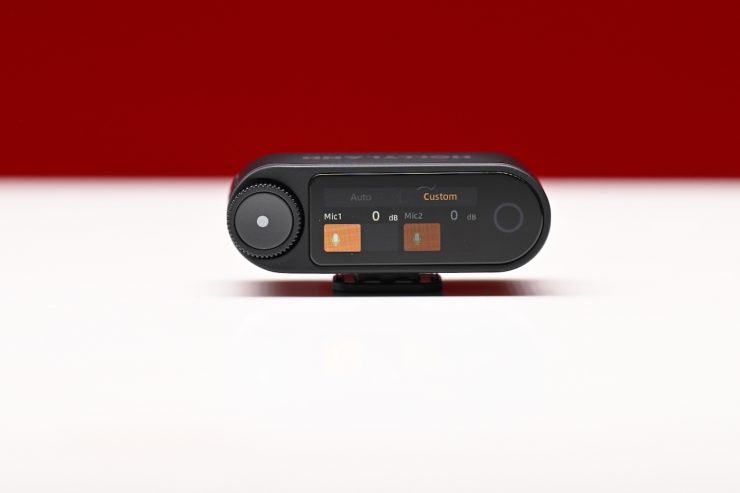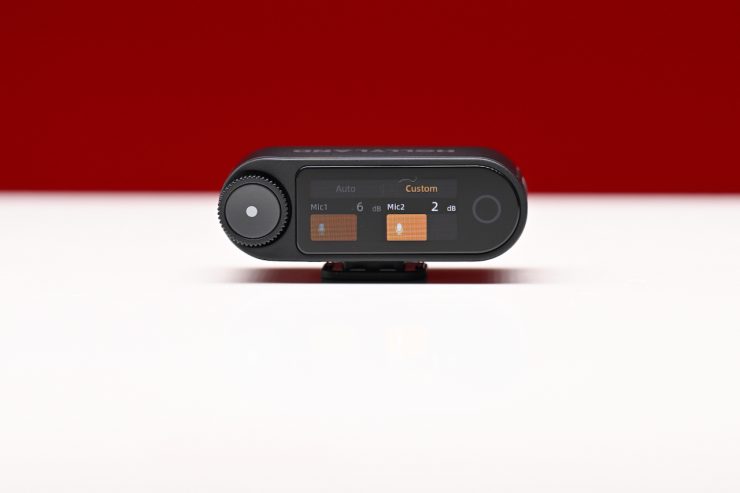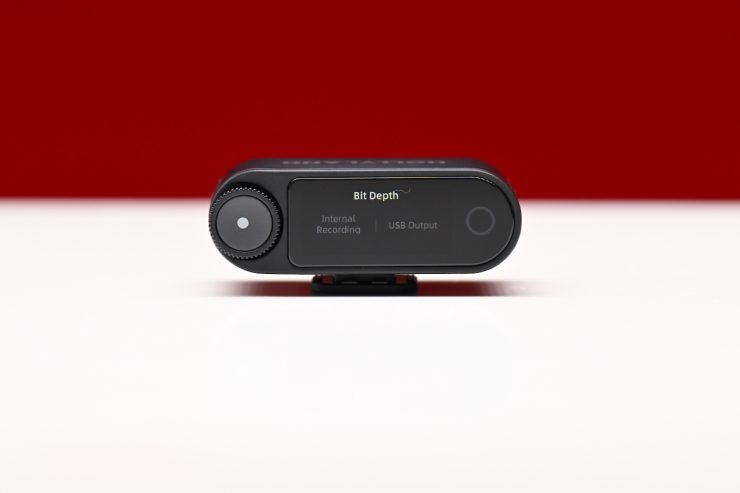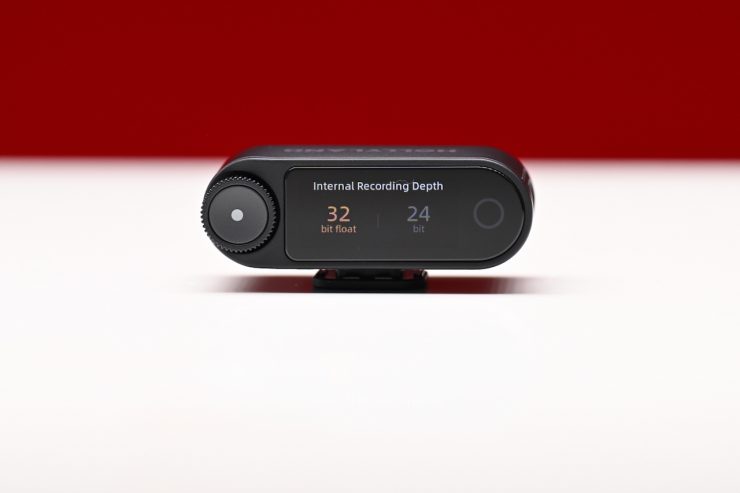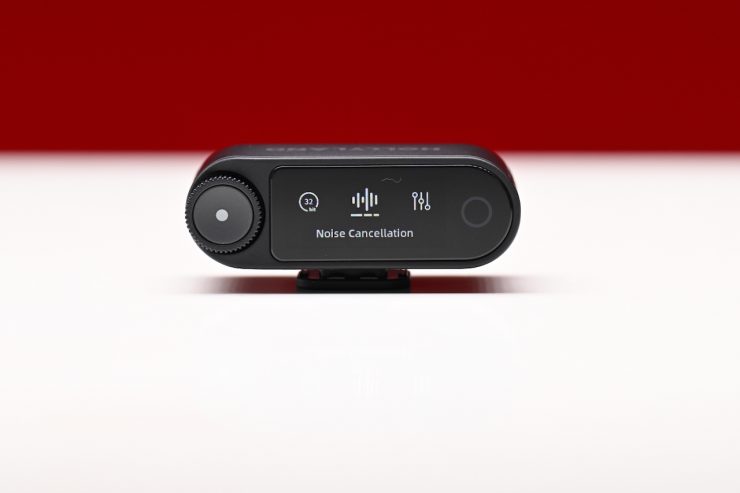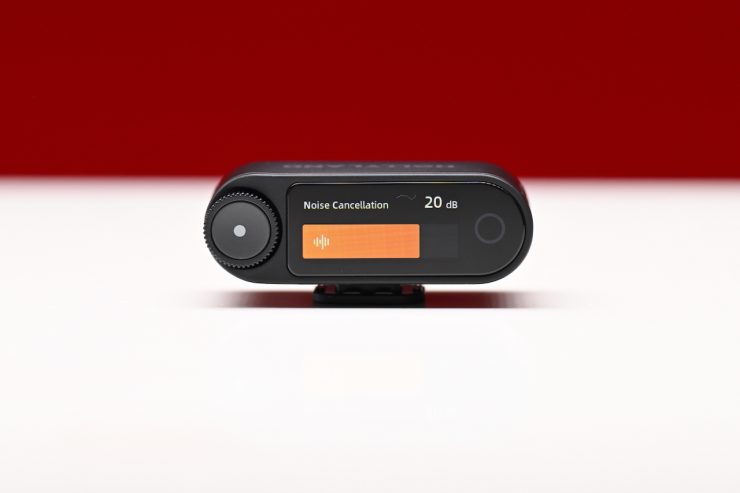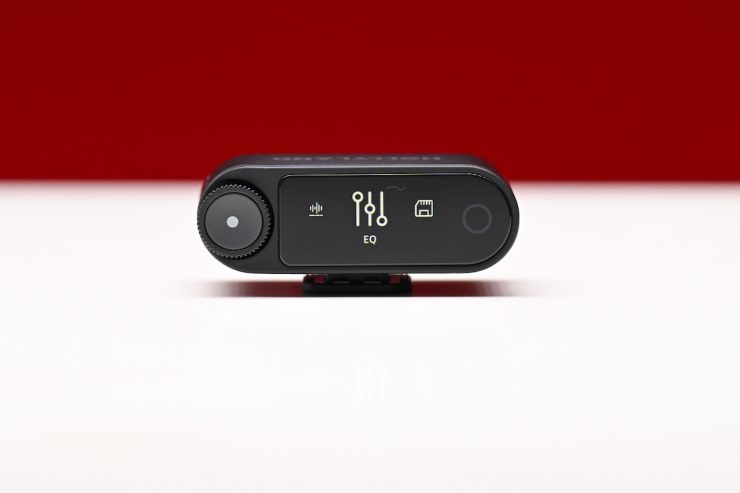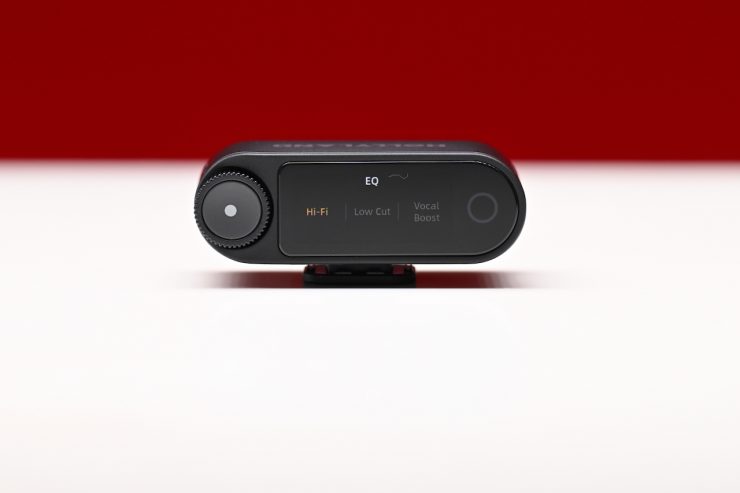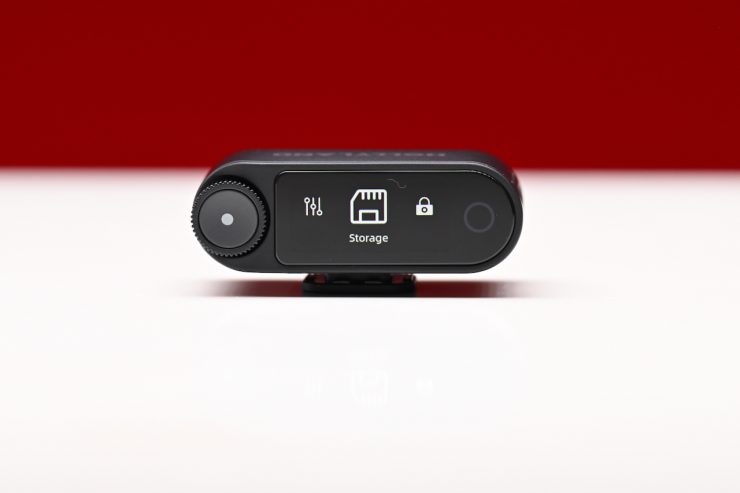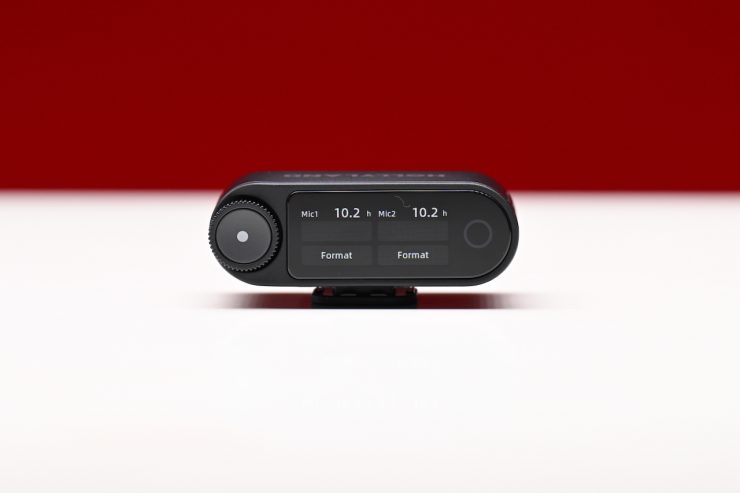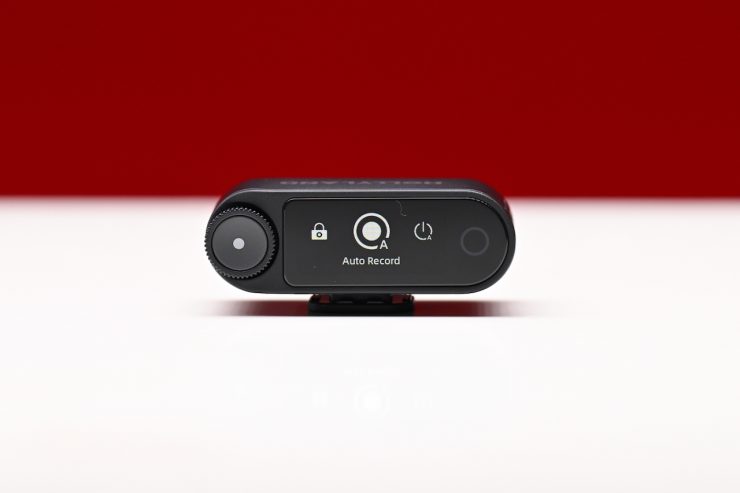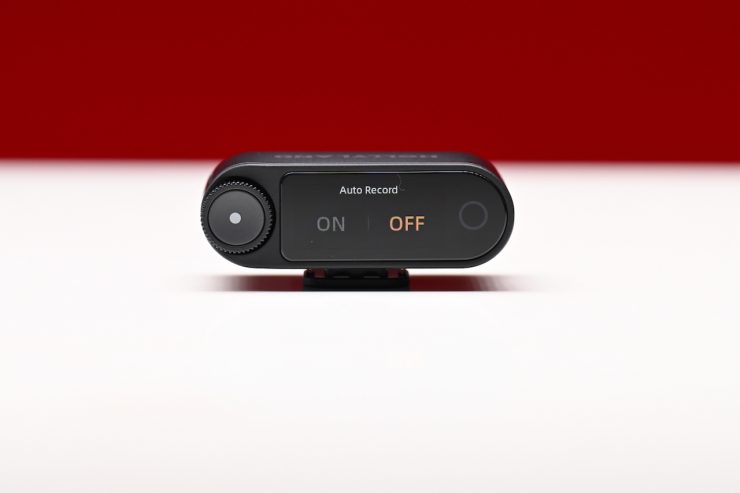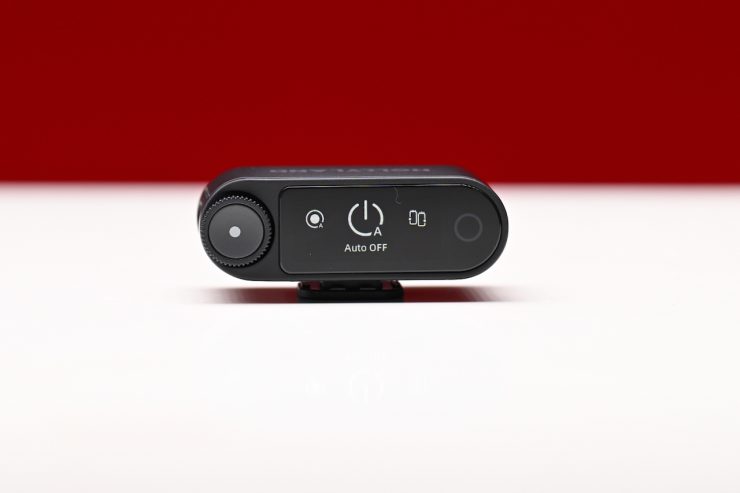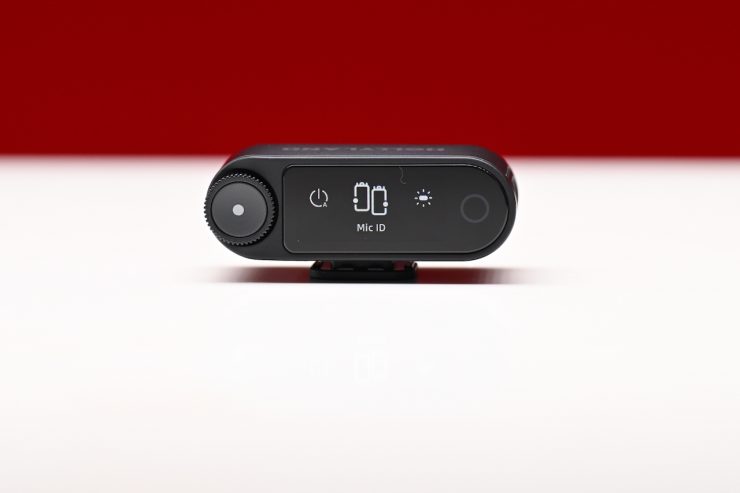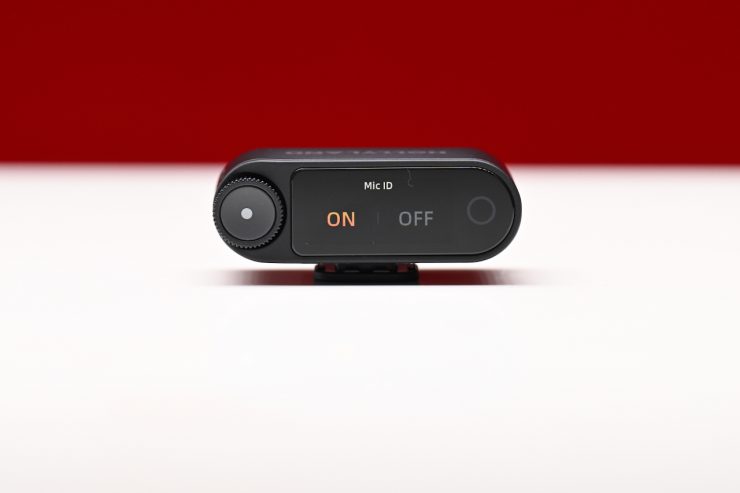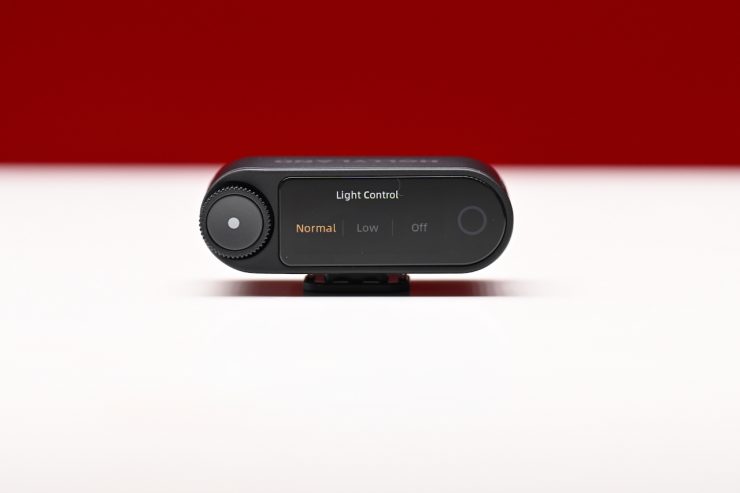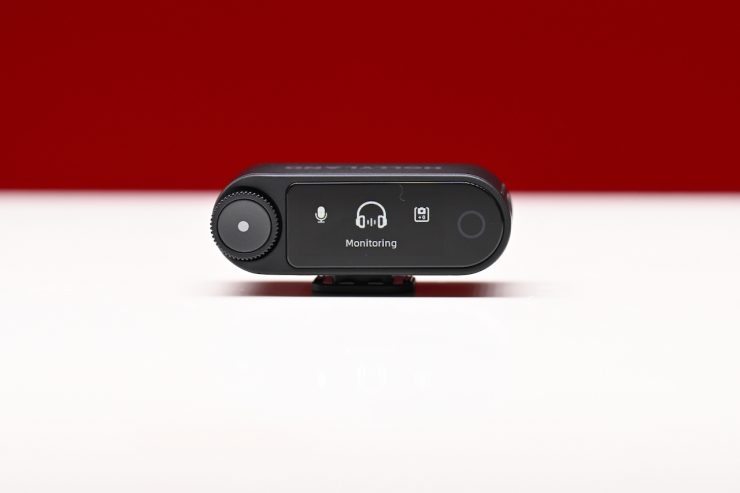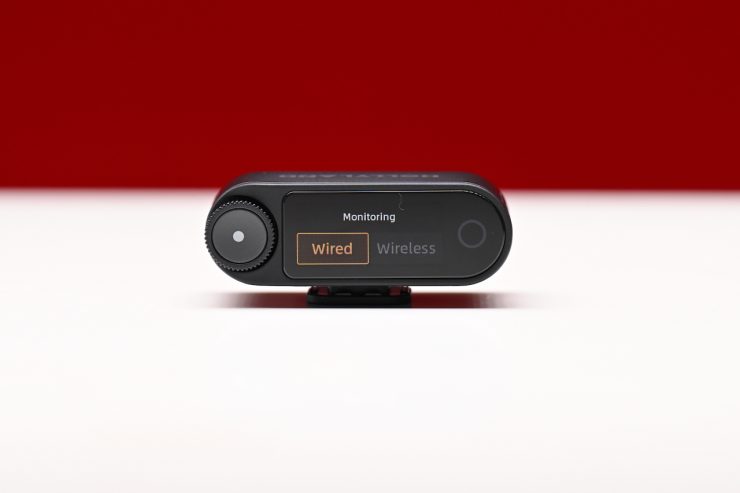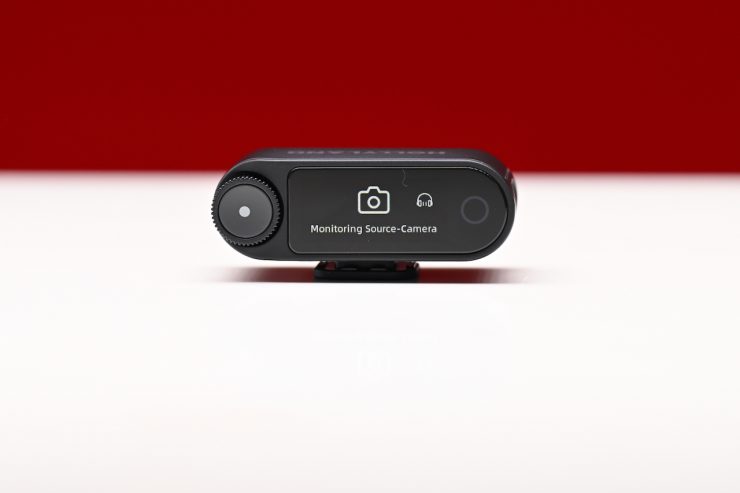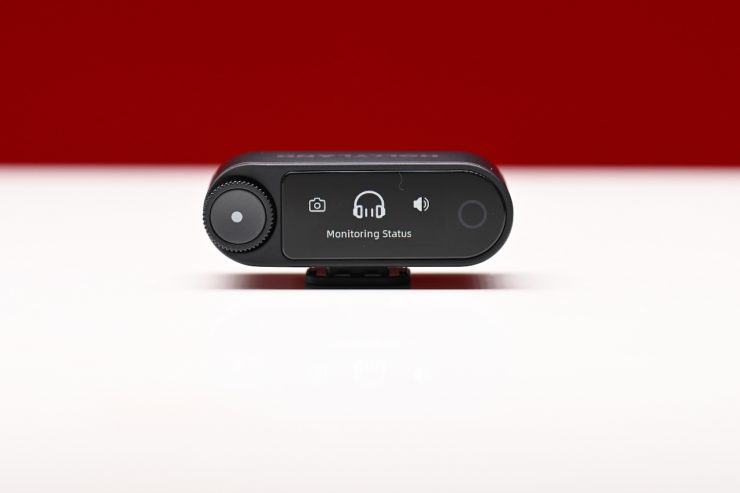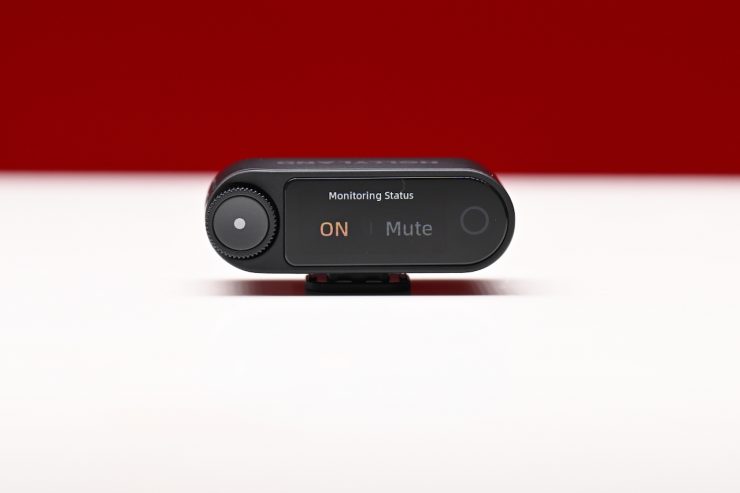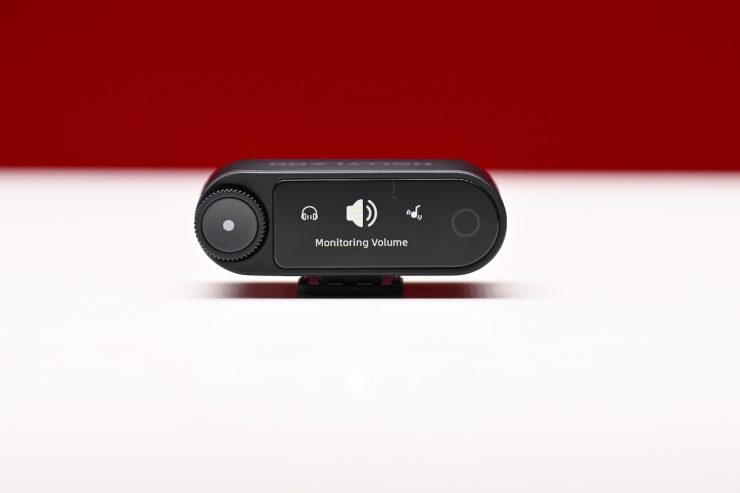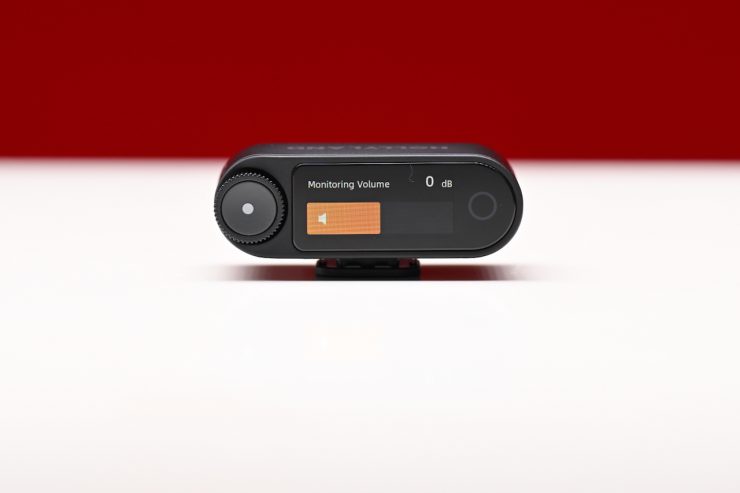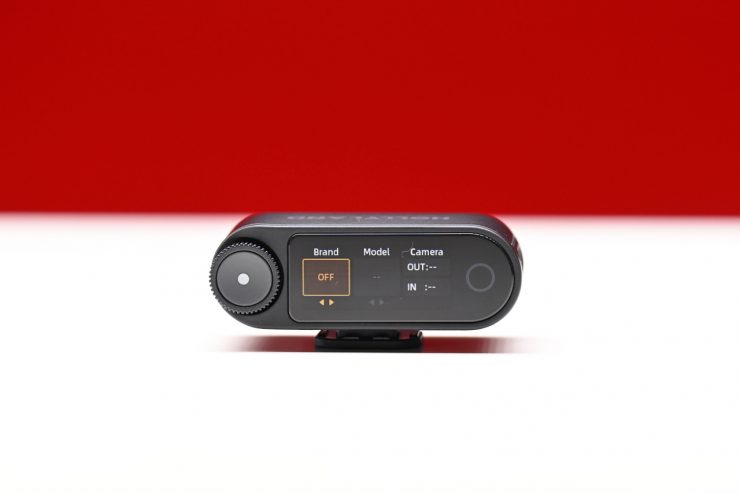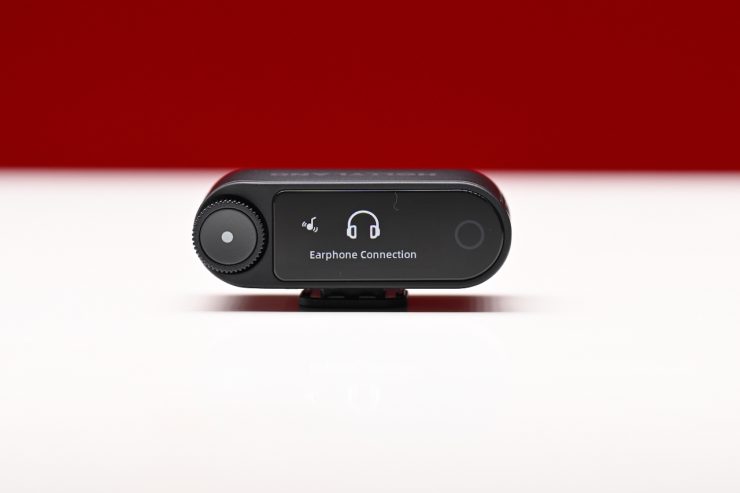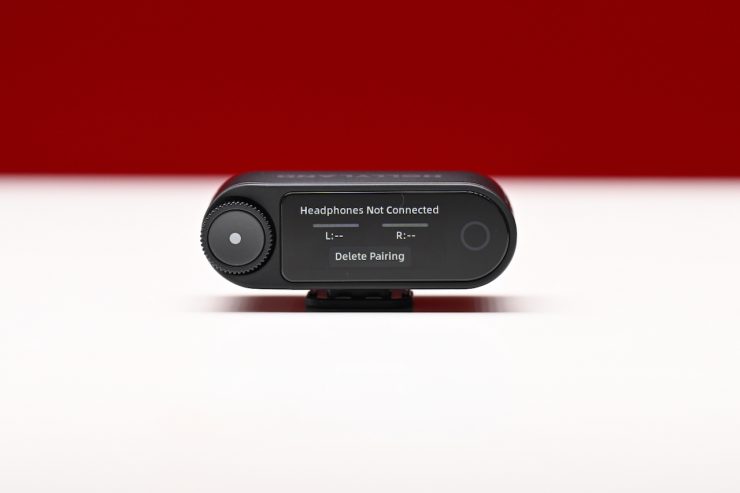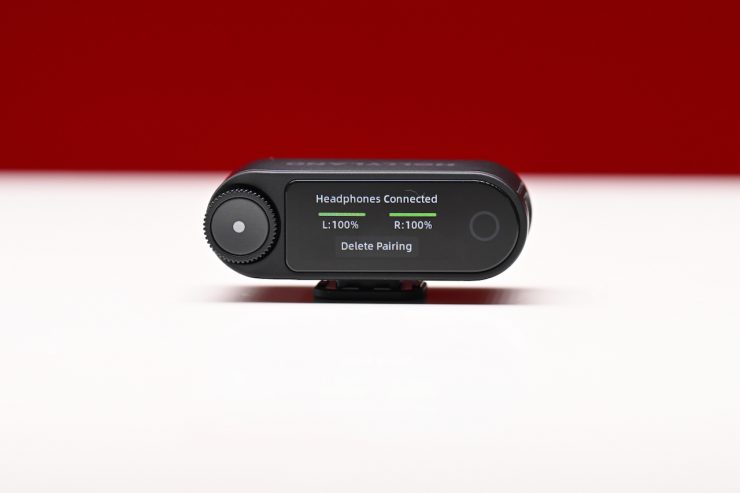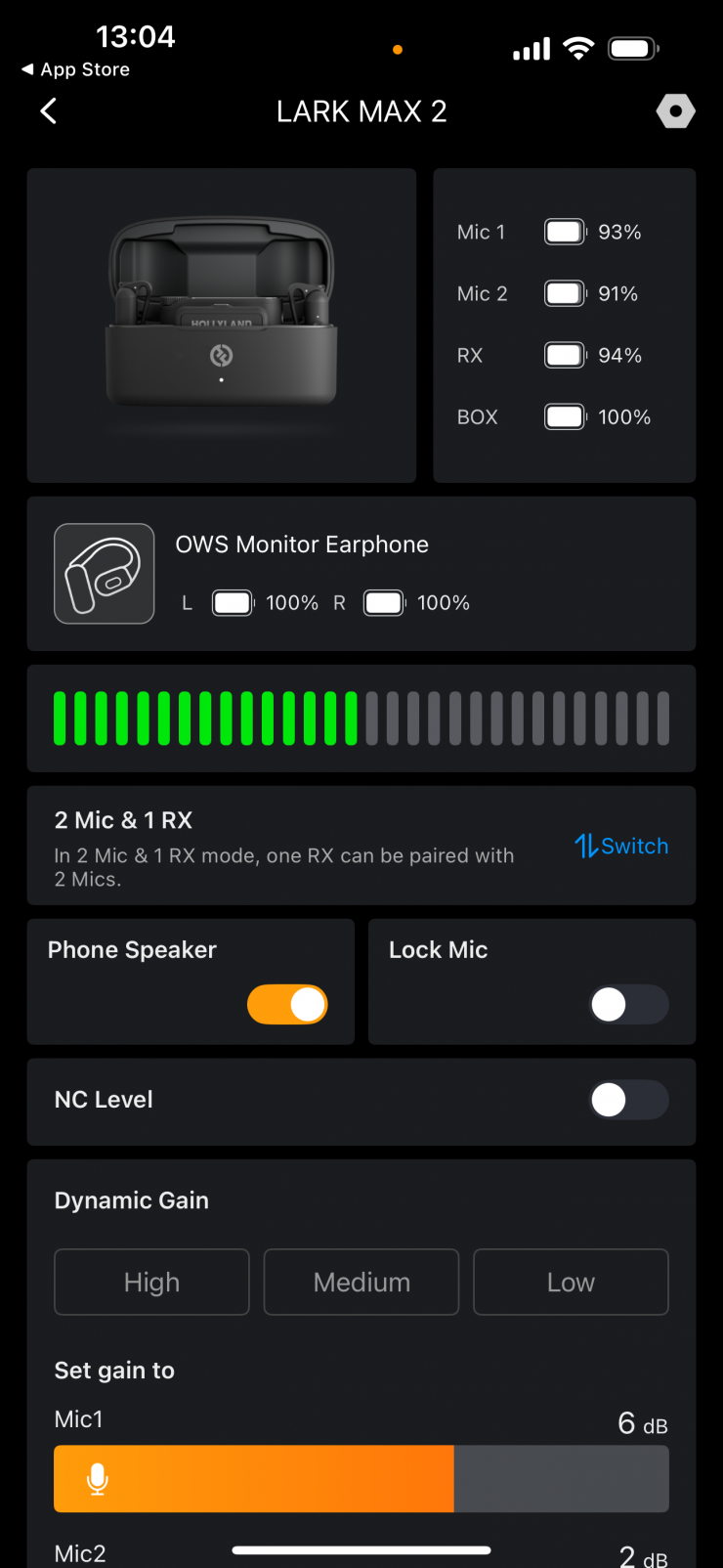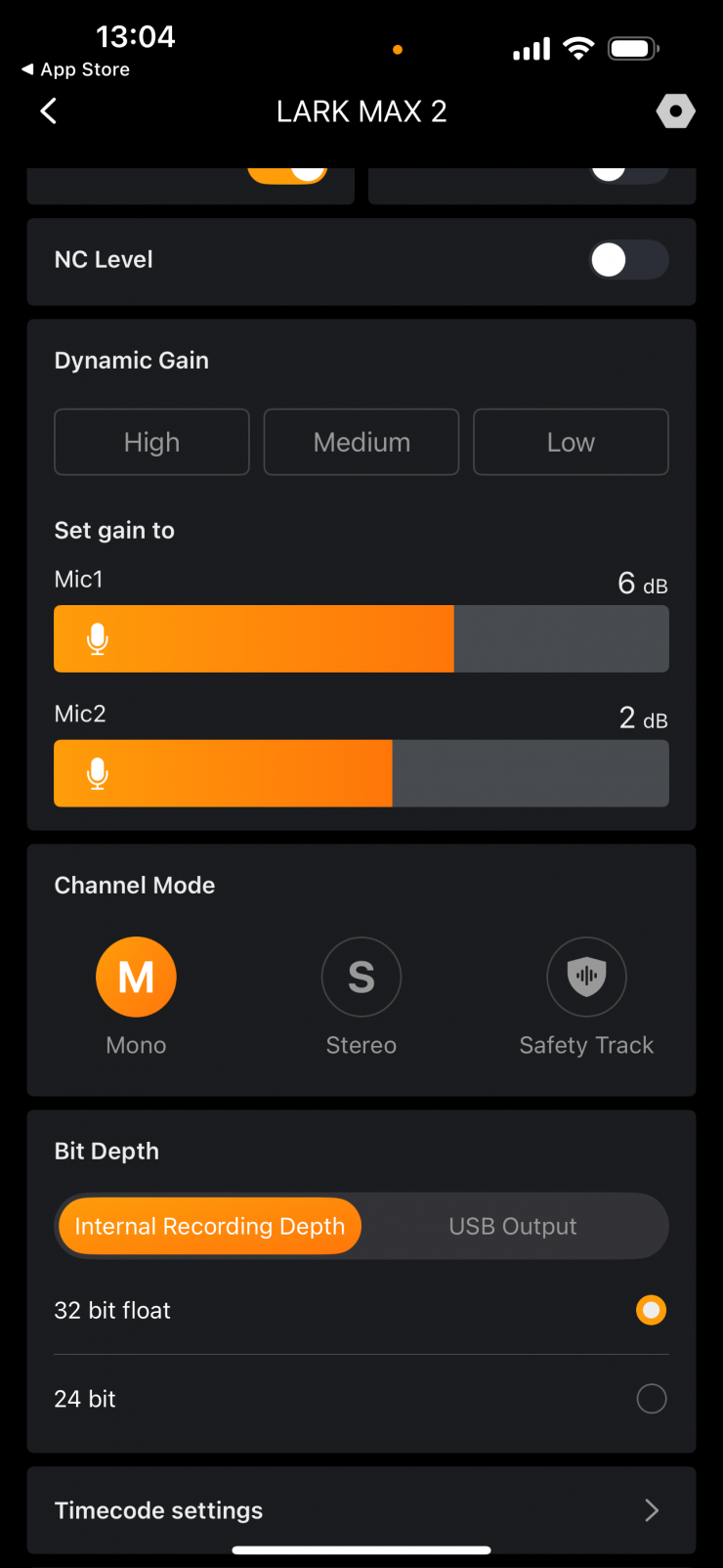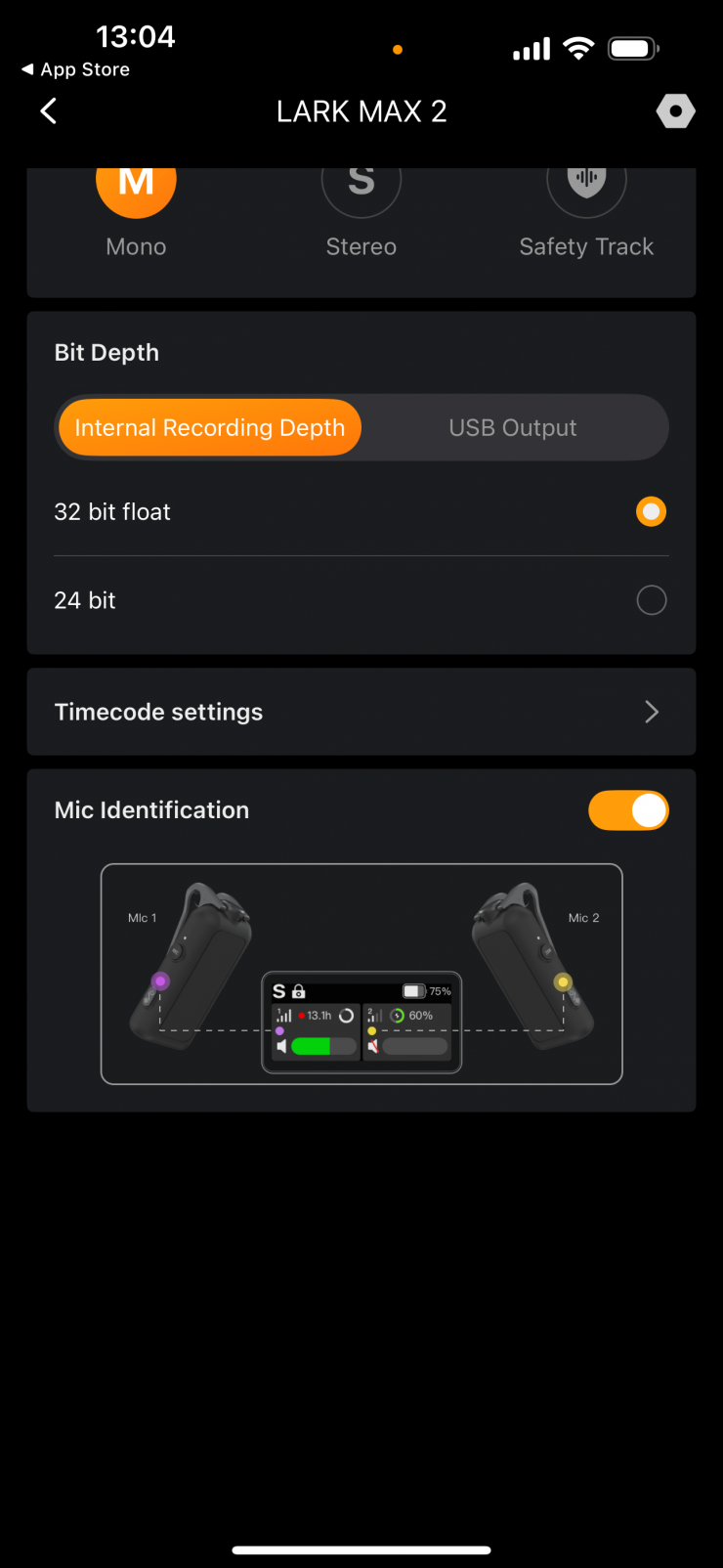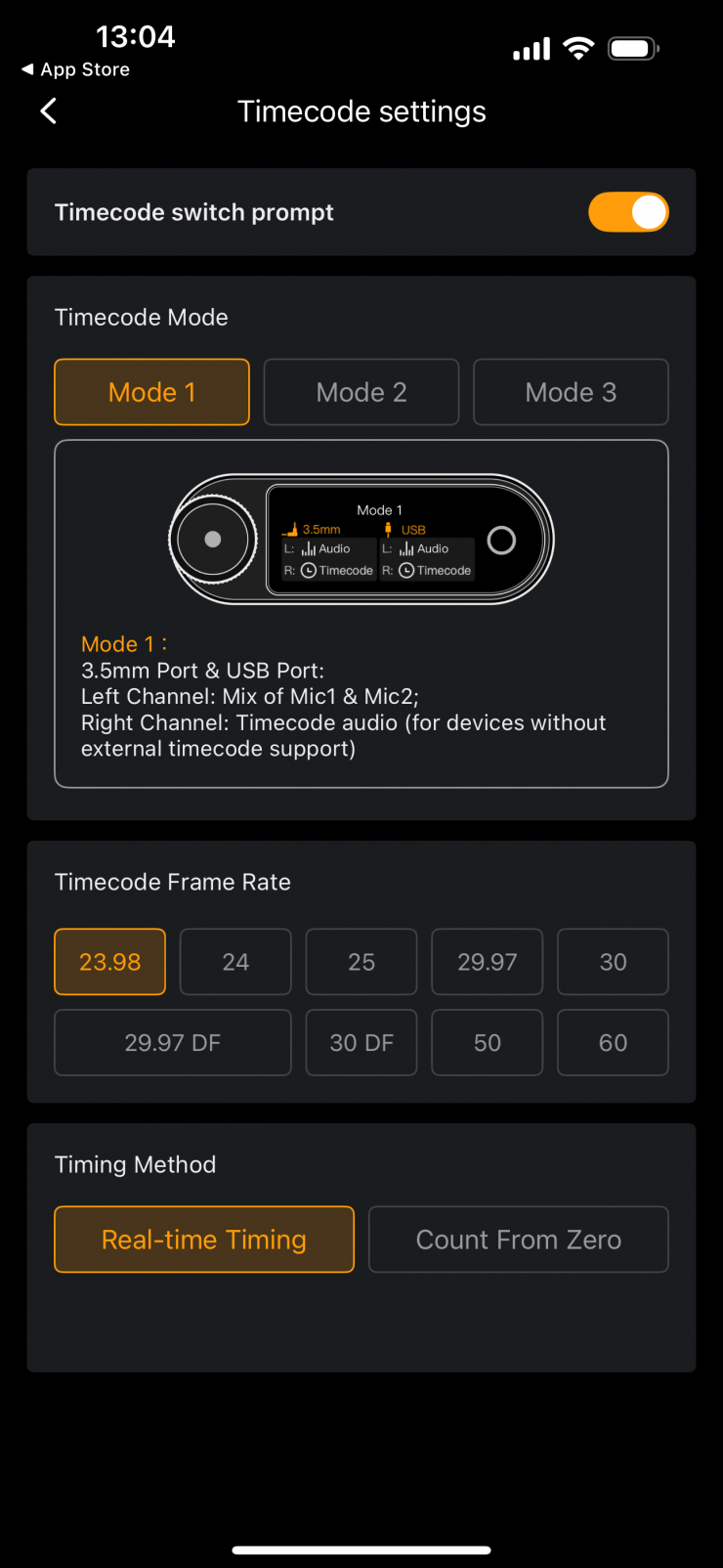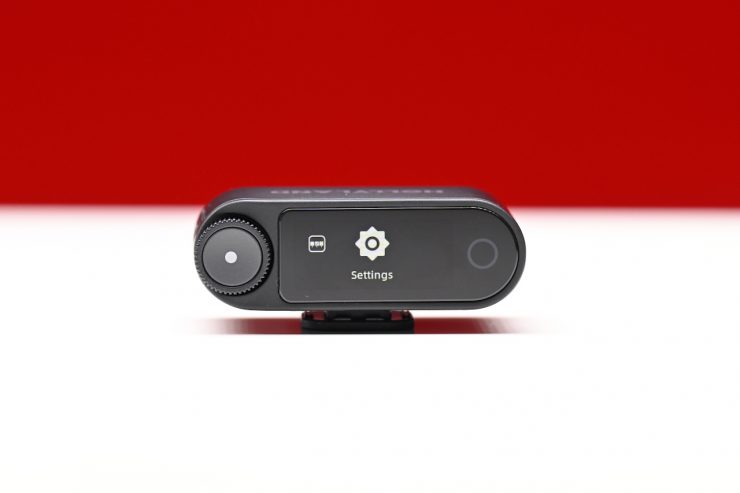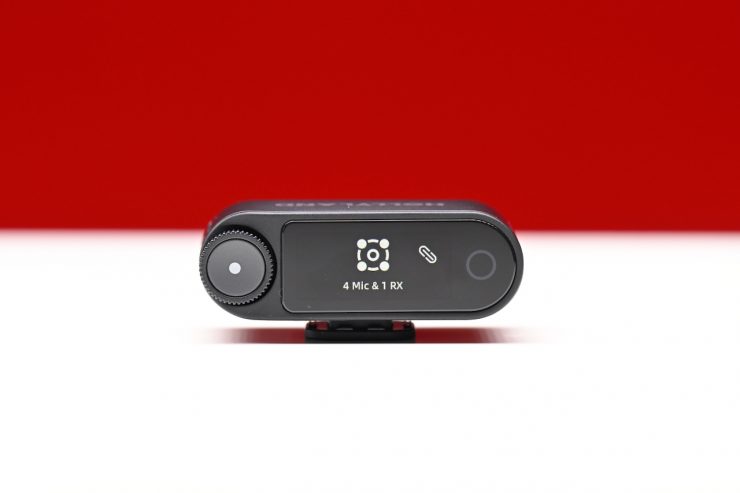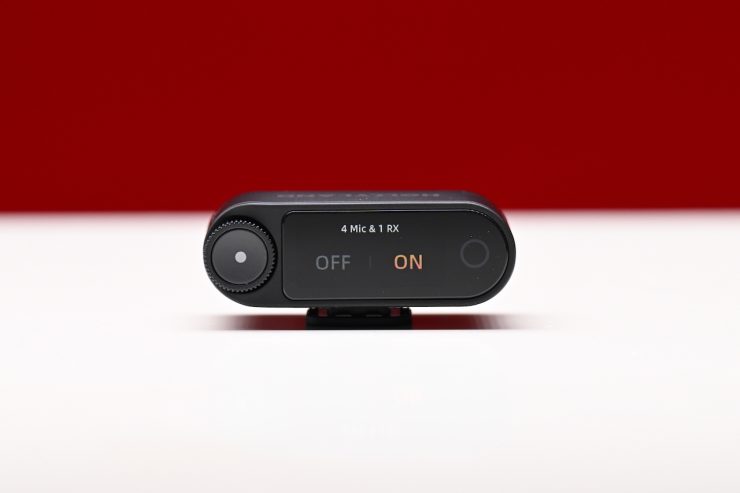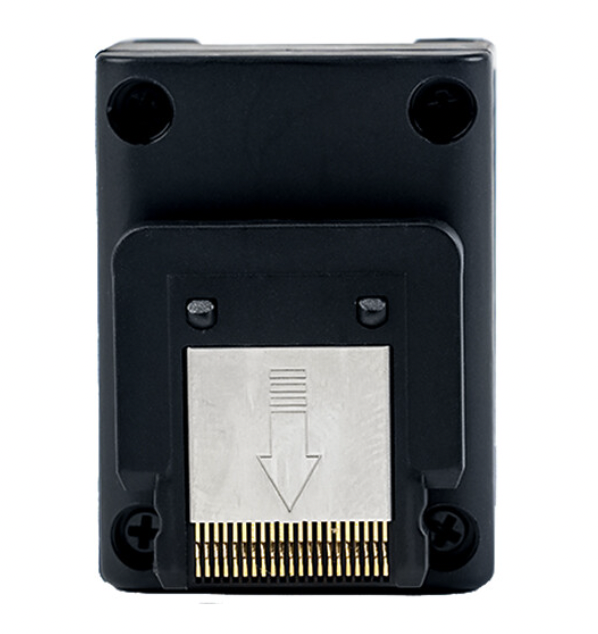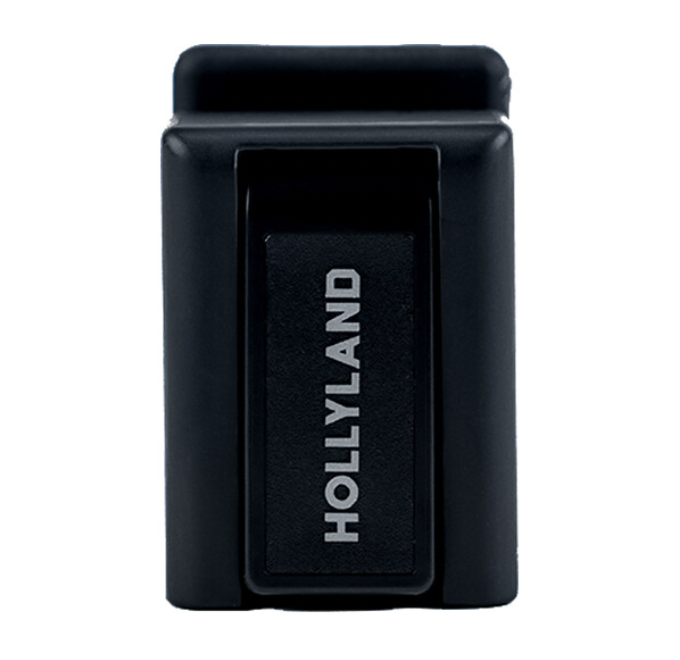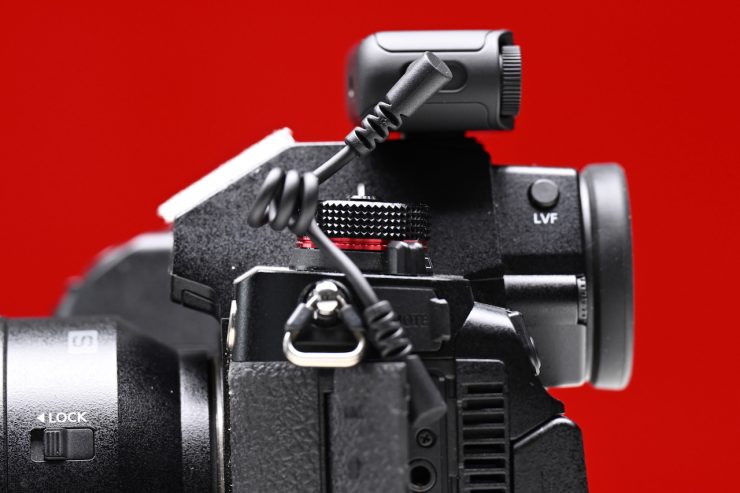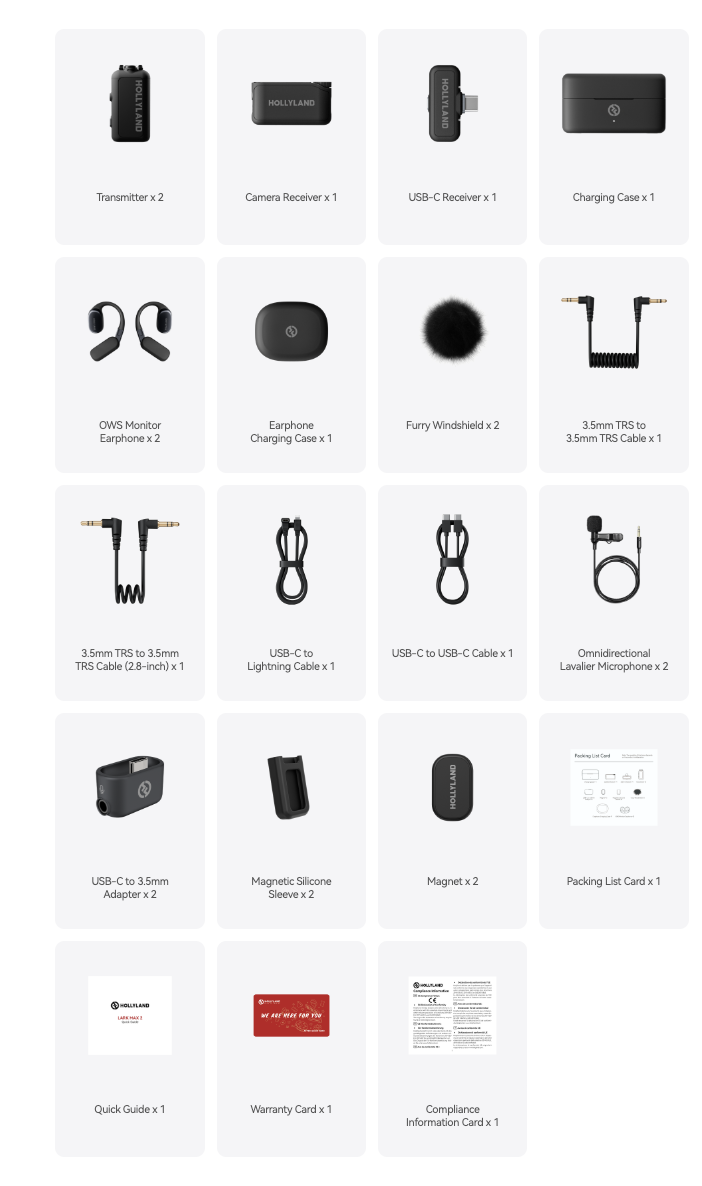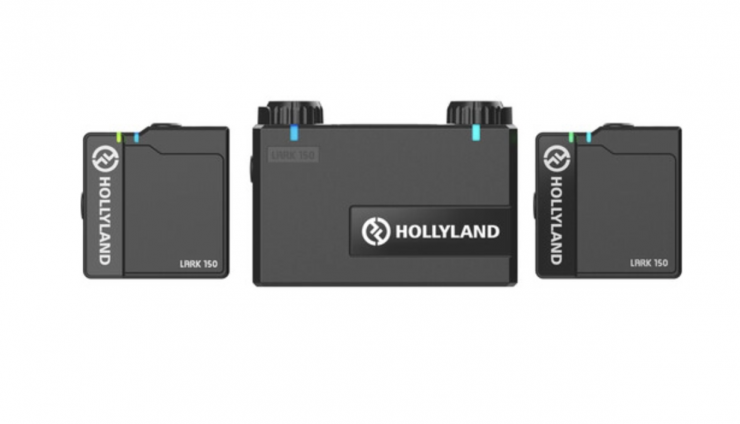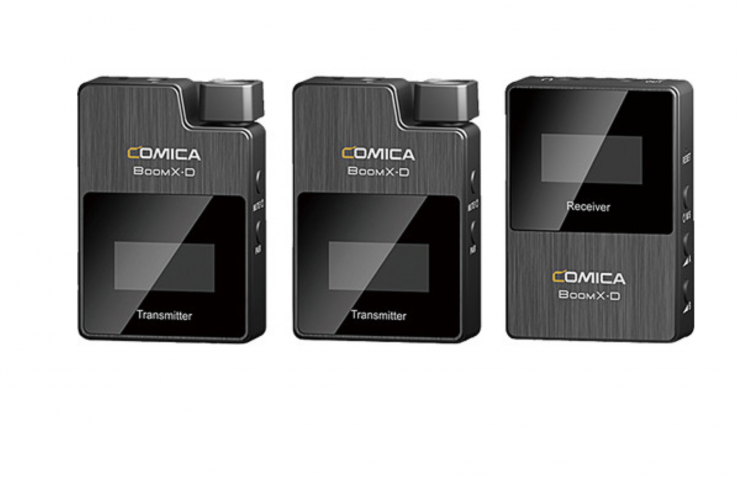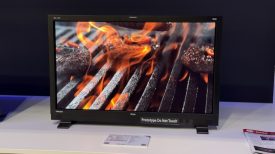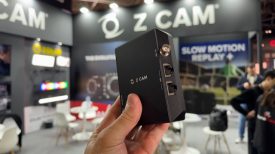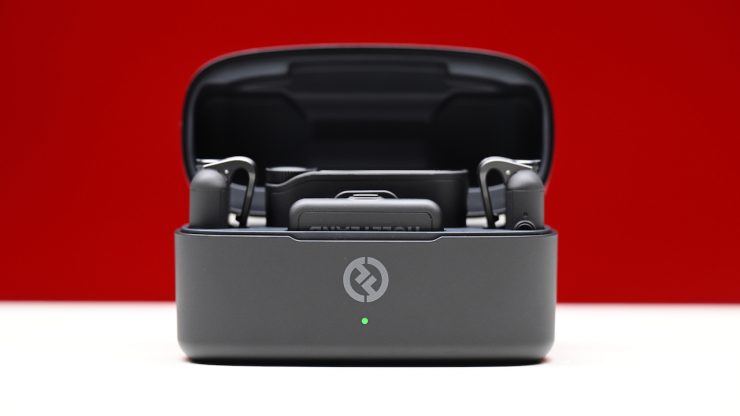
Hollyland recently announced its new LARK MAX 2 wireless microphone system. The LARK MAX 2 is a feature-packed, user-friendly digital wireless microphone system with support for wireless monitoring designed for videographers, podcasters, streamers, and content creators.
It lets you capture broadcast-quality sound straight out of the box, recording directly to cameras or USB-C/Lightning mobile devices. It is claimed to be able to deliver 32-bit/48 kHz audio throughout the entire signal chain.
There is AI noise cancellation and auto-gain, and each transmitter also functions as a 32-bit float recorder with a built-in timecode generator, providing backups in case of signal dropouts.
The LARK MAX 2 is an all-in-one wireless lavalier microphone system with MaxTimbre Mic technology and advanced ENC technology. Just like the original LARK MAX, the MAX 2 version has built-in memory for internal recording, but now you will be able to do 32-bit float recordings directly to the small-sized TX units. There is also automated gain control.
If you happen to own a Sony camera, you can use the included Hollyland hot shoe connector that attaches to the RX unit, which will pass audio directly into the camera without needing any cables.
Hollyland also includes a phone RX unit, which is handy, especially with so many people now using smartphones for video work.
Like most budget wireless audio systems, the LARK MAX 2 utilizes 2.4G wireless Adaptive Frequency Hopping (AFH) technology.
Since the launch of the original RØDE Wireless Go, which at the time was the world’s smallest wireless microphone system, we have seen a plethora of options come to market with fairly similar features. The RØDE Wireless Go immediately struck a chord with budget filmmakers, YouTubers, and Vloggers, and that is undoubtedly why we have seen so many other companies releasing similar systems over the years.
Most of the small-sized budget wearable wireless audio systems have all had a small square or rectangular-style design, and that is also true of the LARK MAX 2.
Concept
The concept behind the LARK MAX 2 was simple, make an extremely cost-effective, compact, and that was easy to use and that could work with a wide array of devices.
As I mentioned earlier, the target audience for this product is undoubtedly vloggers, filmmakers on a budget, anyone live streaming, and social media content creators.
Key features
- 2-Person Interviews, Videos, Streaming
- Camera-Mount and USB-C Receivers
- 2 Compact Clip-On Transmitters with Mics
- 2 OWS Wireless Monitor Earphones
- 32-Bit Float Recording on Transmitters
- 48 kHz/32-Bit Audio, 128 dB SPL
- Noise Cancellation, Auto Gain Control
- Timecode Generator
- 11-Hour Battery/36-Hour with Charge Case
- Charging Case, Magnets, Windscreens
Build Quality
The build quality is what you would expect for a product at this price. The TX and RX units are very lightweight, and they are made out of some sort of composite material.
For its intended audience and user base, I wouldn’t expect it to have an all-metal construction like much more expensive wireless systems. I think the build quality will be perfectly sufficient for most users.
The plastic clip on the RX units is different from what you would find on a RØDE Wireless Go.
The buttons and dials on both the TX and RX are reasonably tactile and easy to use.
RX Unit
The RX unit is able to receive up to four channels. It has internal antennas to keep the size and footprint to a minimum.
It features 1x 1/8″ / 3.5 mm TRS unbalanced line output and 1x 1/8″ / 3.5 mm TRS headphone output.
It has an internal battery, and the claimed operating time is 12 hours. There is also a USB-C port, so you can also charge your phone.
TX Units
The TX units are relatively small and compact.
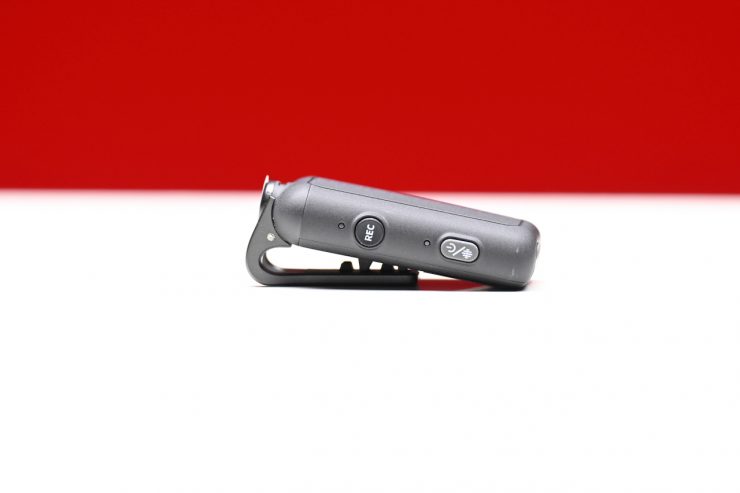
There are two buttons on the side. One is to start the internal recording, and the other is for turning it on/off or pairing.
The RX units feature 8GB of internal memory, and you can record up to 10 hours in 32-bit float, or 14 hours in 24-bit. You can also use the transmitter as a standalone recorder, capturing audio without needing a separate device. 8GB Storage / 10 hours of 32-bit float recording / 14 hours of 24-bit recording.
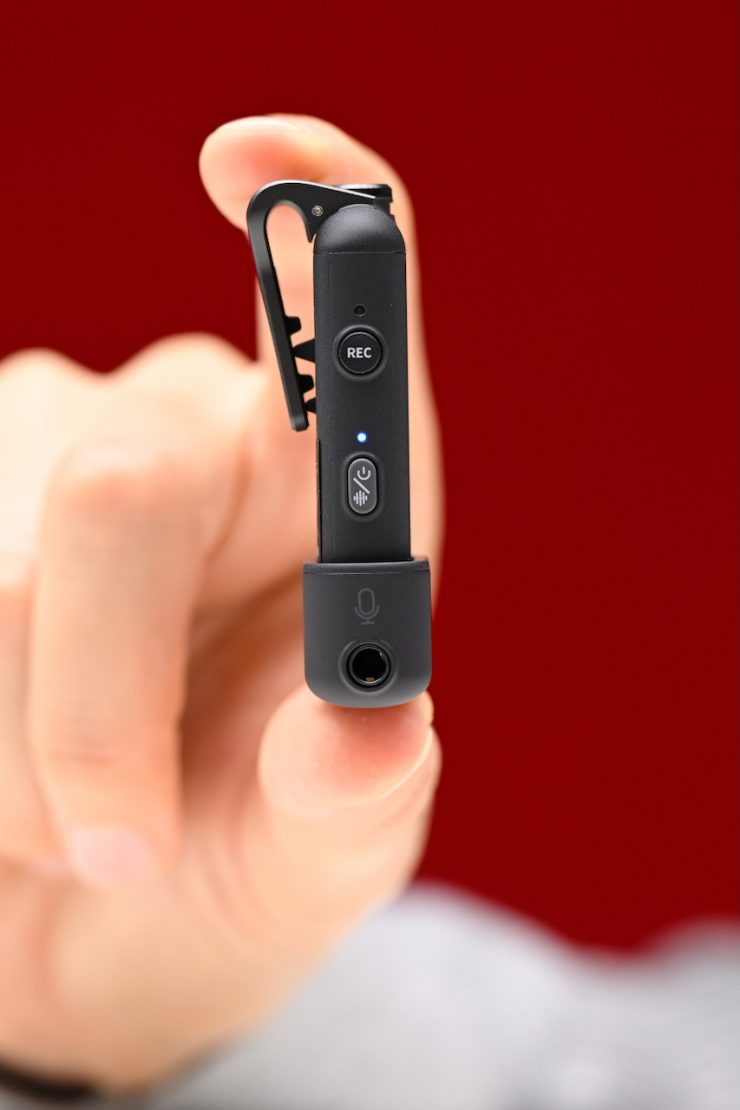
You can just press the Rec button on the side of the TX units to start/stop recording. I would have preferred to have seen a system where you need to hold the Rec button to stop the recording, as a one-touch system can lead to accidents happening.
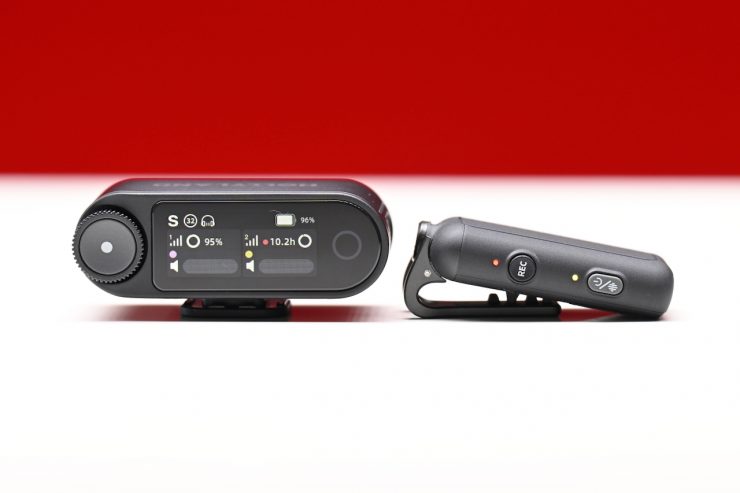
On the RX unit, you can see if the TX units are recording, and the TX units will have a little red light illuminated.
In the US, Zaxcom owns a patent regarding the simultaneous transmitting and recording of audio from a wireless audio device, so I am not sure if Holyland is paying a licensing fee or not.
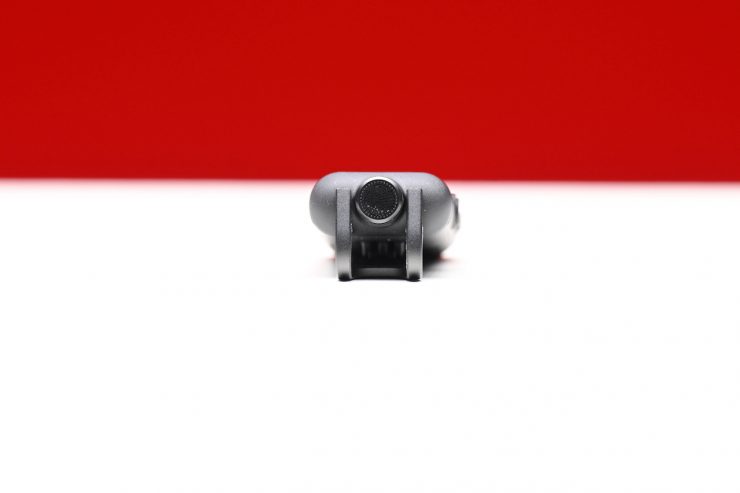
On the top, there is an omnidirectional built-in microphone.
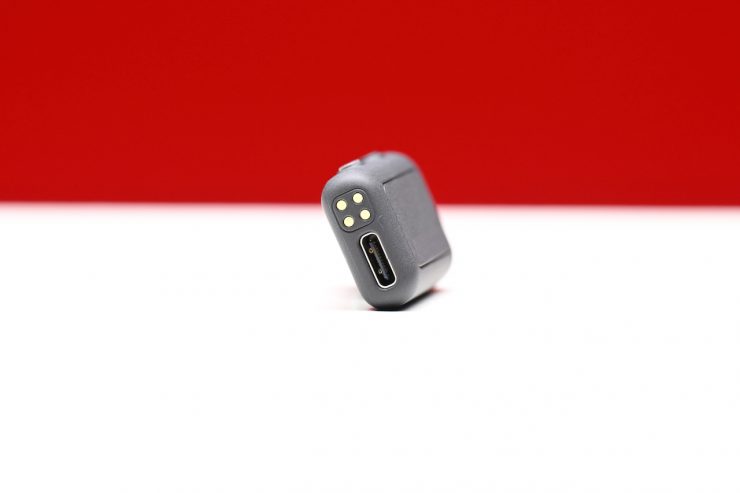
The TX units have an internal battery, and their claimed operating time is 11 hours. There is also a USB-C input, so you can run them remotely as well if need be.
Hollyland OWS Monitor Earphone (2.4 GHz)
You can wirelessly monitor camera audio via the Hollyland OWS Monitor Earphones (2.4 GHz) when they are paired to the receiver. These have an operating range of up to 333′ (line-of-sight). They use both adaptive 2.4 GHz frequency hopping technology and Bluetooth.
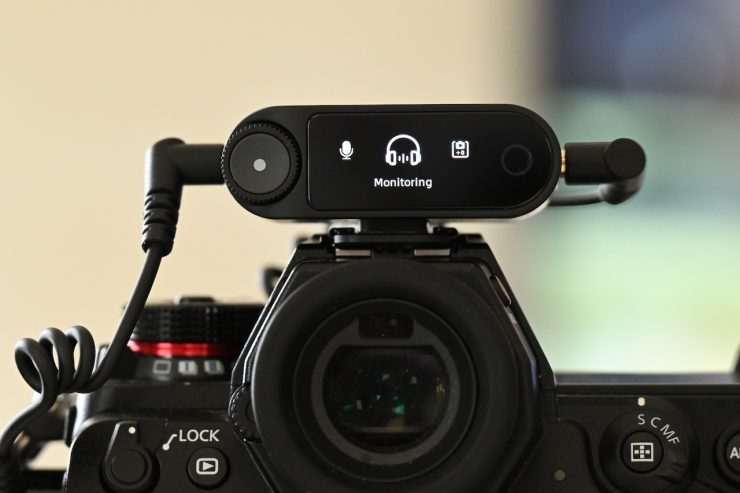
There are a few options for how you can use them with the LARK MAX 2. Firstly, to set them up, you need to go into the Monitoring section of the menu on the RX unit. Here, there are options for how you want to monitor, but first, you need to pair them.
To pair the Hollyland OWS Monitor Earphones, you need to have them in their case, with the case opened. You then need to go to the Earphone Connection in the Monitoring section. And tap on it. While you do this, you have to hold the button on the back of the Hollyland OWS Monitor Earphones case for 6 seconds. The display will then show that the earphones have paired.
The next step is to choose your Monitoring Source, where you have the choice of Camera or RX. In RX, you will be hearing audio directly coming from the RX unit.
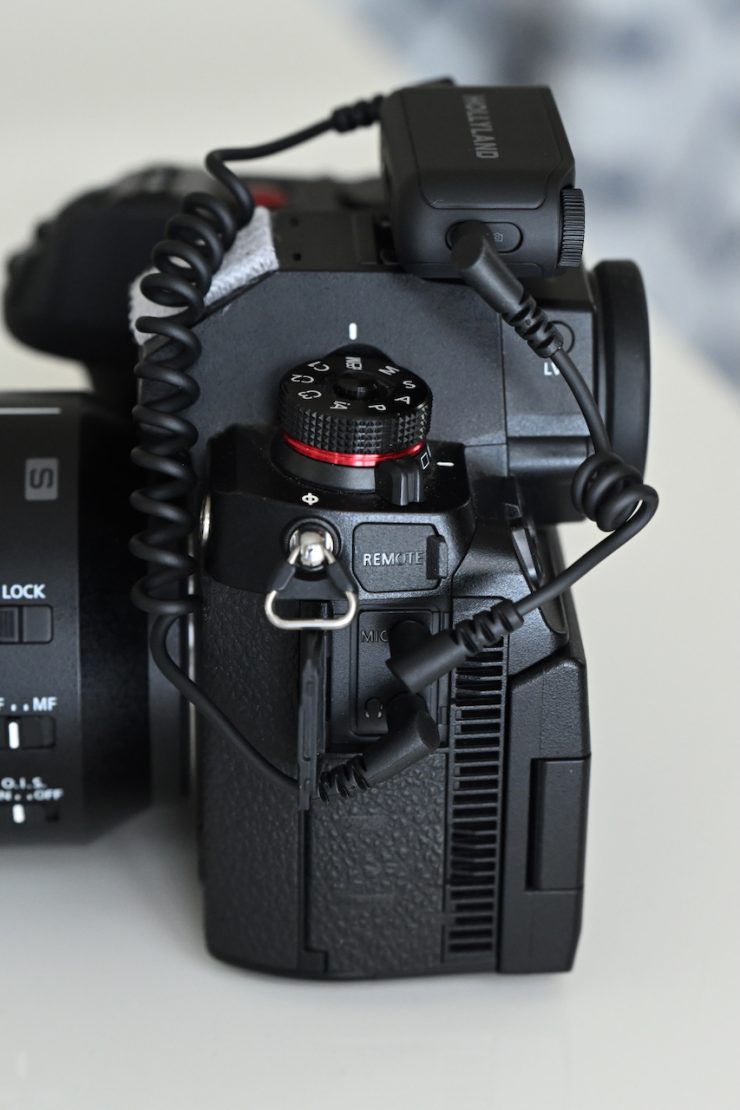
If you select Camera, you can monitor the audio that is coming directly from the camera, but to do this, you need to have a 3.5mm cable that goes from the headphone out of your camera to the headphone jack on the RX unit. Choosing Camera is the safest option, as you can hear exactly what is being recorded.
You can also change the Monitoring Status from On to Mute, and you can adjust the Monitoring Volume.
If you are just using the TX units to record 32-bit float without a camera or other audio recorder, you can still monitor the audio using the earphones. The caveat is that you still have to use the RX unit, even though it’s not going to be connected to a camera. Unfortunately, you can’t just pair the earphones directly to the TX units.
You can also use the earphones with the USB-C RX to monitor the audio from a smartphone, tablet, or compatible action camera.
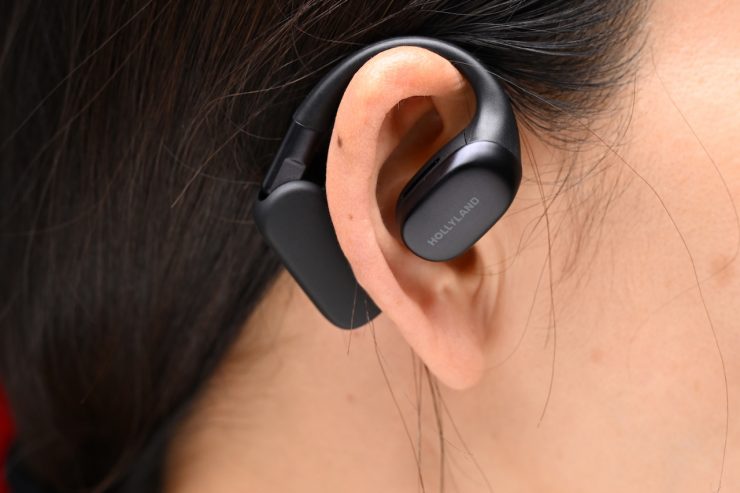
The earphones feature an open-ear design with adjustable hooks for a secure and comfortable fit. The headphones have a claimed 25ms latency and up to 18 hours of battery life. As these are not full Bluetooth headphones, the latency is actually pretty low. While it isn’t perfect, it is significantly better than using Bluetooth headphones. As they don’t sit completely in your ear, they are pretty comfortable to wear, but the caveat is that you will struggle to hear if you are in a noisy environment. The only thing I don’t like is that when you touch the side of them, they make a beeping noise. This is because you double-tap to turn it on or to mute it. Anytime you try to adjust the headphones when you are wearing them, you get this beeping noise.
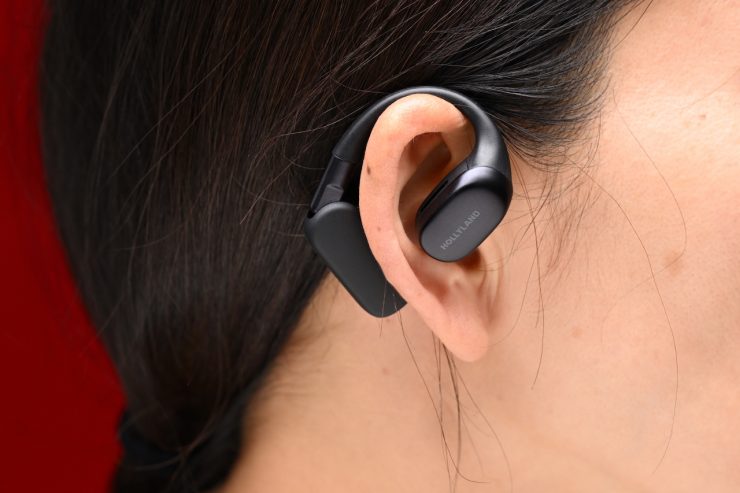
As I mentioned earlier, in addition to monitoring audio from the camera, the earphones also support wireless audio monitoring from smartphones through the receiver, either via the USB-C receiver or the camera receiver. You can also monitor audio directly from both. This versatility allows for real-time applications like live streaming, podcasting, and voice chat.
The headphones come in their own charging case, which is a nice touch.
USB-C plug-in receiver
In the kit, you also get a USB-C plug-in receiver for use with USB-C compatible iOS and Android devices.
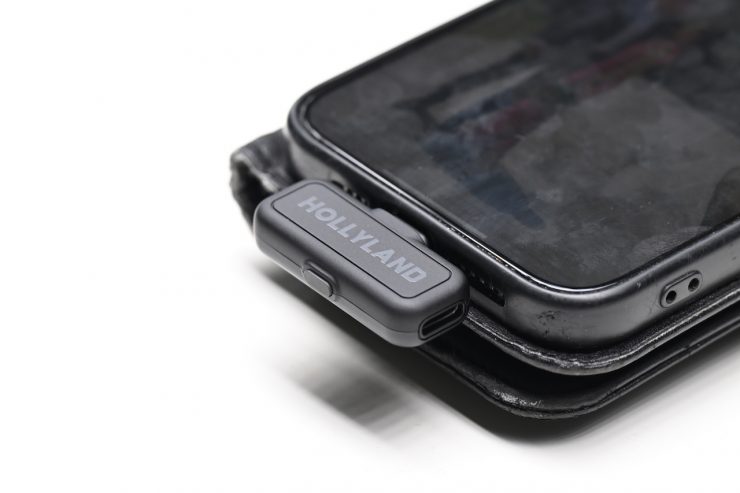
This allows you to create a very portable and compact audio solution when working with a smartphone or tablet.
I tried the USB-C plug-in receiver with an iPhone 15 Pro MAX and the Blackmagic camera app, and it worked well.
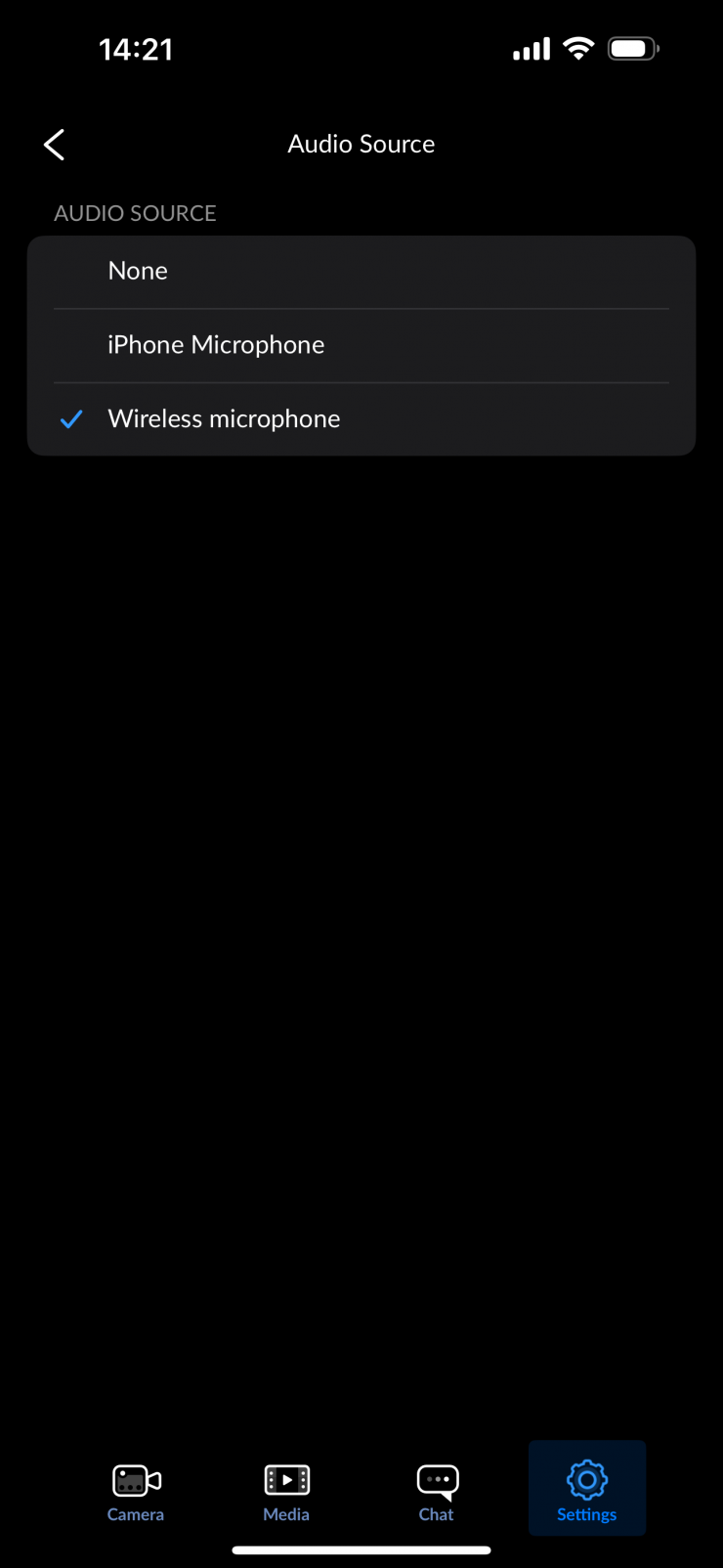
All you need to do is go into the audio menu in the app and select wireless microphone.
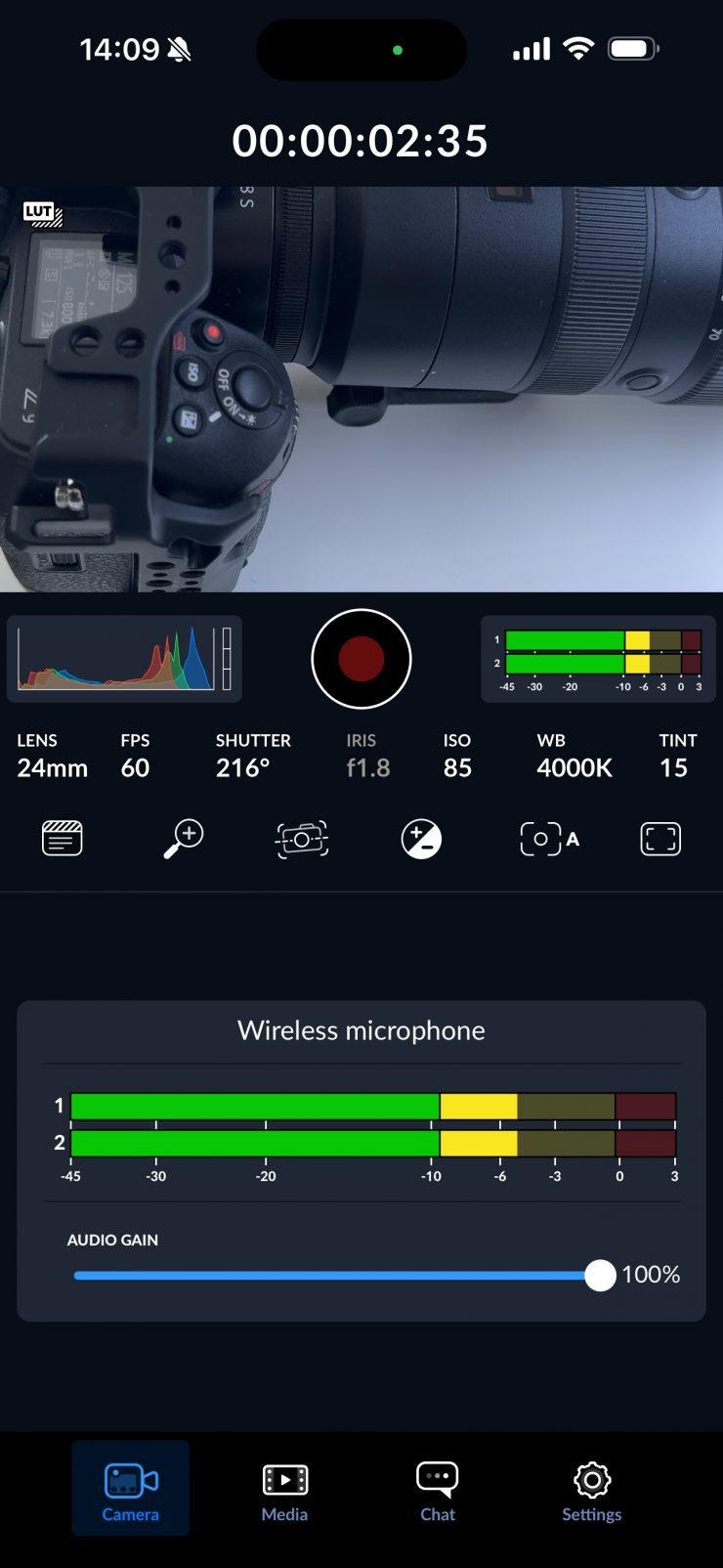
You can then make adjustments to the level.
What is nice is that you can still use the LarkSound app to make adjustments when the USB-C plug-in receiver is being used.
One thing to be aware of is that you can’t use the USB-C plug-in receiver and the regular RX unit at the same time.
TX & RX Charging Case
It is nice that the two TX units and the RX unit can be charged in their own charging case.
The charging case features a built-in 2000 mAh rechargeable battery, and it provides up to 36 hours of run time before it needs to be recharged.
Size & Weight
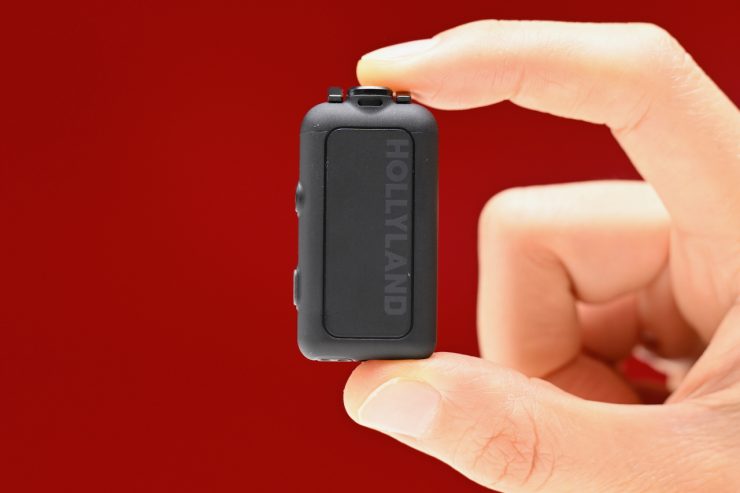
TX unit 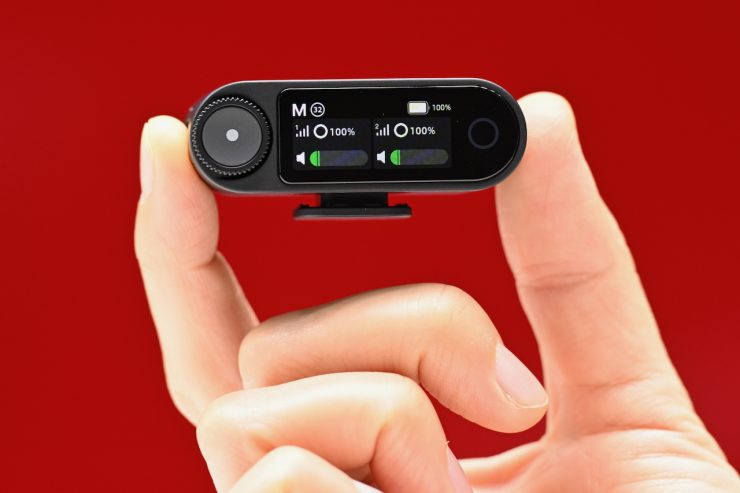
RX unit
The LARK MAX 2 TX units are reasonably small and lighter than a lot of other competing products, especially those that have onboard recording capabilities.
The TX units weigh 14g / 0.5 oz and have physical dimensions of 1.8 x 0.9 x 0.4″ / 45.1 x 23.4 x 10.2 mm, and the RX unit weighs 24g / 0.8 oz and has physical dimensions of 2.1 x 1.2 x 0.9″ / 54.2 x 29.5 x 22.3 mm
How does the weight and size of the TX unit compare to some other 2.4GHz systems on the market? Well, below you can see.
| WEIGHT | SIZE | |
| Hollyland LARK MAX 2 | 14g / 0.5 oz | 1.8 x 0.9 x 0.4″ |
| PicoGear PicoMic 2 Pro | 8g / 0.28 oz | 1.7″ x 0.7″ x 0.28″ |
| RODE Wireless PRO | 35g / 1.2 oz | 1.8 x 1.7 x 0.8″ |
| RODE Wireless GO 3 | 35g / 1.2 oz | 1.8 x 1.7 x 0.8″ |
| DJI Mic 2 | 28g / 0.98 oz | 1.8 x 1.22 × 0.8″ |
| Synco WAir-G1-A2 | 35g / 1.2 oz | 2 x 1.7 x 0.6″ |
| Hollyland LARK 150 | 20.5g / 0.7 oz | 1.5 x 1.5 x 0.7″ |
| Ulanzi U-Mic AM18 | 23g / 0.8 oz | 1.4 x 1.8 x 0.6″ |
| Comica Audio BoomX-D D2 | 29g / 1 oz | 1.5 x 0.9 x 2.2″ |
| Godox MoveLink Mini UC | 12g / 0.4 oz | 2.1 x 0.8 x 0.7″ |
| Comica Audio Vimo C3 Mini | 13g / 0.5 oz | 0.6 x 0.8 x 2″ |
| Moza WE10 Pro | 34g / 1.2 oz | 1.7 x 2.4 x 0.8″ |
I am not going to feature every similar wireless microphone system in this comparison because there are so many on the market. I will stick to the ones that most people are familiar with.
The Hollyland LARK MAX 2 TX units are smaller and lighter than any competing products on the market that offer internal recording.
Branding

The LARK MAX 2 does have branding on it, like just about every other similar system on the market. I would have preferred to have seen no logos at all. You could just use a black marker or some tape to cover it over.
I almost always hide microphones so they are never seen, but the LARK MAX 2 is arguably a little big for you to do that; however, it is possible to conceal it to a certain extent if you have to. Of course, if you are using the included Lvalier, then that is a lot easier to do.
Mounting Options
Hollyland gives you two ways to mount the TX units. The TX units can be clipped directly onto clothing, or you can use the included magnetic plates.
Its hover-clip mechanism allows for easy clothing attachment. The backclip design conceals the device.
The TX units do come with a windshield, which works reasonably well, but it is very large and distracting.
The second way to mount the TX is by using the magnetic clip. This allows you to attach the unit to a shirt or other type of clothing without needing to clip it on.
Now, in order to do this, you need to put a magnetic sleeve cover over the hover-clip mechanism. You then use one of the included magnetic plates to secure it.
You can use this combination to sort of hide the TX units if you want a bit more discretion.

While this does work, because the TX units are a certain size, they do bunch up under clothing.
You can use it as a plant microphone to put it in positions where it could be hidden or at least very inconspicuous. This increases its versatility and usefulness.
Lavalier Mics
The kit includes two lavalier microphones. These come with clips and windshields.
The capsule on the lavalier is pretty big, and the mic isn’t very discreet when mounted on clothes.
The standard windshield is pretty large and a bit too distracting for my liking.
Now, to use the lavalier microphone with a TX unit, you need to attach a small accessory to the bottom of it that adds a 3.5mm input.
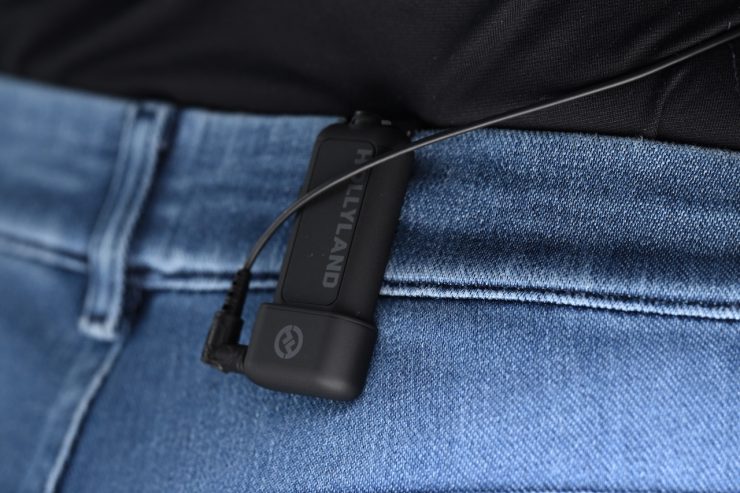
The lavalier 3.5mm input connector will then stick out of the side of the RX unit. I actually don’t mind this, because it means the cable isn’t coming out of the top, and it is less likely to get bent or broken.
Built-in omnidirectional condenser capsule

The LARK MAX 2 TX units feature a built-in omnidirectional condenser capsule. This looks to be a similar style of built-in microphone that is found on other competing products.
The internal capsule’s omnidirectional polar pattern is claimed to ensure reliable audio pickup even if mic placement is less than ideal, and the 20 Hz to 20 kHz frequency range should attenuate sub-bass tones such as rumble and boominess.
The sound pressure level is 128dB SPL, and the signal-to-noise ratio is > 70dB.
The microphone’s environmental noise cancellation (ENC) is said to ensure more accurate sound recreation in noisy environments. Users can adjust the ENC strength to provide the best results in any situation.
The LARK MAX 2 TX units come with furry windsocks for recording in windy conditions. These work reasonably well, but they are almost comically large and quite distracting to look at.
Timecode
The LARK MAX 2 features a built-in frame-level timecode system that synchronizes video and audio recordings through both 3.5mm and UAC outputs.
You can set the frame rate and also choose between a preset timecode or time of day.
Here is how the timecode works:
Frame-Level Synchronization: The LARK MAX 2 generates a timecode signal that aligns audio recordings with video footage at the frame level, ensuring precise synchronization.
Output Options: Timecode can be transmitted through both the 3.5mm TRS analog output and the USB-C UAC digital output, providing flexibility for various recording setups.
Post-Production Efficiency: By embedding timecode directly into the audio signal, the system simplifies the process of aligning audio and video tracks during editing, reducing the need for manual synchronization.
Compatibility: The timecode feature is compatible with a wide range of devices, including cameras and smartphones, enhancing its versatility in different production environments.
Hollyland gives you three different Timecode Mode options. These let you choose how the timecode is going to be outputted. What you need to be aware of is that if you are using LTC audio timecode via a 3.5mm input, you will only be able to use 1 channel of audio, or have both TX signals combined into one channel as the timecode signal is getting recorded to he right audio track.
With a compatible Sony camera that can take timecode through USB-C, this won’t be an issue.
One of the issues I have with the Hollyland system is that there should be a clear and concise way of seeing that the timecode being generated by the RX unit and the timecode being recorded internally to the audio files on the TX devices are in sync. There is nothing that shows this. Hollyland needs to address this in the app, as there is not much point in having timecode if users can’t be guaranteed that everything is in sync.
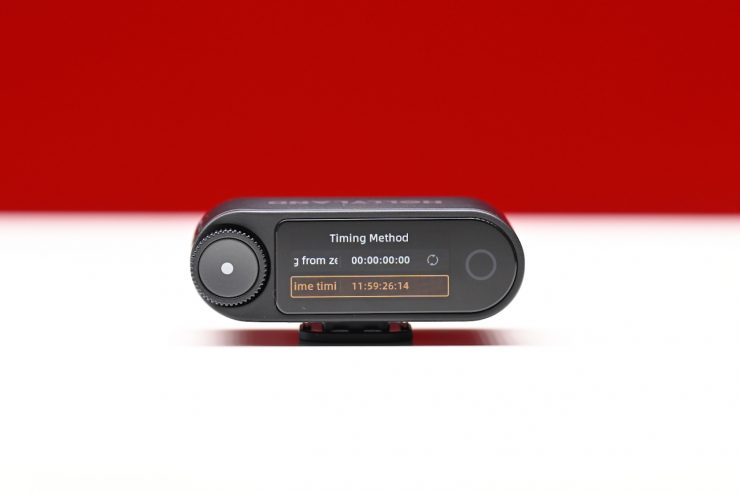
When you first use the system, the timecode time of day setting is preset to UTC+8 (Beijing time), and there is no way of changing it on the RX unit.
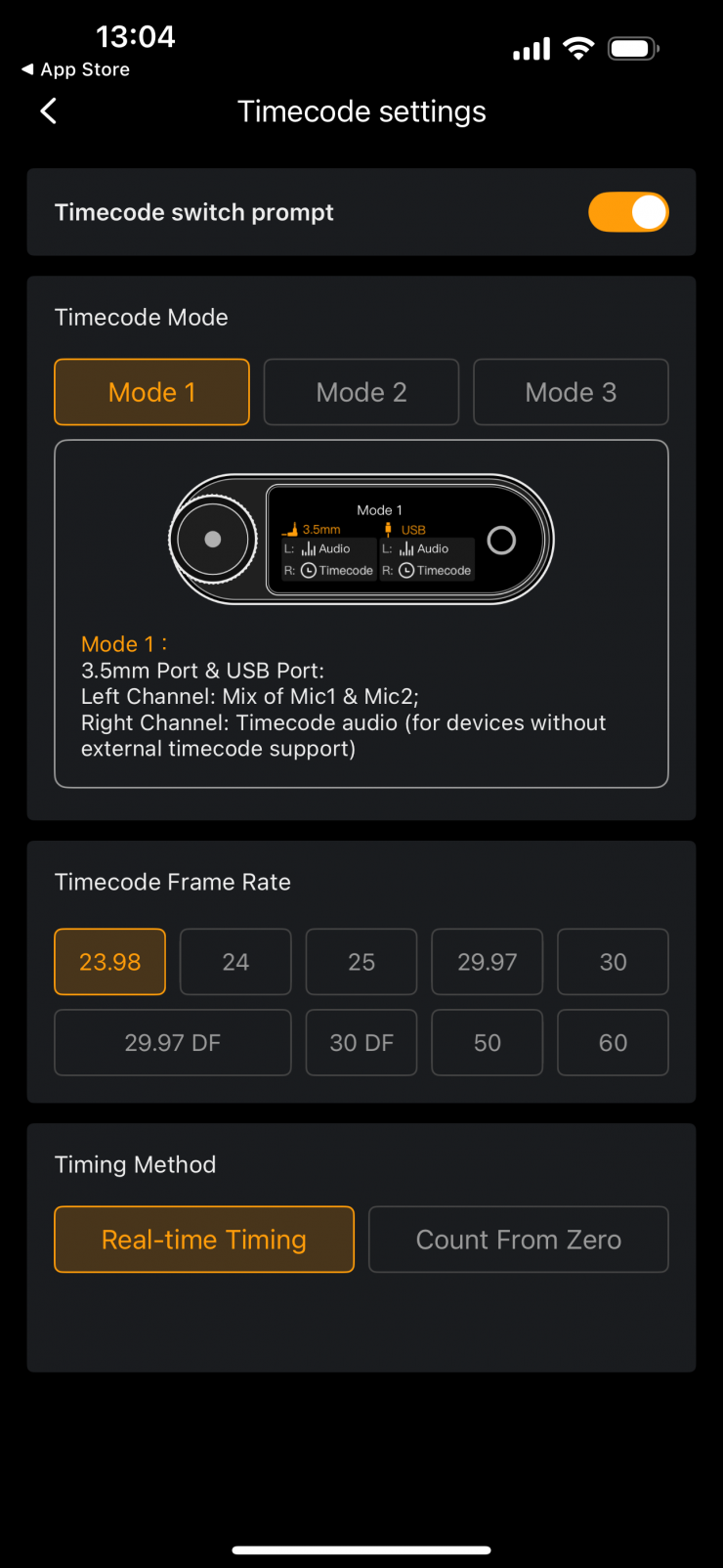
The only way to change this is to go into the LarkSound app and select Real-time Timing.
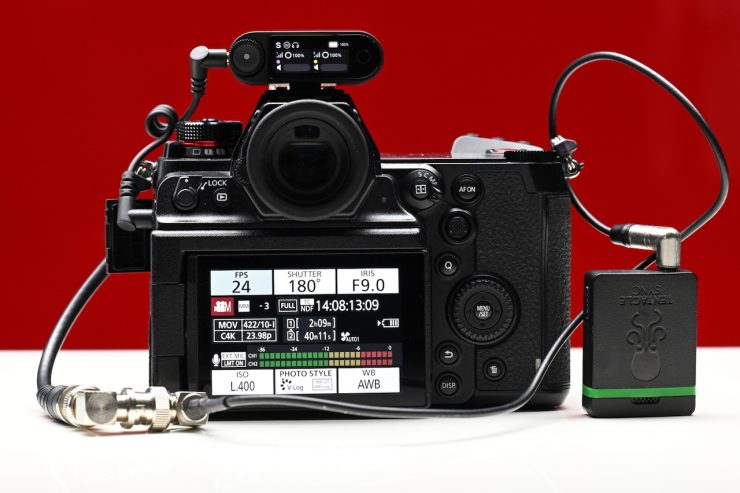
As the Real-time Timing setting is supposed to be taking time based on your smartphone, I wanted to see if it would match a Tentacle Sync. With the Tentacle Sync app, you can also use your phone to set and generate the time of day. I attached a Tentacle Sync to the Panasonic LUMIX S1H, and then I recorded on the LARK MAX 2 TX units. In theory, the timecodes should match. Unfortunately, they don’t. The time codes were off by a large margin.
I also discovered another issue that the internal recordings on the TX devices weren’t always recording timecode. I did numerous tests and tried different configurations, and I still couldn’t discover what was causing this.
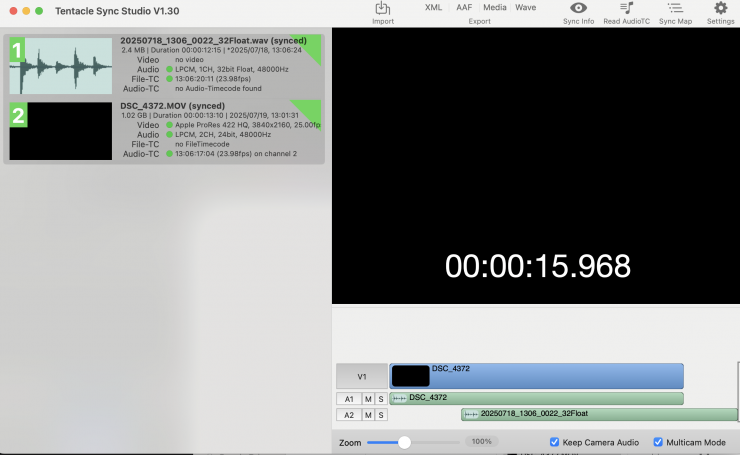
If I used a program like Tentacle Sync Studio, I had no issue with syncing up the internal 32-bit recordings from the TX unit and the footage that was recording LTC audio to one of the audio tracks.
Frequency band & Range
Just like so many other affordable wireless systems, the LARK MAX 2 utilizes the 2.4 GHz frequency band.
By using the 2.4 GHz frequency band, users don’t need to worry about scanning for channels to get a strong signal. However, 2.4 GHz systems can be very susceptible to interference, and they tend to have a limited operating range.
Hollyland claims that the operating range of the LARK MAX 2 is up to 1115.5′ / 340 m (Line of Sight). I will put this claim to the test further down in the review.
Mono/Stereo/Safety Track
The LARK MAX 2 RX supports Stereo, Mono, and Safety Track modes.
Use it directly as a USB-C Mic Source
You can plug the LARK MAX 2 RX unit directly into a computer by using the included USB-C to USB-C cable. This lets you utilize your LARK M2 system as a direct mic source for online video calls in Skype, Zoom, etc.
Display & Control
The LARK MAX 2 features a fairly easy-to-see touchscreen. The main screen shows you the signal strength, the battery level of the TX units and the RX unit, the mode it is operating in, and if 32-bit or 24-bit processing has been selected. You can also see if the Noise Cancellation is active.
I don’t consider the LARK MAX 2 to be an entry-level or beginner wireless audio system, because the menu and settings are fairly comprehensive, and they could very well be confusing for some users.
There are a lot of settings and menu items (far more than I have ever seen in a wireless audio system), and it can take a while to set up everything correctly.
There is a quick menu for adjusting the TX units, and this can be customized. By default, it has the Noise Cancellation, Mic mute, and Record functions.
As I mentioned earlier, the Channel Mode allows you to switch between Mono, Stereo, and Safety Track.
In the Mic settings, you can adjust the gain of both TX inputs.
You can also choose the bit depth.
There is also the ability to adjust the Noise Cancellation (by default it is set at 20db). You can manually adjust this from 5db to 25db.
You can also go into EQ and adjust it between Hi-Fi, Low Cut, and Voice Boost.
In Storage, you can see how many hours of recording are left and also reformat the internal memory.
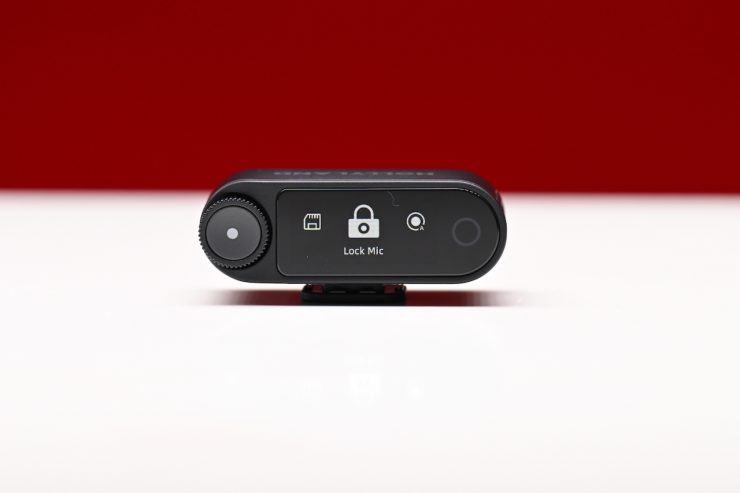
You can also lock the mic so that changes can’t be accidentally made.
In Auto Record, you can set it so that the TX units will automatically start recording once they are turned on.
In Auto Off, you can choose whether the units switch off automatically after 15 minutes if they are not being used, or set it to never.
Mic ID can be turned on or off. This is something that you would never actually turn off.
With the TX off, you press and hold the TX pairing button for 6 seconds to start pairing. The TX status light will quickly flash blue when in pairing. For the mobile version RX, connect it to a phone and hold the pairing button for 3 seconds to start pairing. The RX status light will quickly flash blue when in pairing.
There are also other settings like Light Control.
In Monitoring, you can choose between Wired and Wireless.
You can also choose the Monitoring Source-Camera, change the Monitoring Status between On or Mute, and change the Monitoring Volume.
In Earphone Connection, you can see if the Bluetooth headphones are paired or not.
If you need to pair them, you have to put them back in their case and then hold the button on the back of the case for 6 seconds to put them into pairing mode.
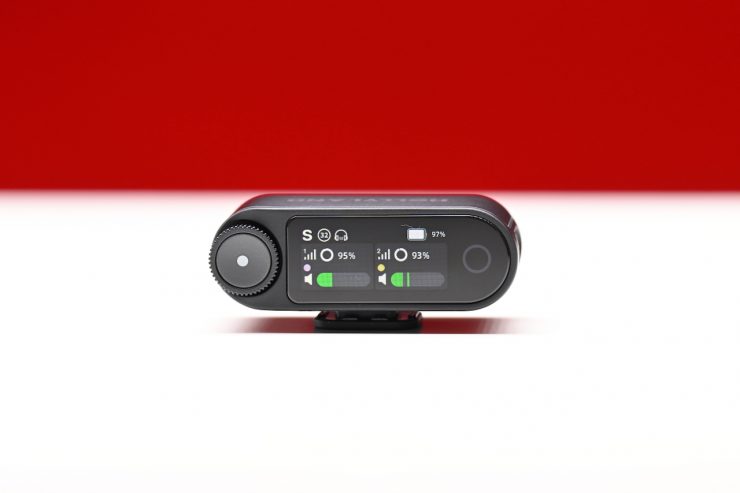
If the headphones are paired, you will see a little headphone icon on the screen of the RX unit.
LarkSound App
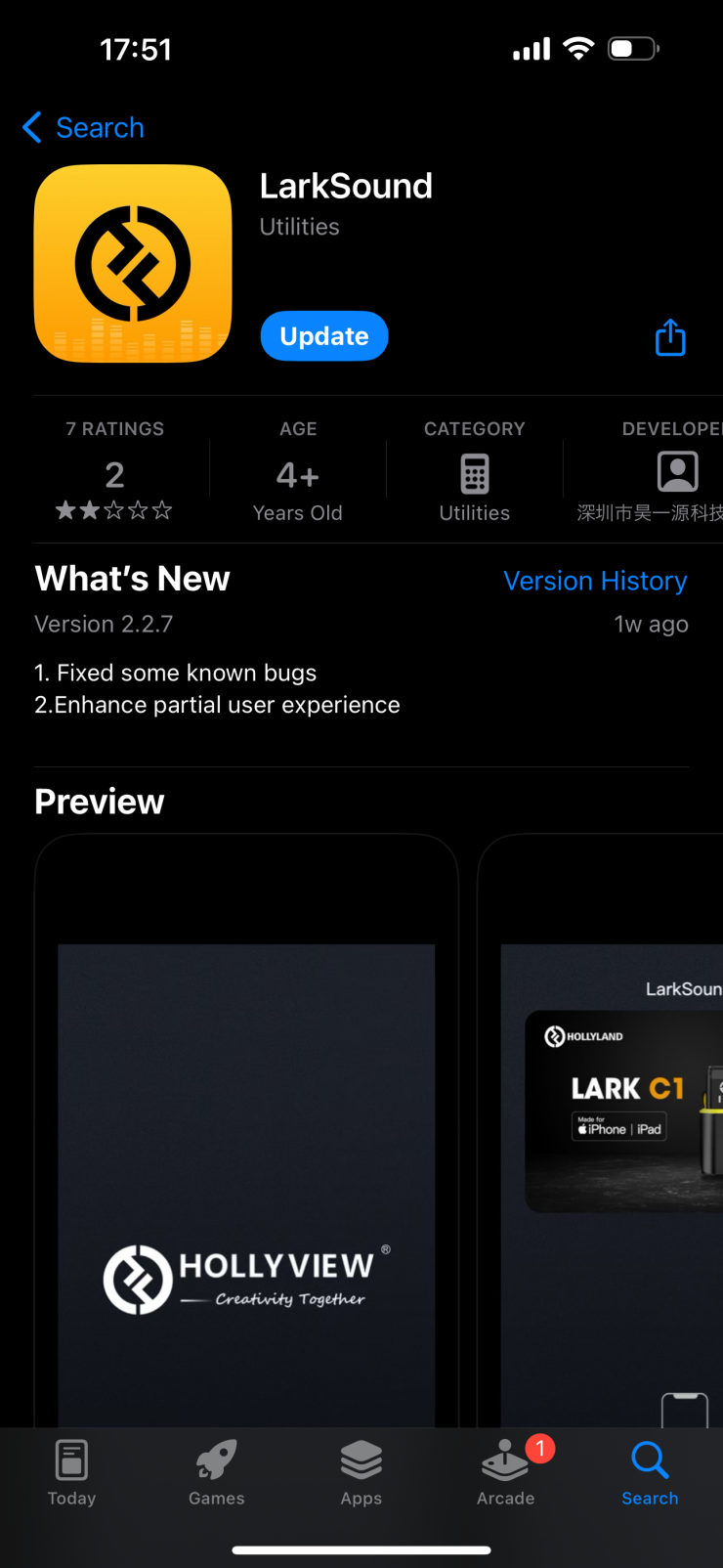
The LARK MAX 2 supports Hollyland’s LarkSound app, which allows for one-tap firmware updates, volume and noise cancellation adjustments, etc.
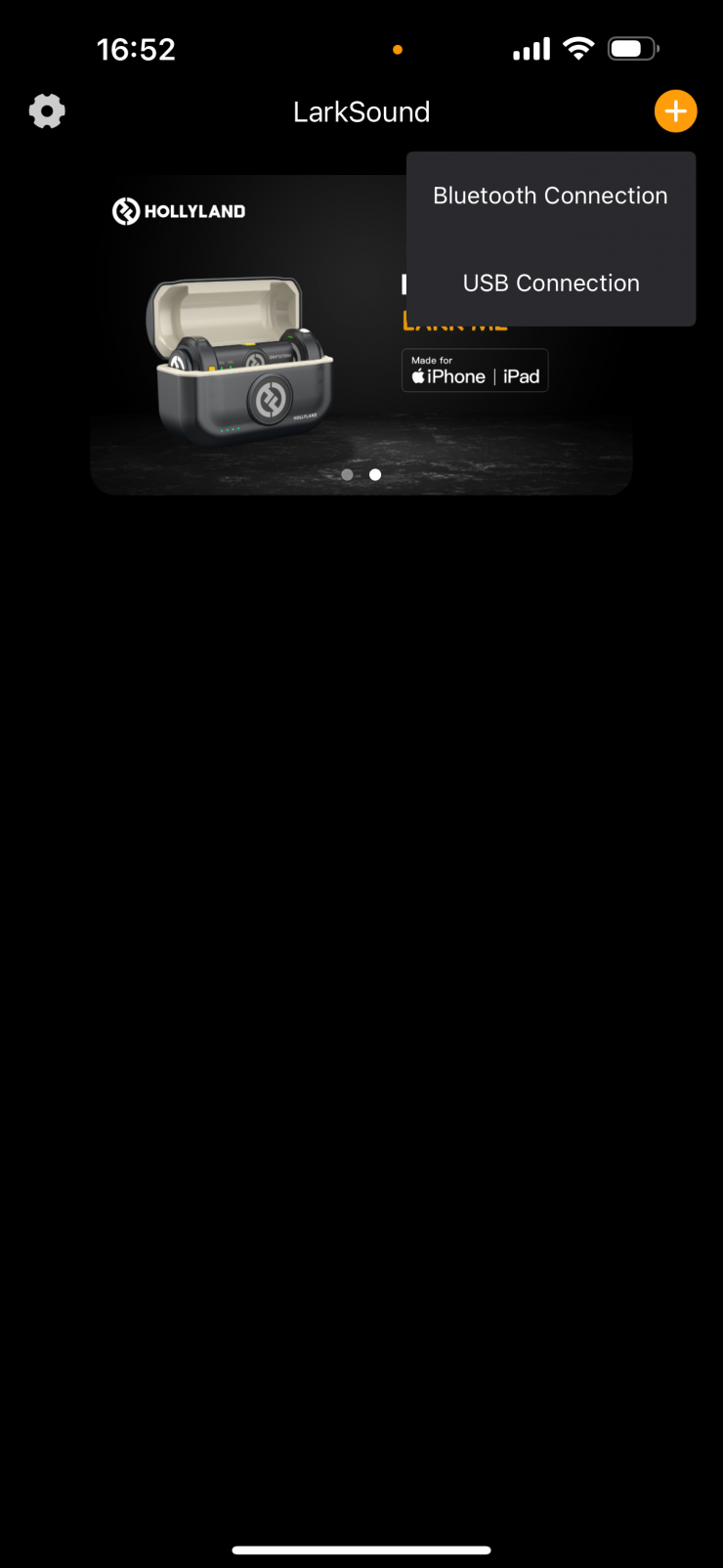
Now, you are supposed to be able to connect the RX unit to the app via Bluetooth, but I couldn’t get that to work. Instead, I had to physically connect my phone to the RX unit with a USB-C cable.
The app is pretty decent, and it allows you to change a wide array of parameters, including Mic gain, Bit Depth of the internal recordings and the USB output, the channel mode, and also the timecode settings.
How to set up the system to use it with 4 TX units

Hollyland gives you the ability to use up to 4 TX units with a single RX unit.
To be able to do this, you first need to go into the System settings on the RX unit and turn it on.
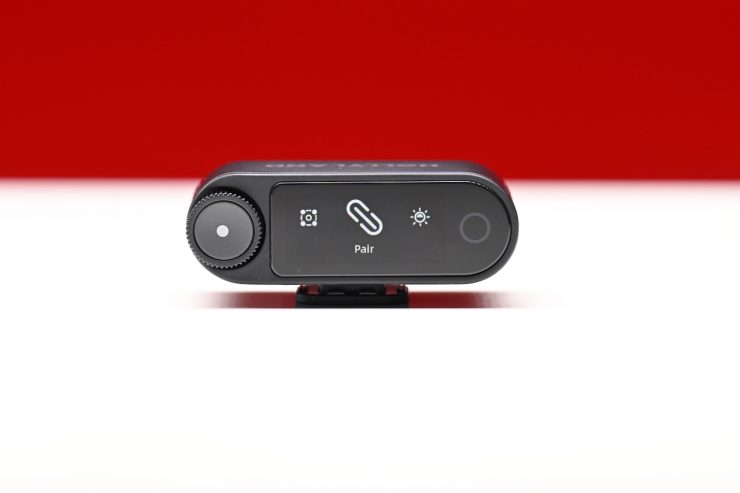
You then need to pair the two new TX units. To do this, you need to go into the Pair menu and activate it, and then hold the power on/off/pair button on the new TX units for 6 seconds. This will pair them to the system.
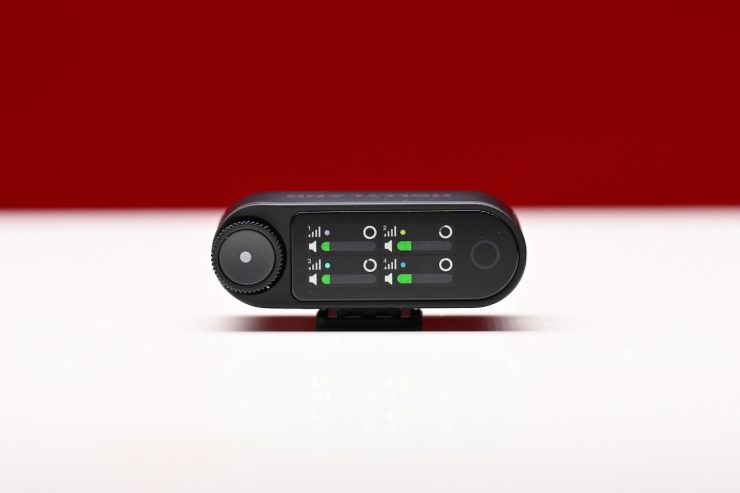
Once the units have successfully paired, you will see all four TX units on the RX screen.
The catch is, you can’t record four channels of audio via a 3.5mm stereo output cable. If you plug the RX unit into your camera, it will combine the output from two of the TX units to the left channel and the other two outputs from the other two TX units to the right channel.
It is important to note that wireless monitoring is unavailable in the 4 Mic & 1 RX mode.
If you happen to own a Sony camera, you can use the optional Hollyland Hot Shoe Adapter for LARK MAX 2 that attaches to the RX unit, which will pass audio directly into the camera without needing any cables. This, at least from my understanding, will let you record four channels of audio.
According to Hollyland, it works with the following cameras:
- Sony ZC-E1, ZC-E10
- Sony a9 III
- Sony a7 III, a7R IV, a7R V, a7CR, a7C II, a7 IV
- Sony a6700
- Sony FX3
Real World Performance
Claims and specifications are one thing, but how does the LARK MAX 2 actually perform in the real world? For me, there are several things that are important when using wireless microphone systems:
- Usability
- Reliability
- Audio quality
- Range
Usability
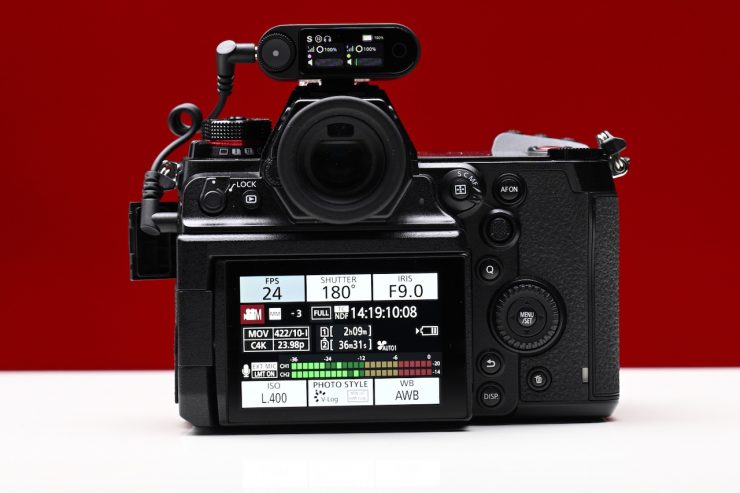
The overall usability of the LARK MAX 2 is pretty good, and it certainly offers a lot of features and functionality. However, the caveat with making a Swiss army knife-style product is that the more features you put in, the greater the chance there is for creating confusion and complexity. For a lot of users, all they really want is a solid, reliable, and easy way to capture wireless audio. While I am all for adding extra features and functionality in a product, I sometimes wish companies would just concentrate on making the main function of a product as good as it can actually be.
The LARK MAX 2 isn’t as straightforward and easy to use as the LARK M2. It is certainly a more complex system and
Hollyland does include a small Quick Guide in the kit, but I would have preferred to have seen a full manual as well. If you need the full manual, then you need to download it from Hollyland’s website.
The small size of the RX and TX units is nice, but this is offset by the overly large lavalier microphone. I think a lot of potential users would have preferred to have seen a much more streamlined and smaller lavalier included, even if it was at the expense of losing something else in the kit.
Reliability
This is a hard one for me to comment on because it depends on where you use the system. With any wireless system, it may work well in one place, but in another, it may not work at all. This is one of the pitfalls of using wireless mic systems that work on 2.4GHz.
As part of my audio tests, I wanted to see the quality and range with both TX units being close together to see if this affected the performance. It didn’t seem to have any effect; however, with any wireless system that uses 2.4GHz, the results can vary dramatically based on the environment you are in.
From my testing with the LARK MAX 2, I found that I didn’t have any problems with it not working or getting any interference as long as the RF and TX units stayed reasonably close together. You just shouldn’t confuse a system like this with more expensive wireless mics that work on dedicated frequency bands.
Range
To test the range of the system, I remained in line of sight of the RX and started walking away with the TX. I went around 165m / 541′ line of sight, and then it dropped out completely. 165m / 541′ was way less than the claimed range of 1115.5′ / 340m (Line of Sight). I found that if the TX unit was not facing the RX unit, then the range got greatly diminished. When I placed the TX units on the front of a subject and had them walk away from the RX, I started to get audio dropouts around 70m / 229′. The good news is that once the TX units are back in range, they will automatically reconnect with the RX.
Despite not meeting the claimed operating distance, I don’t think a lot of people will be using a system like this over big distances anyway.
As a comparison, the last 2.4GHz system I tested in this same spot was the Ulanzi U-Mic, and I was able to get 350m / 1148′ without any issues. This was incredibly impressive, and it blew away any previous 2.4GHz wireless audio system I have ever tested. As another comparison, when I tested the Rode Wireless Go II in the exact same place, I only got 140m / 459ft line of sight before the audio started to drop out.
Usually, you are only going to be able to obtain the claimed maximum operating range on flat, open terrain where there is little wireless interference. I did this test in the middle of Tokyo, which is one of the most heavily congested RF and Wi-Fi traffic areas on the planet. I do these tests in the exact same place every time. It is important to note that the distance you can use them over will be determined by the environment you are in. In the environment you are in, you may get better or worse results than I.
Audio quality
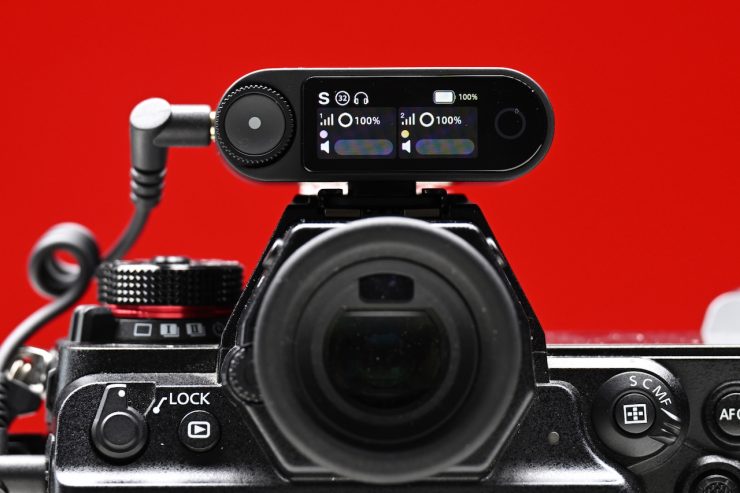
This is a hard one to comment on. There are so many factors that can determine audio quality, including what microphone you are using, what camera you are using, and how good your recording devices’ pre-amps are etc.
When you use the built-in omnidirectional condenser capsule on the TX units, the quality is actually pretty decent. I wouldn’t say it is outstanding, but it’s certainly good enough for a lot of applications. If you use it outdoors, you need to use a windshield, as it picks up the slightest bit of breeze.
I didn’t personally think that the Lavalier microphone sounded any better than the built-in omnidirectional condenser capsule on the TX. This somewhat surprised me.
I did some tests using the LARK MAX 2, and I recorded audio internally to the TX units and into a Panasonic LUMIX S1H via the 3.5mm input from the RX unit. I also tested the included lavalier microphone, and I did tests at various settings. The LARK MAX 2 TX and the Lavalier were placed on my shirt in the exact same place for all of the tests.
Now, as I mentioned earlier, audio quality depends on so many variables. Mirrorless hybrids don’t tend to have very good pre-amps, and neither do a lot of the more affordable digital cinema cameras.
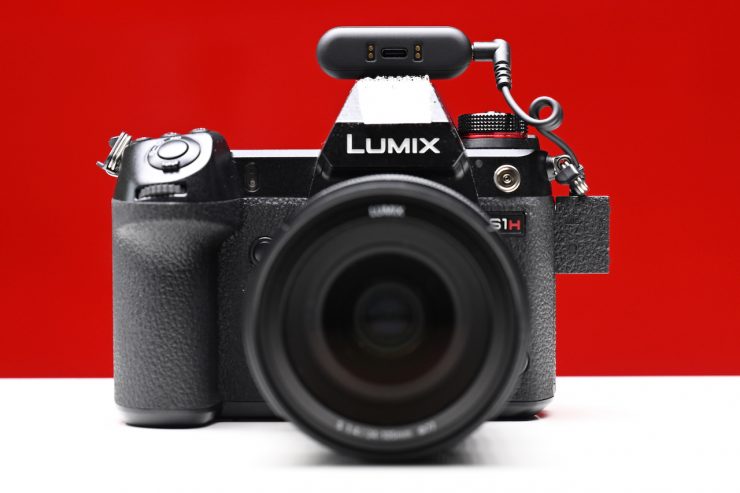
What is interesting to note, and this will be good news to users of mirrorless and DSLR cameras, is that the output level coming out of the RX unit is reasonably high. What this means is you can set the input level on your mirrorless or DSLR camera really low, and the signal coming out of the LARK MAX 2 is high enough that it produces the correct recording level.
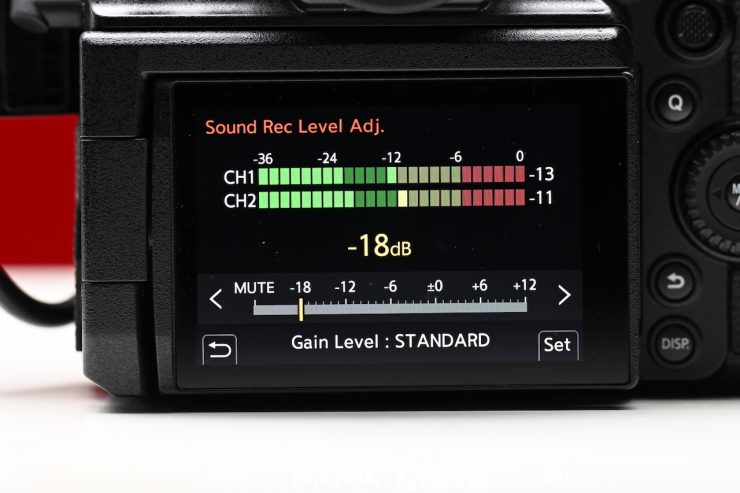
With the Panasonix S1H, I could set the input level to -18db and I only had to set the gain on the LARK MAX 2 TX to around 4db.
As most DSLR and mirrorless cameras have terrible pre-amps, you want to set the input level on those cameras as low as possible so you get nice, clean audio that doesn’t have any noise.
What do you get?
The Hollyland LARK MAX 2 Ultimate Combo 2-Person Wireless Microphone System for Cameras and Mobile Devices contains the following items:
- 2 x Hollyland LARK MAX 2 Clip-On Wireless Microphone Transmitter (Space Gray, 2.4 GHz)
- Hollyland LARK MAX 2 Camera-Mount Wireless Receiver (Space Gray, 2.4 GHz)
- Hollyland LARK MAX 2 USB-C Plug-in Receiver (Space Gray, 2.4 GHz)
- 2 x Hollyland OWS Wireless Monitor Earphones (Space Gray, Pair, 2.4 GHz)
- 2 x Omnidirectional Lavalier Microphone
- 2 x Furry Windshield
- USB-C to Lightning Cable
- USB-C to USB-C Cable
- 3.5mm TRS to 3.5mm TRS Cable
- 3.5mm TRS to 3.5mm TRS Cable (2.8″)
- 2 x USB-C to 3.5mm TRS Adapter
- 2 x Magnetic Silicone Sleeve
- 2 x Magnet
- Hollyland LARK MAX 2 Charging Case (Space Gray)
- OWS Earphone Charging Case
- Limited 1-Year Manufacturer Warranty
Price & availability
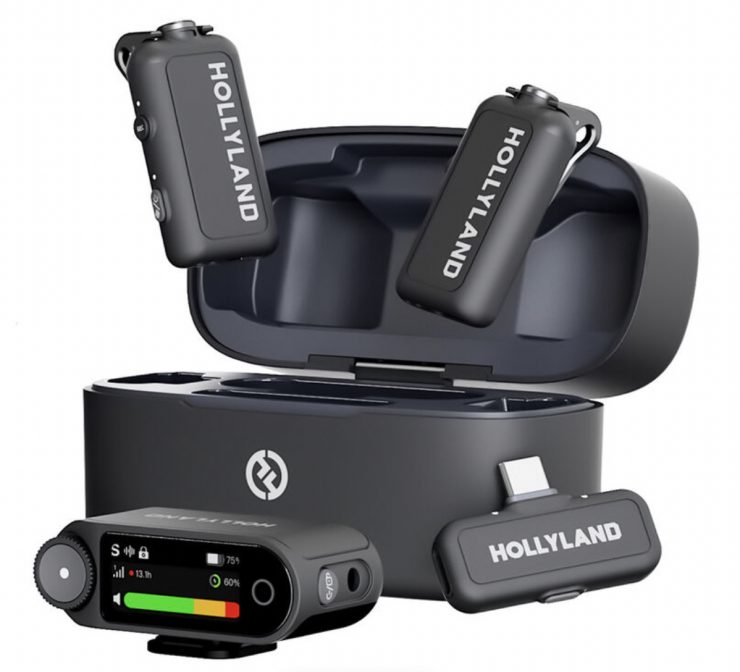
The Hollyland LARK MAX 2 Ultimate Combo 2-Person Wireless Microphone System for Cameras and Mobile Devices is $279 USD, which represents excellent value for money.

The Hollyland LARK MAX 2 Combo 4-Person Wireless Microphone System for Cameras and Mobile Devices is $319 USD.
Competition
There is a lot of competition in the 2.4GHz wireless audio space, and the feature sets and capabilities tend to differ from system to system. Below are just some of the available systems that could be considered competition:
- RODE Wireless GO (Gen 3) 2-Person Compact Digital Wireless Microphone System/Recorder $284.90 USD
- RODE Wireless PRO 2-Person Clip-On Wireless Microphone System/Recorder with Lavaliers (2.4 GHz) $335 USD
- RODE Wireless GO II 2-Person Compact Digital Wireless Microphone System/Recorder $209 USD
- DJI Mic 2 $349 USD
- PicoMic 2 Pro & Receiver Kit $249 USD
- Synco WAir-G1-A2 Ultracompact 2-Person Digital Wireless Microphone System for Mirrorless/DSLR Cameras (2.4 GHz) $49.99 USD
- Ulanzi U-Mic AM18 Wireless Pro Microphone $99.95 USD
- Comica Audio BoomX-D D2 Ultracompact 2-Person Digital Wireless Microphone System for Mirrorless/DSLR Cameras (2.4 GHz) $149 USD
- Samson Go Mic Mobile Dual Channel Lavalier System Kit $249.95 USD
- Godox MoveLink Mini UC 2-Person Wireless Microphone System for Cameras & Mobile Devices $119 USD
Conclusion
The Hollyland LARK MAX 2 offers a lot of features and functionality, and it is good to see Hollyland doing things that other companies are not. The product certainly offers a lot of bang for your buck.
You have to applaud Holland for thinking out of the box and coming up with something different. These affordable 2.4GHz wireless audio systems continue to get better and better.
I like the included charging cases as they make charging and storing the system very easy.
The Hollyland OWS Monitor Earphones are a nice addition. They work well, and there is only a tiny bit of latency, so they are actually usable as a wireless monitoring solution.
For the most part, the system is easy to use; however, there are a lot of menus, and I did find it to be a little overly complex. That is the caveat with adding so many features: you need a lot of extra menus and a lot of extra accessories. I don’t personally like how the timecode integration has been set up, and it needs improvement.
For an affordable wireless audio system, the audio quality is decent enough. One of the negative aspects was that the operating range wasn’t anywhere near what was claimed, but again, the performance of wireless systems working in the 2.4GHz spectrum can vary greatly depending on where you use them.
Hollyland has certainly shown innovation with the LARK MAX 2, and despite some of the small issues I found, it is arguably hard to beat, given its feature set and versatility, if you are looking for an affordable wireless audio system.
